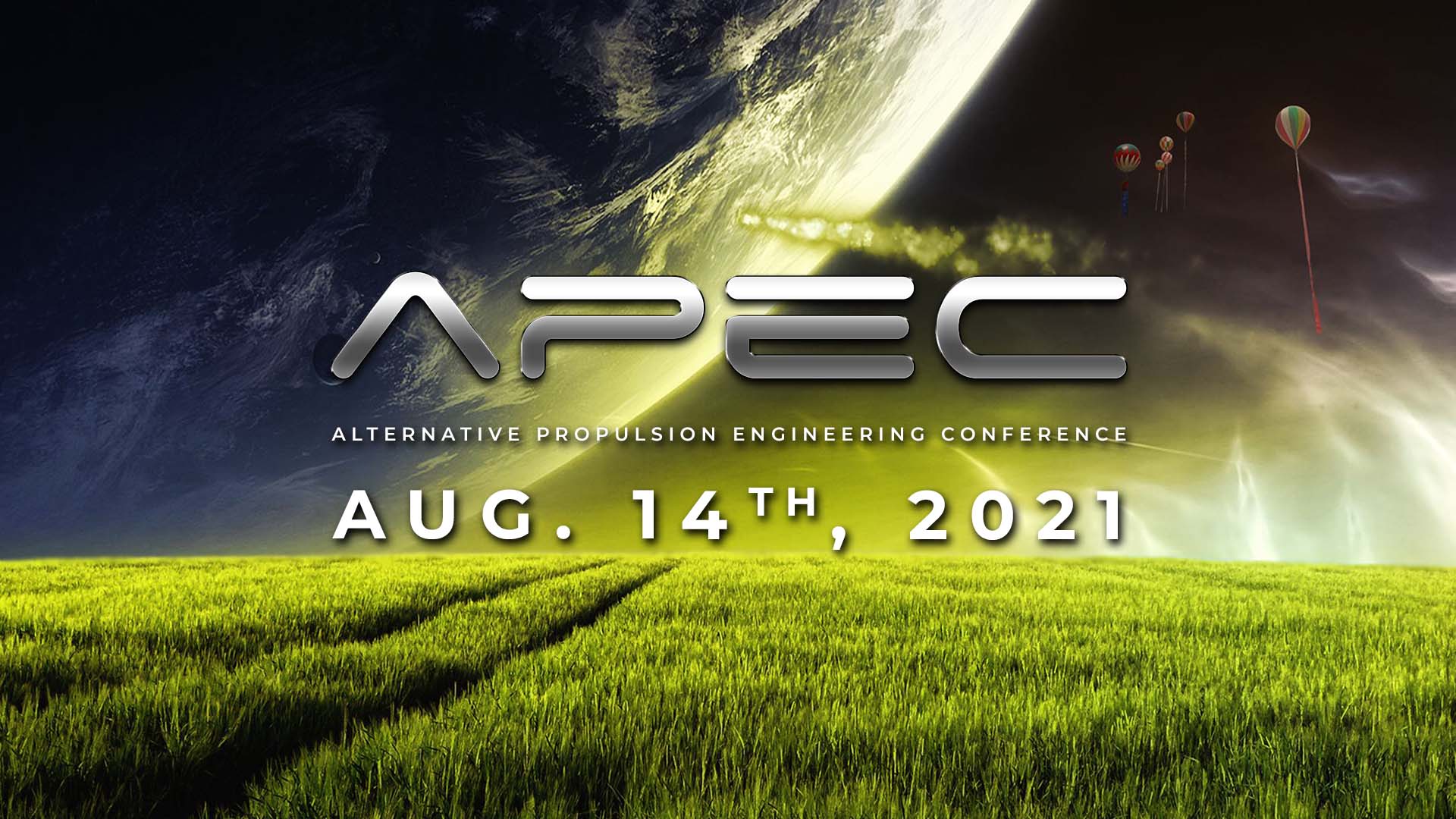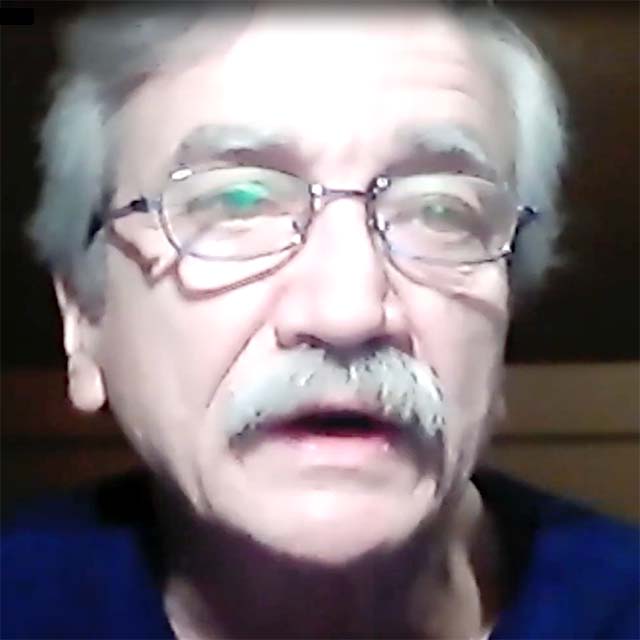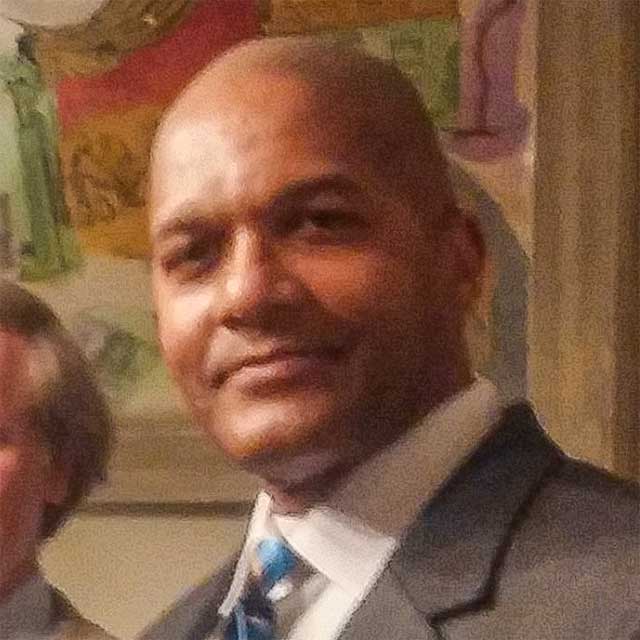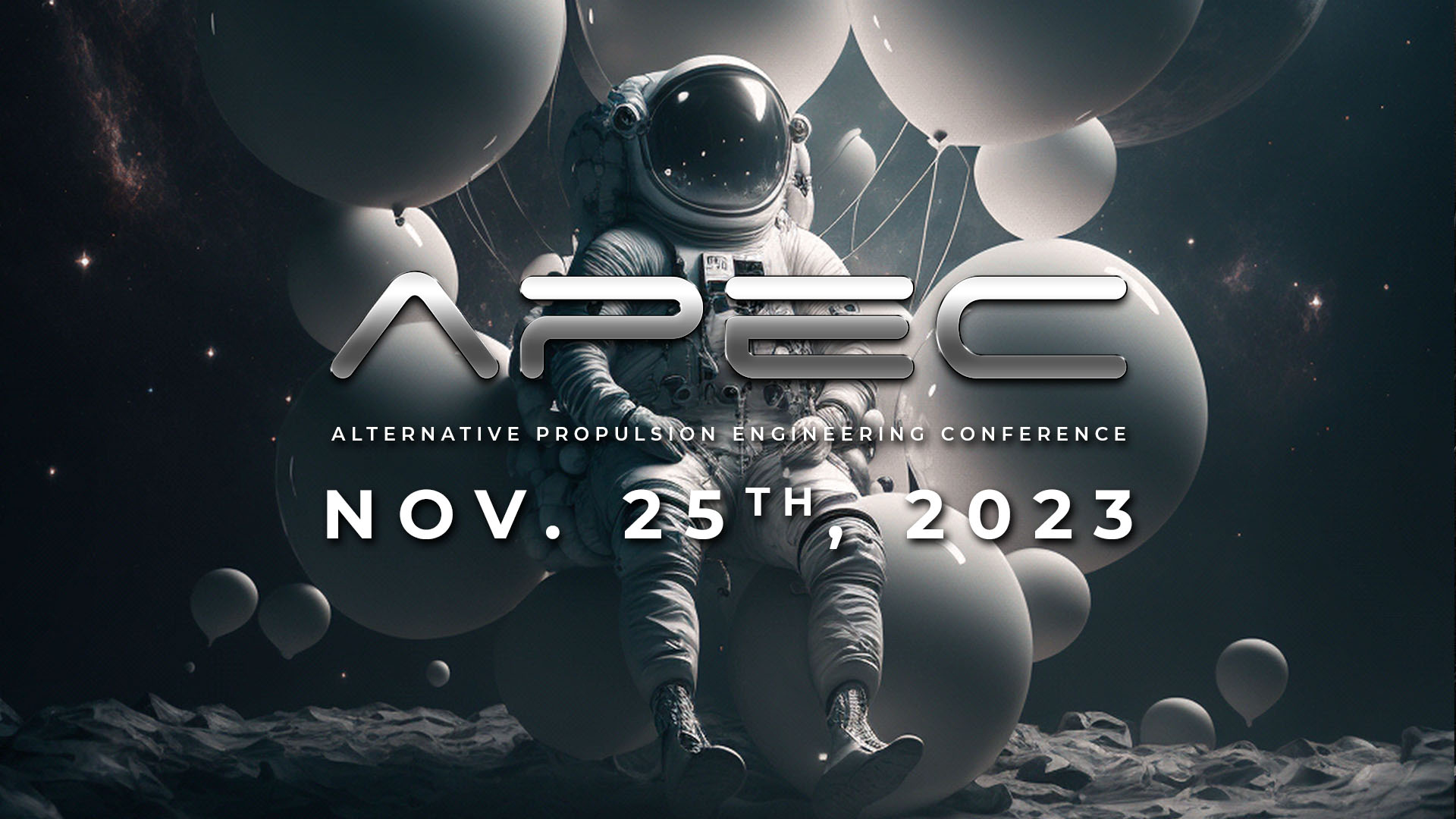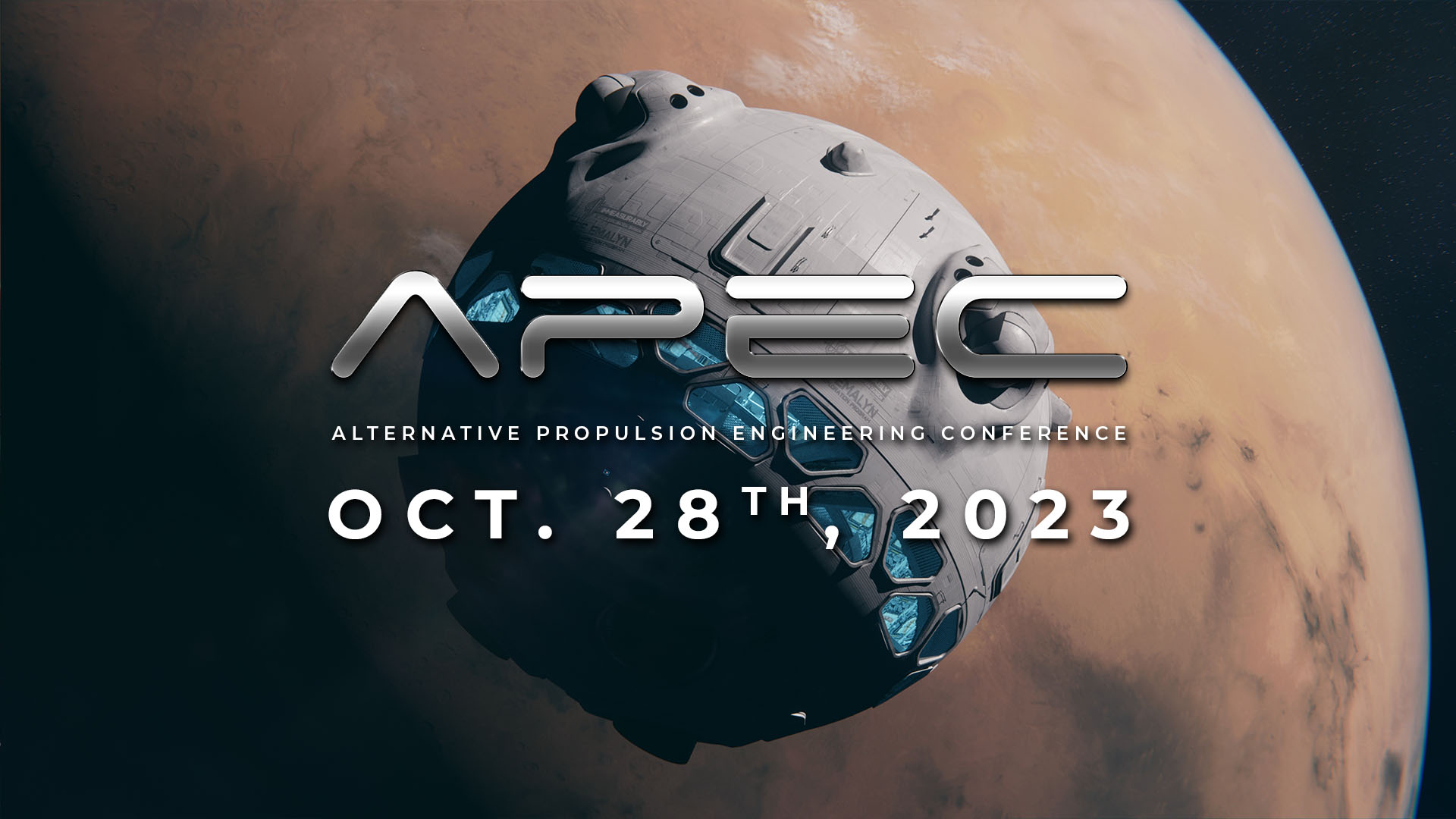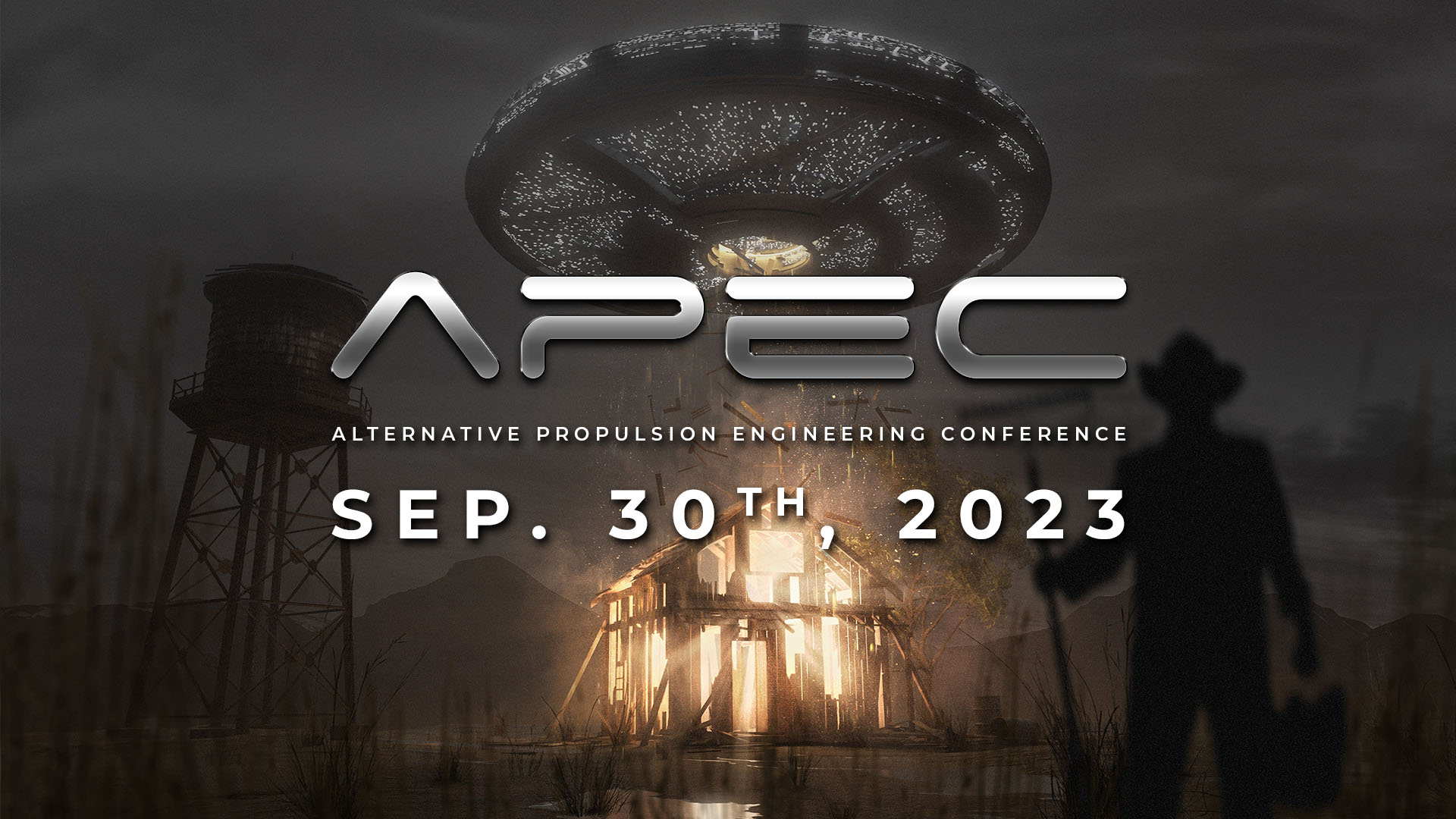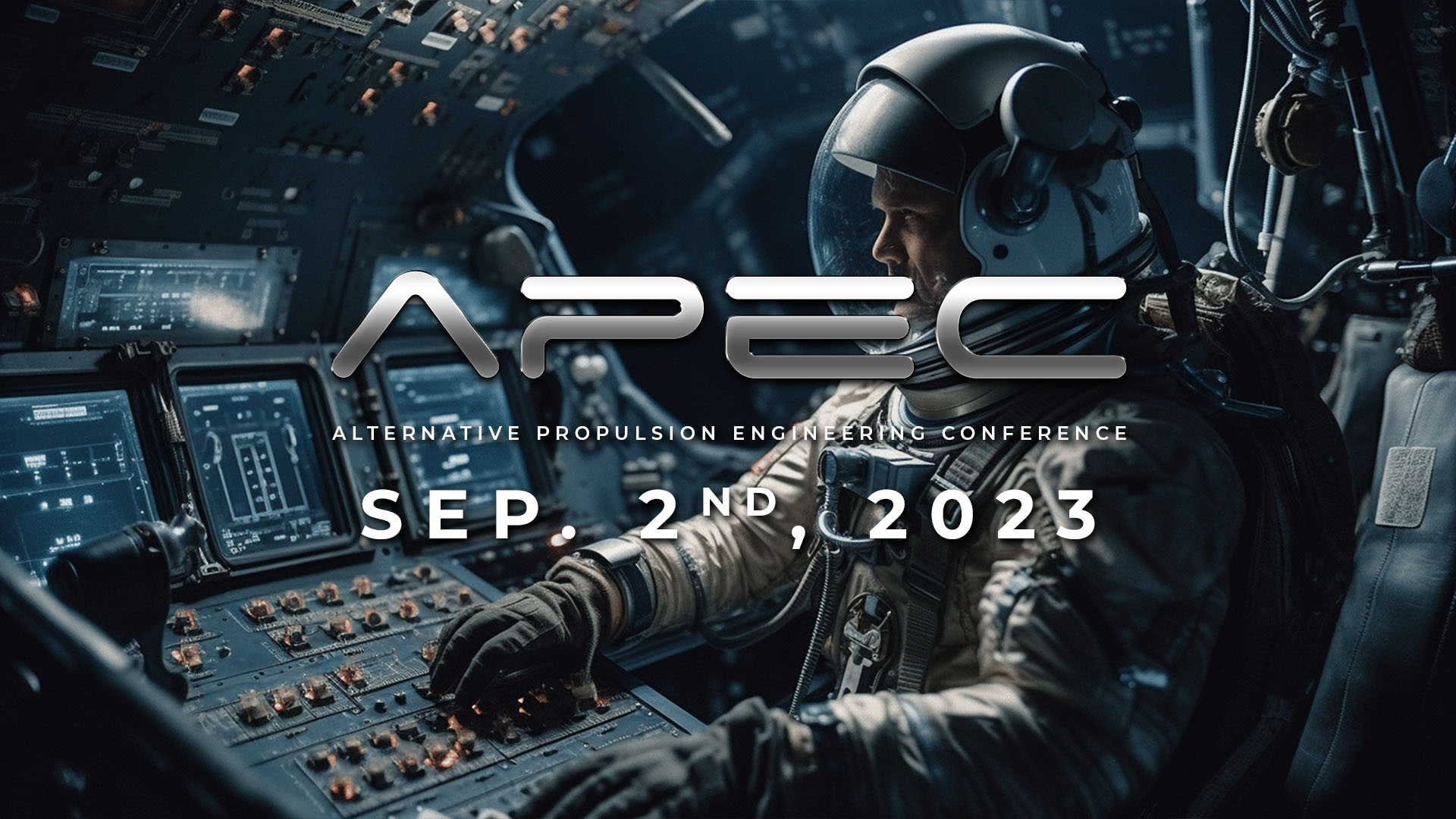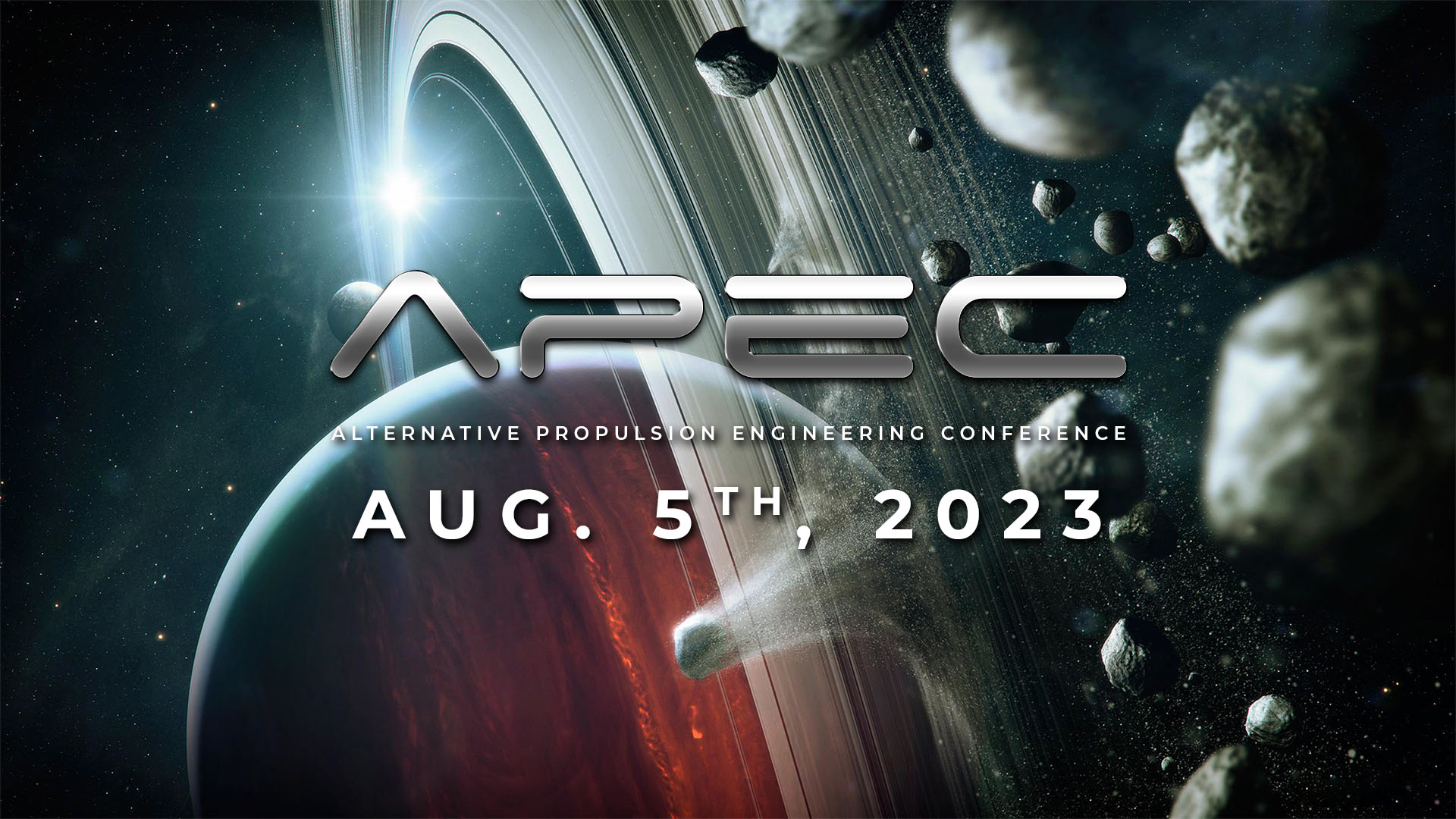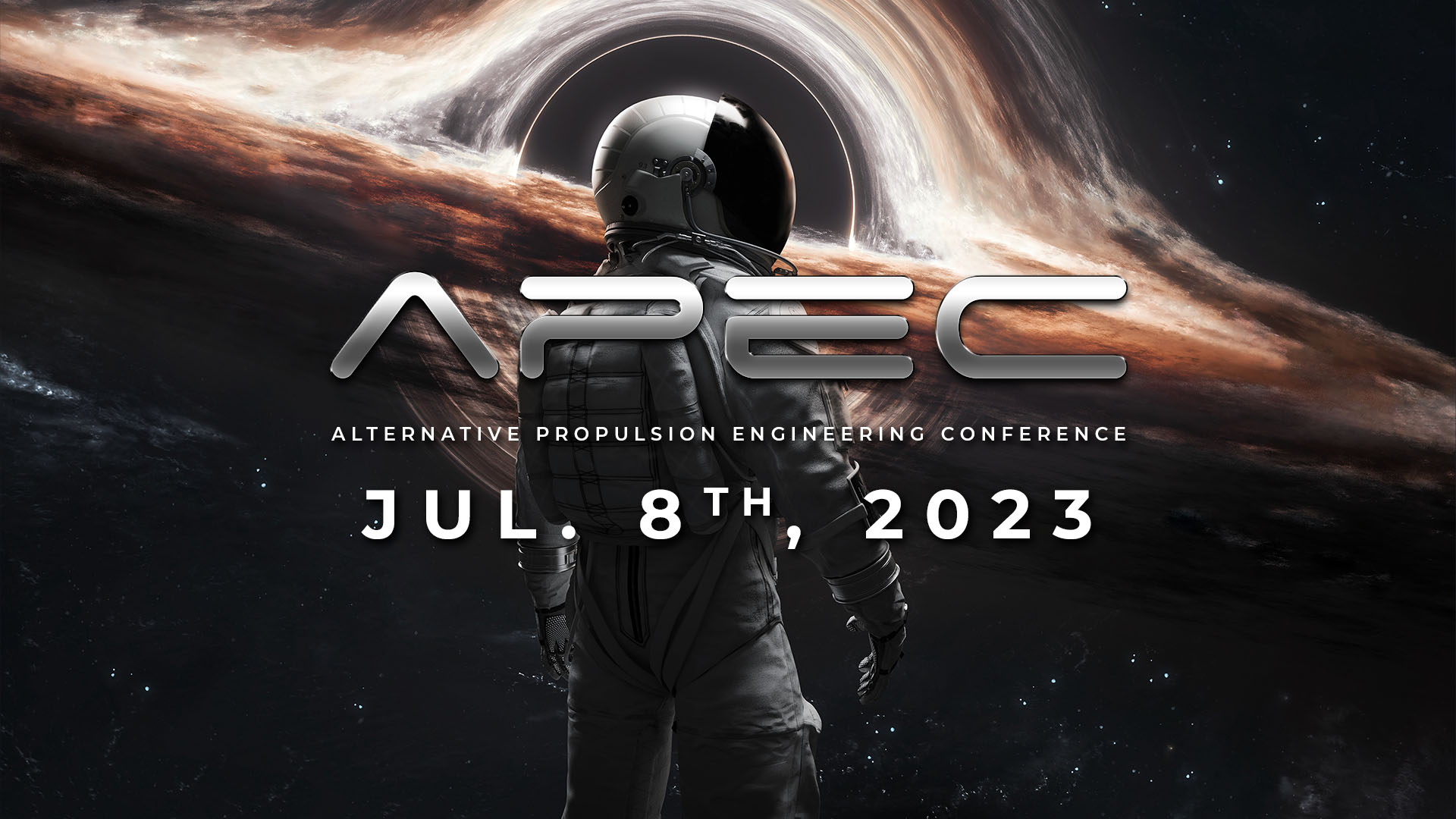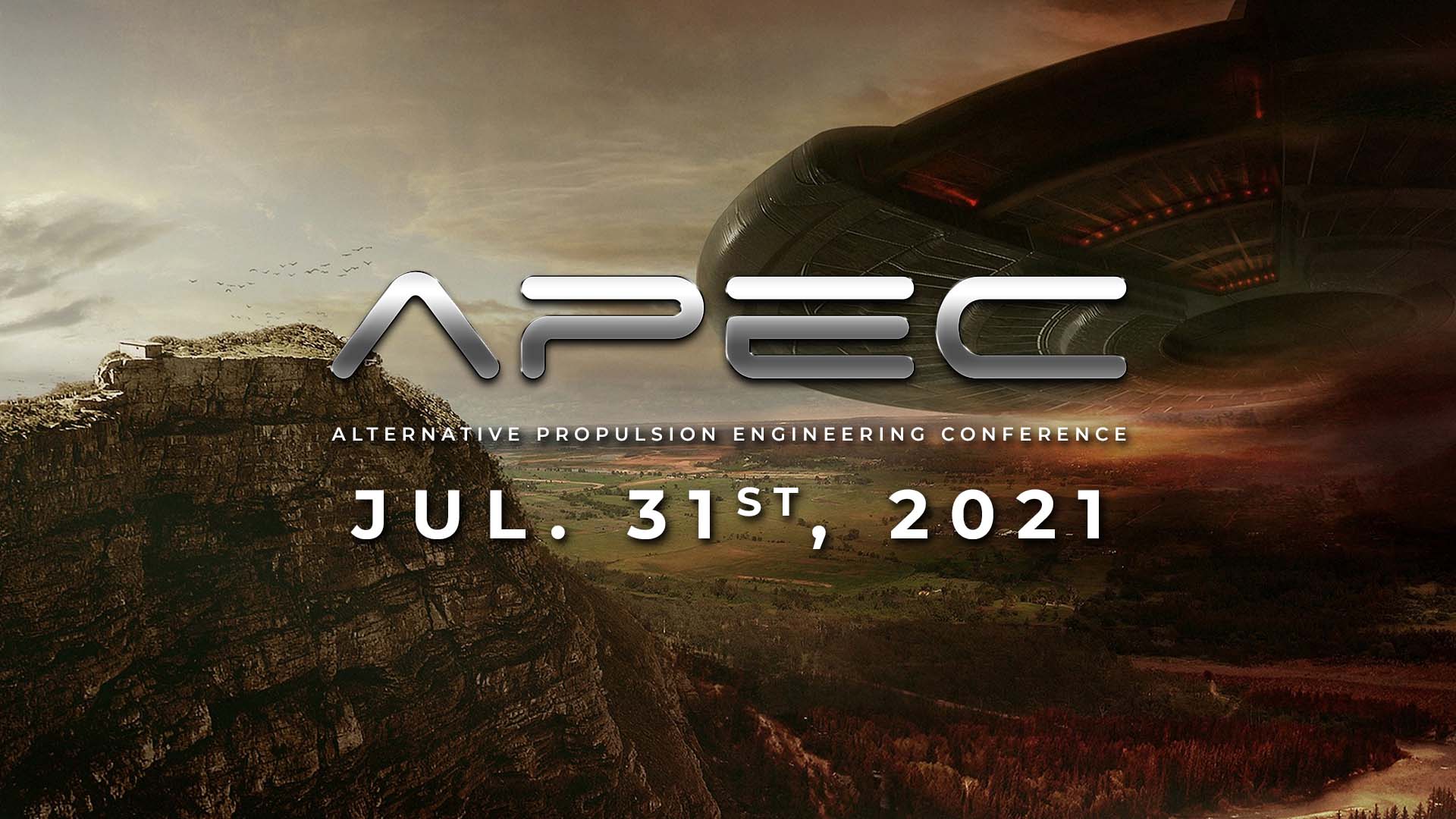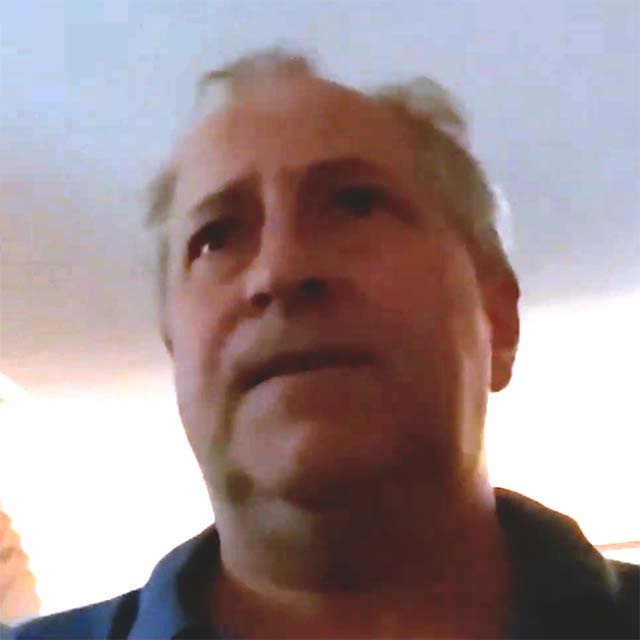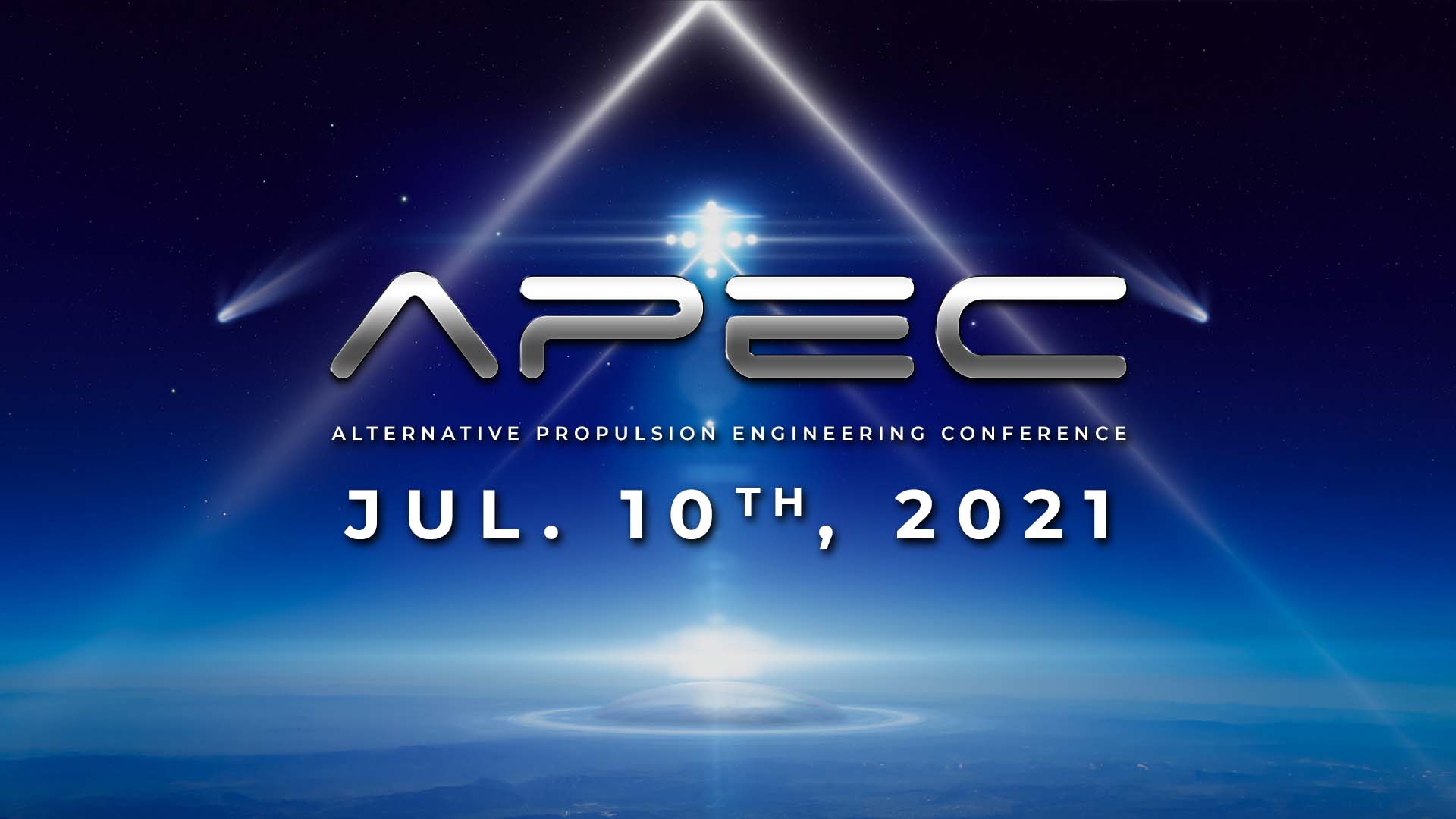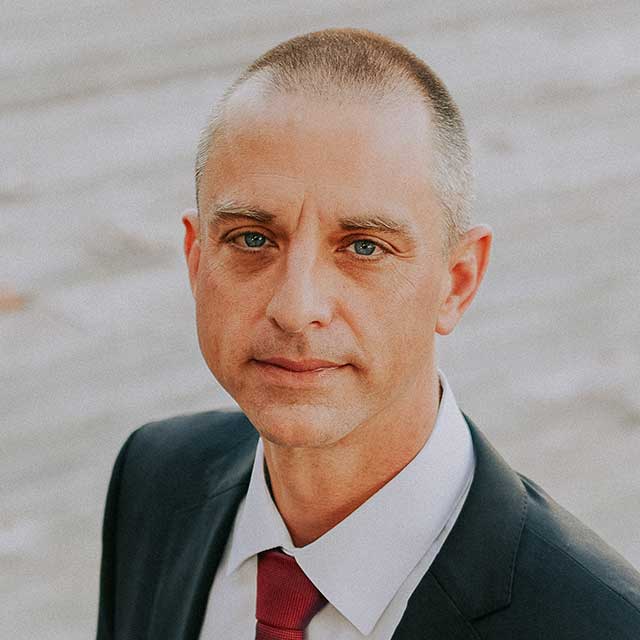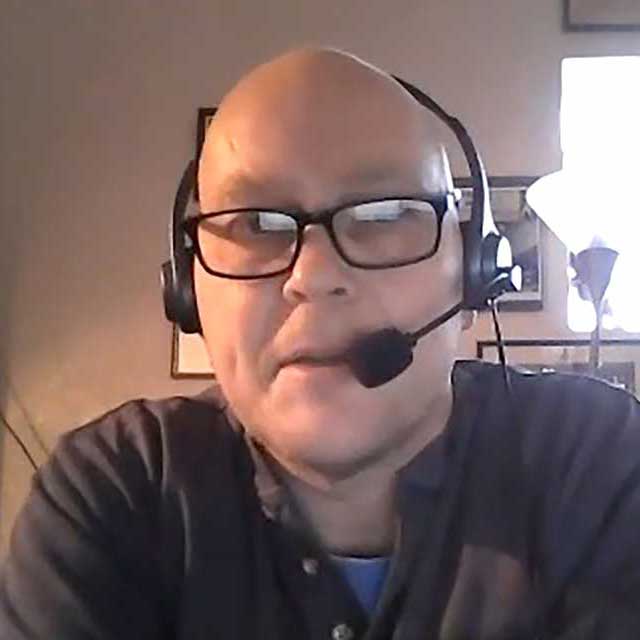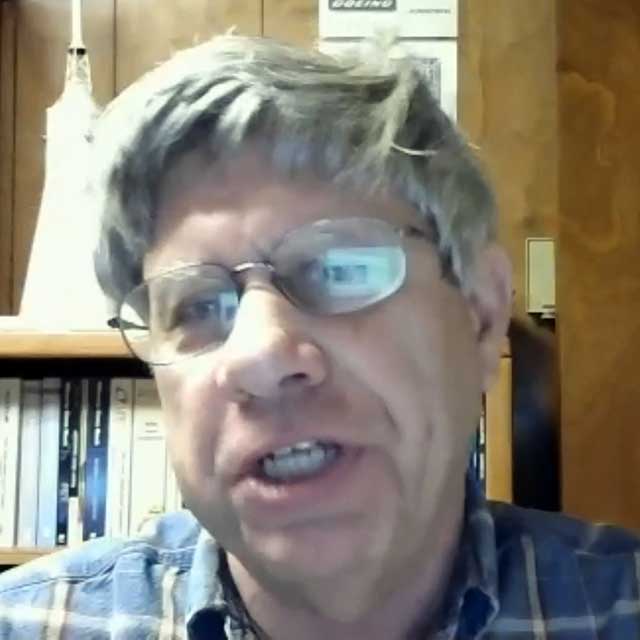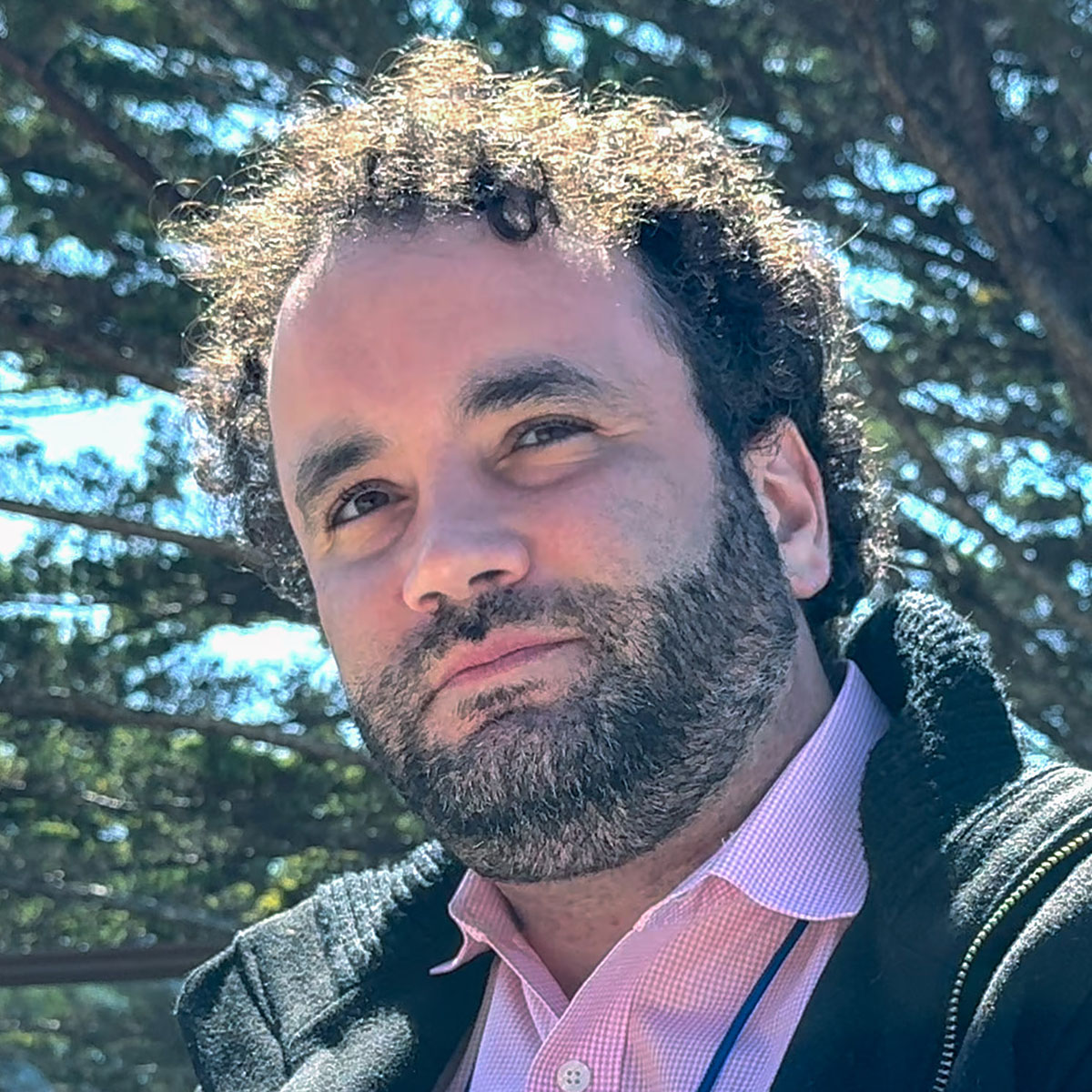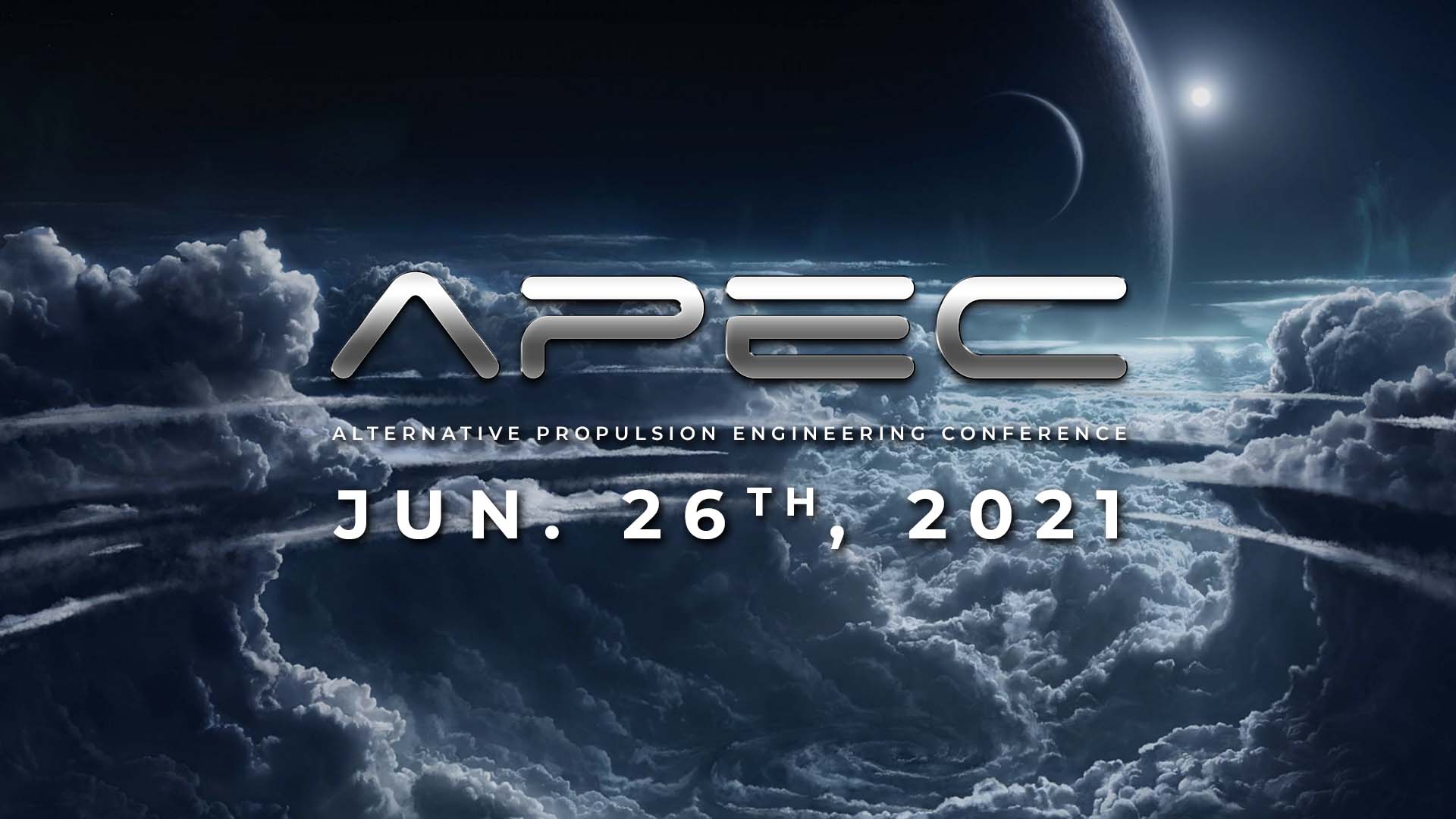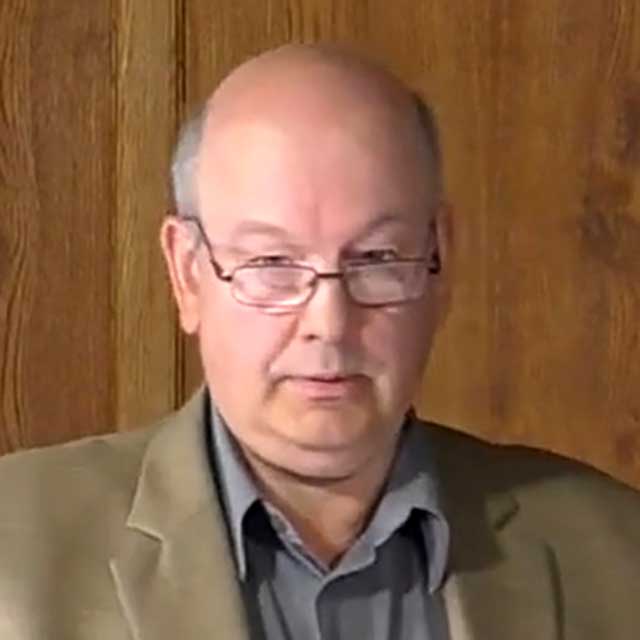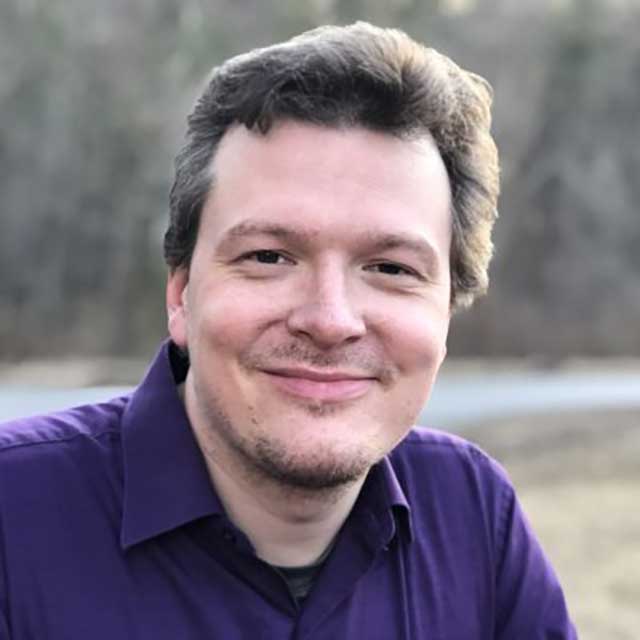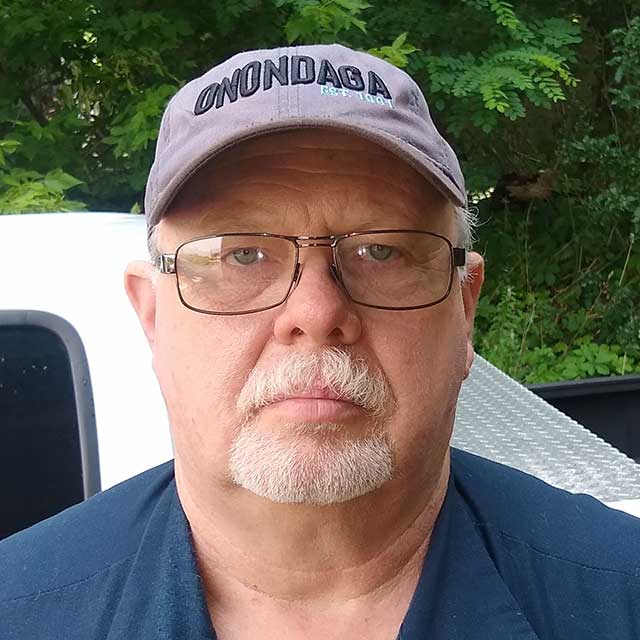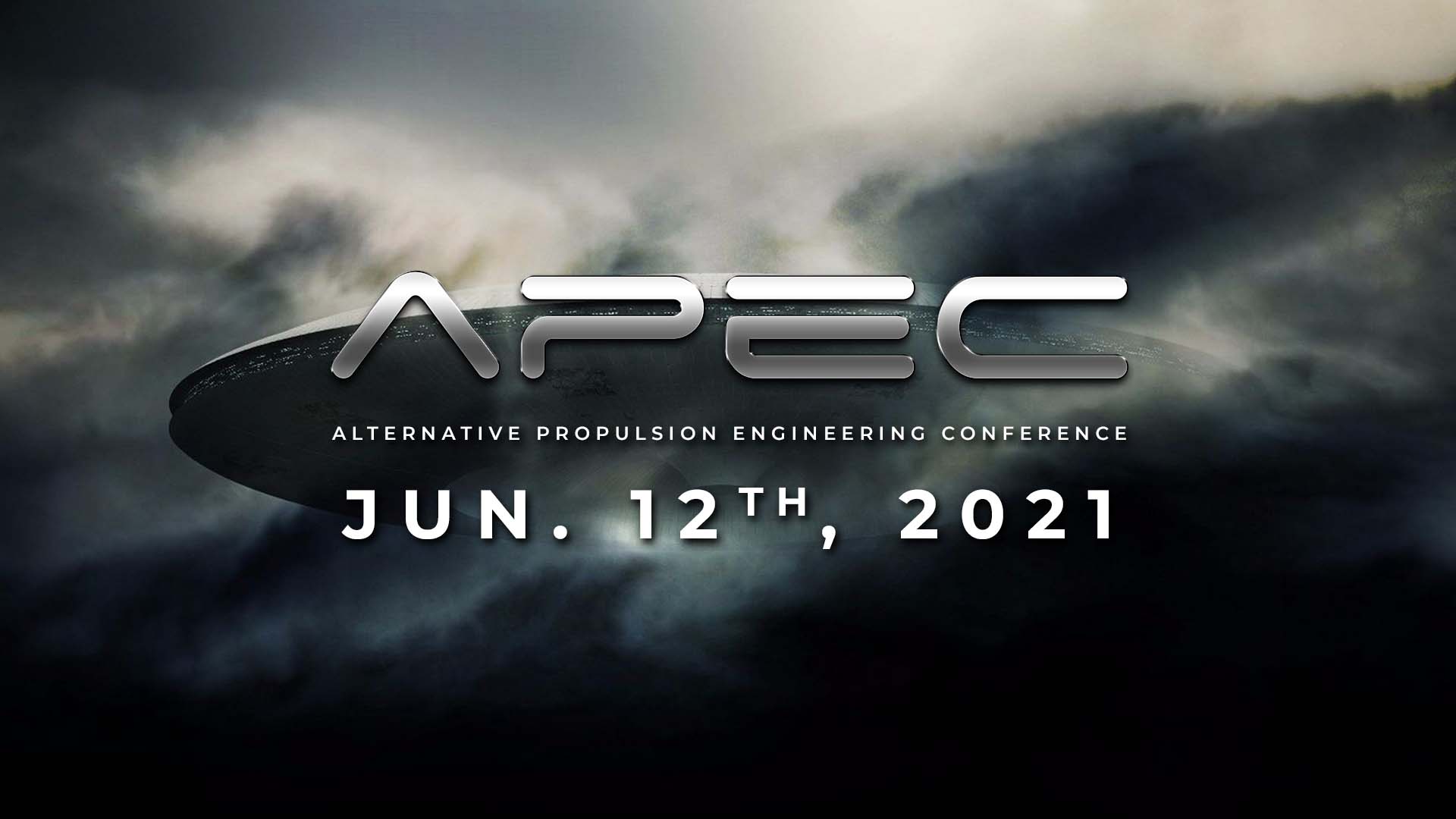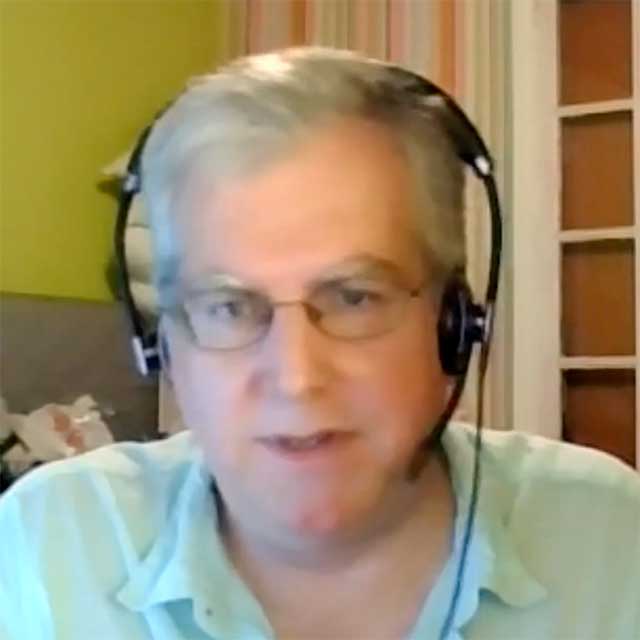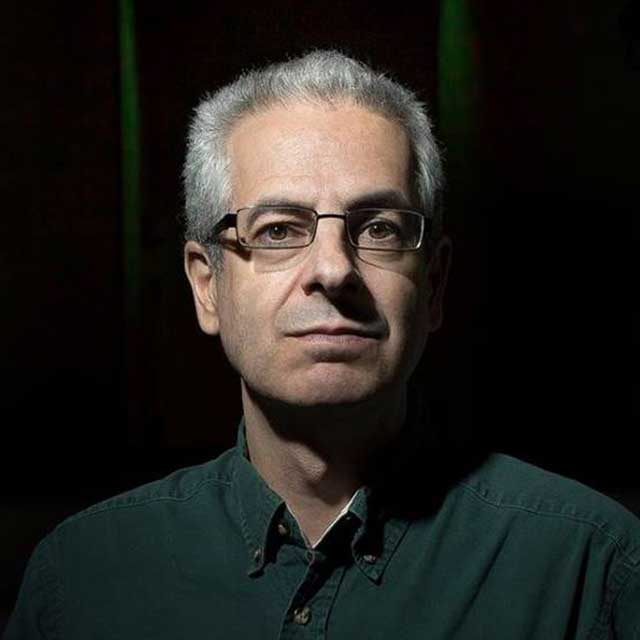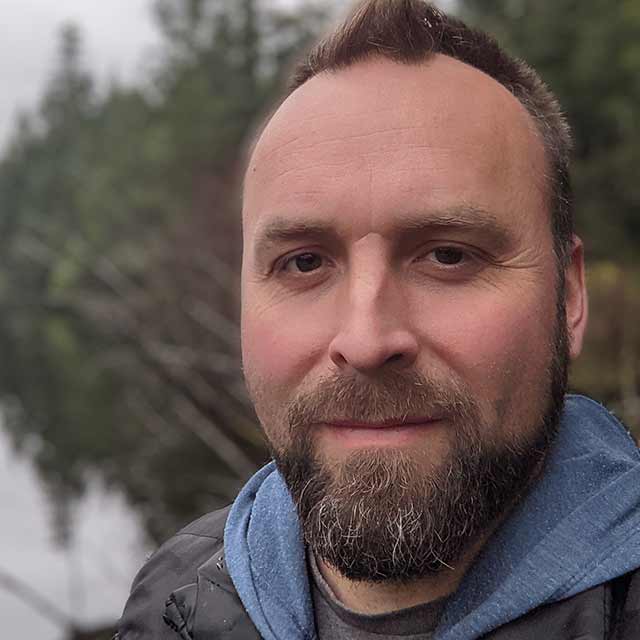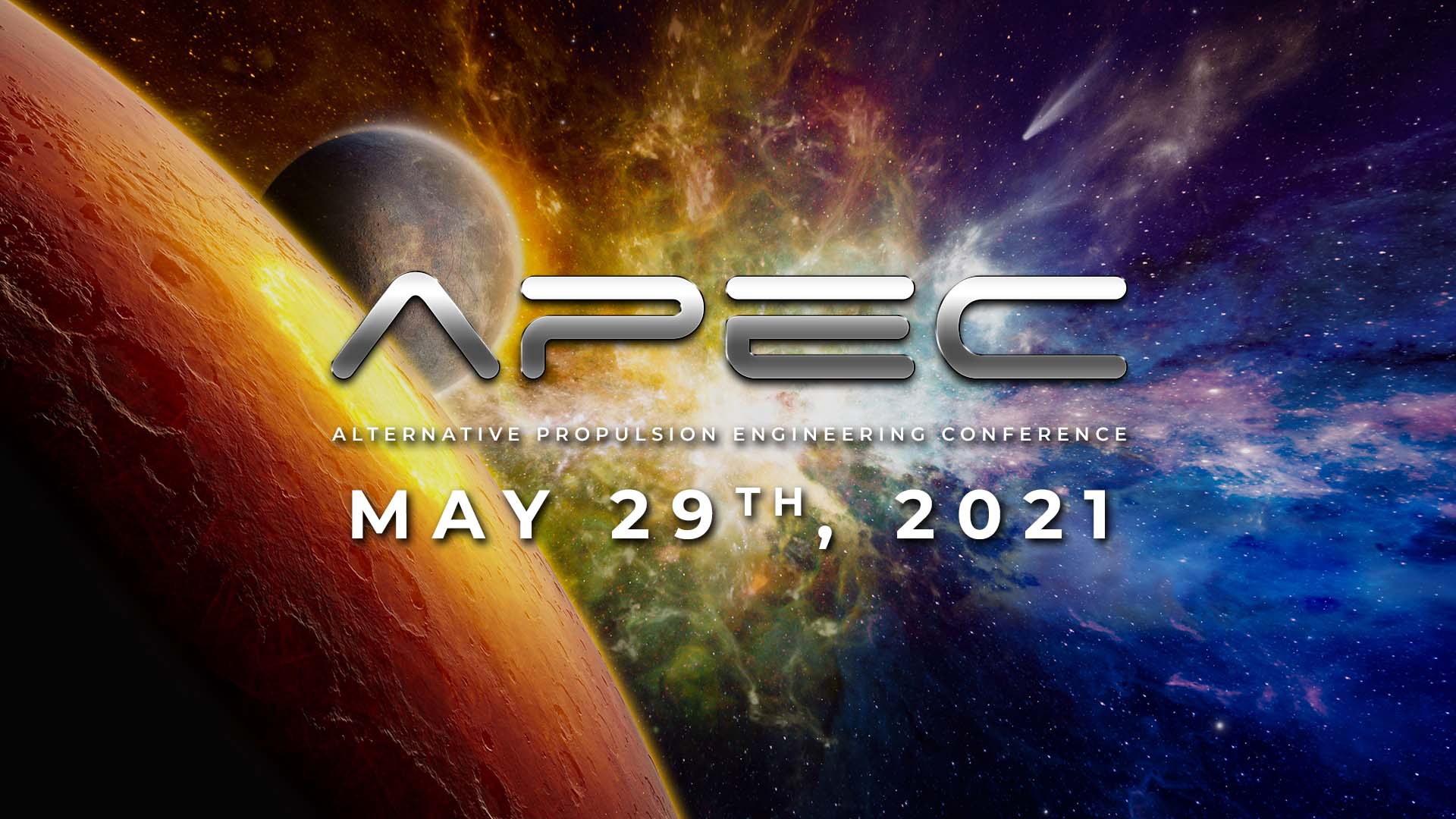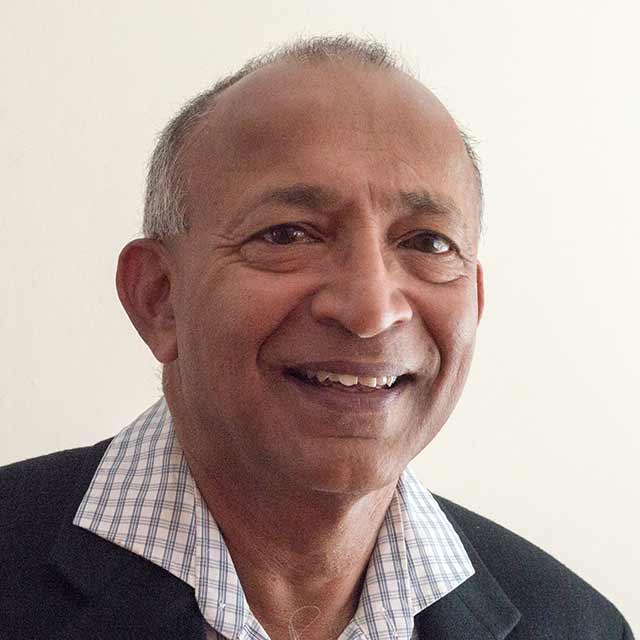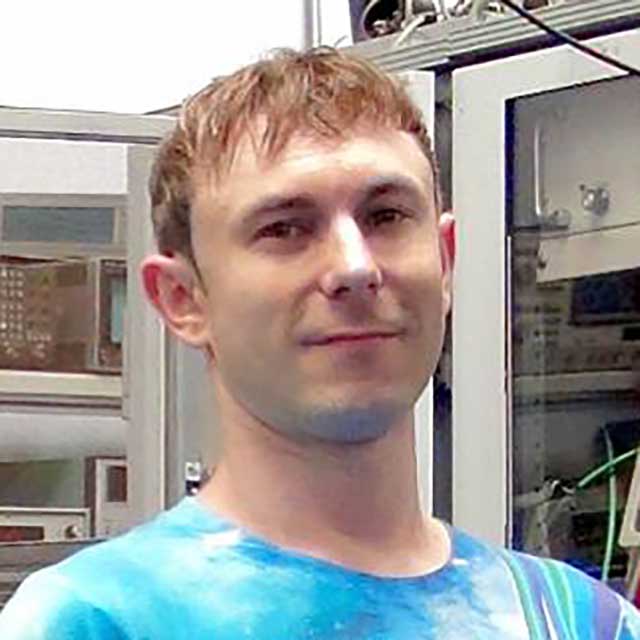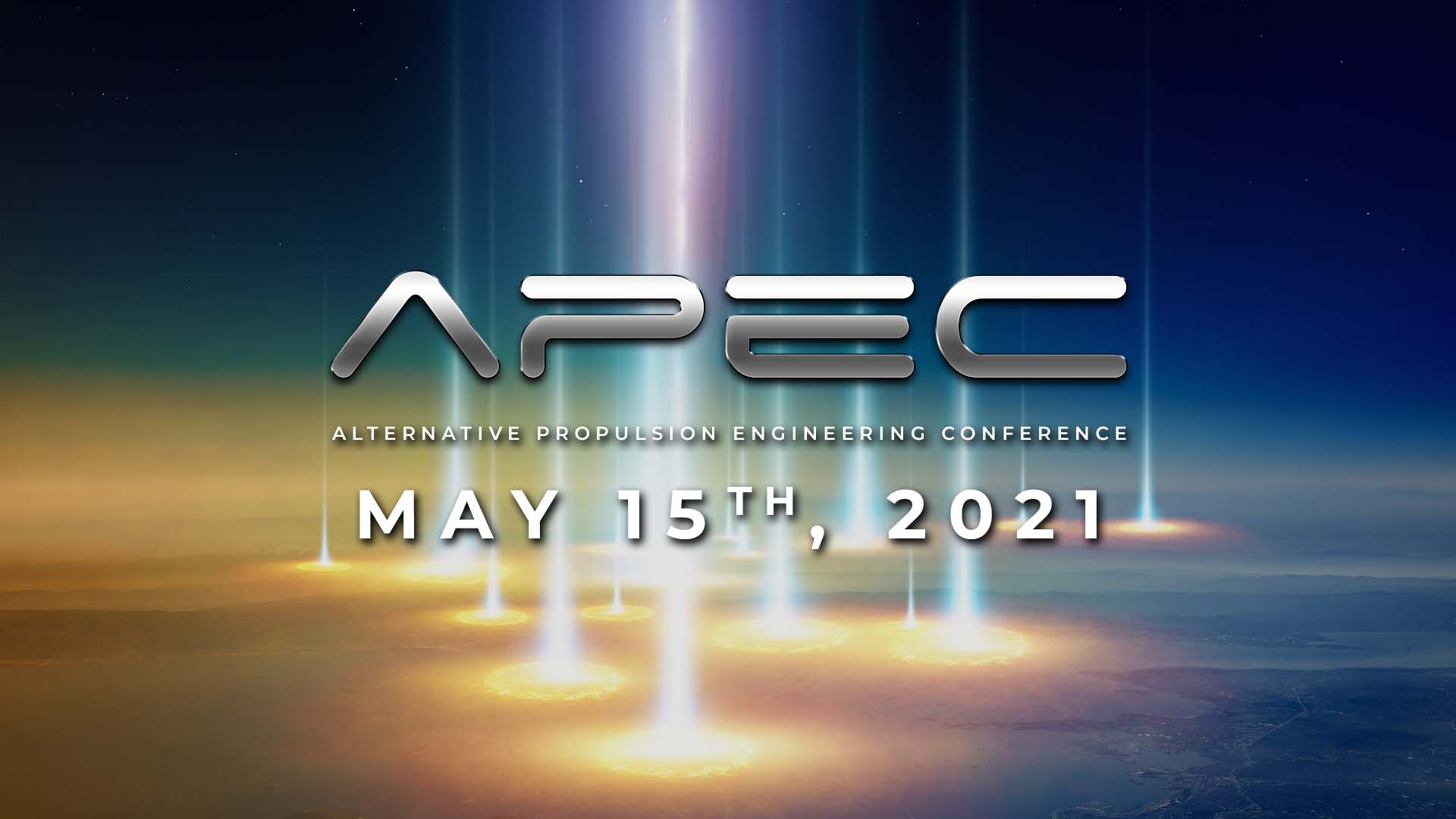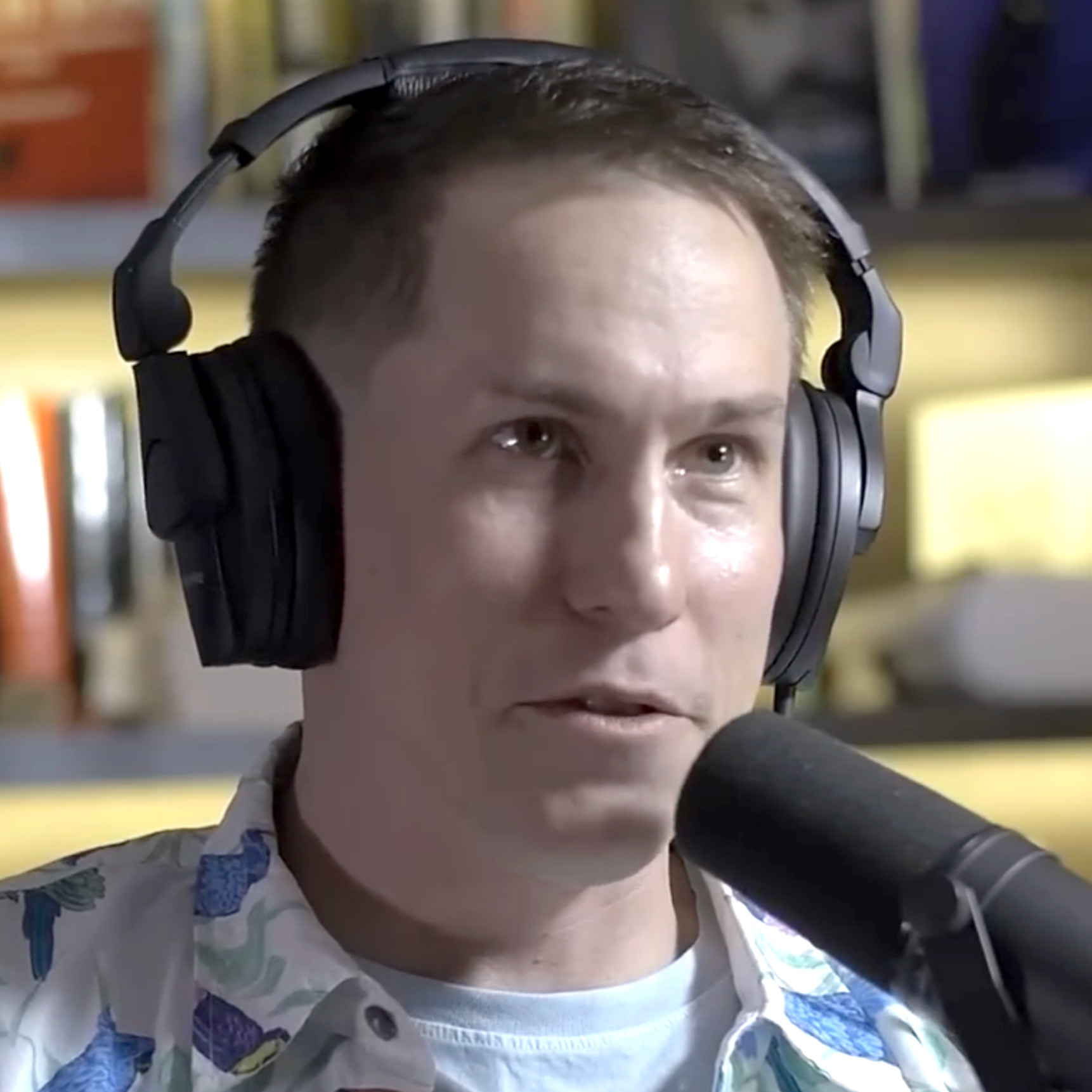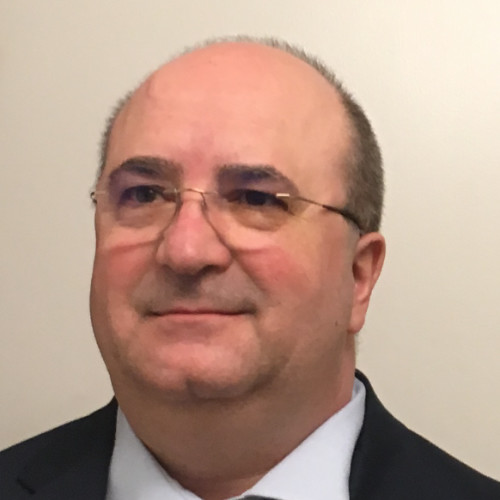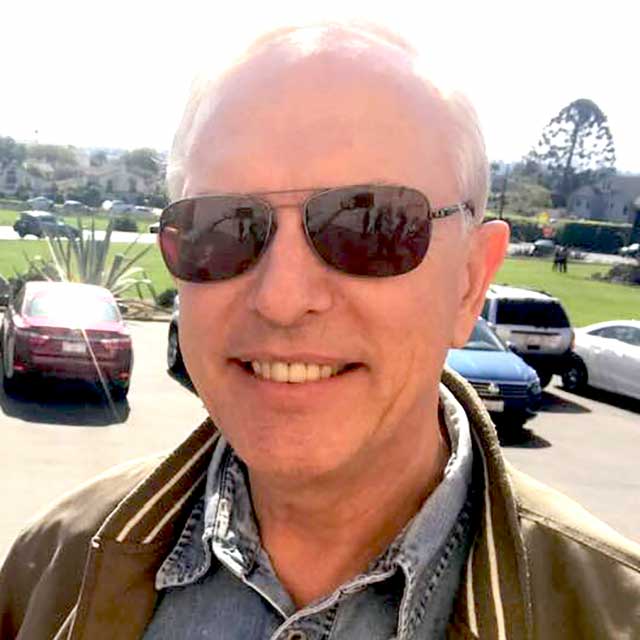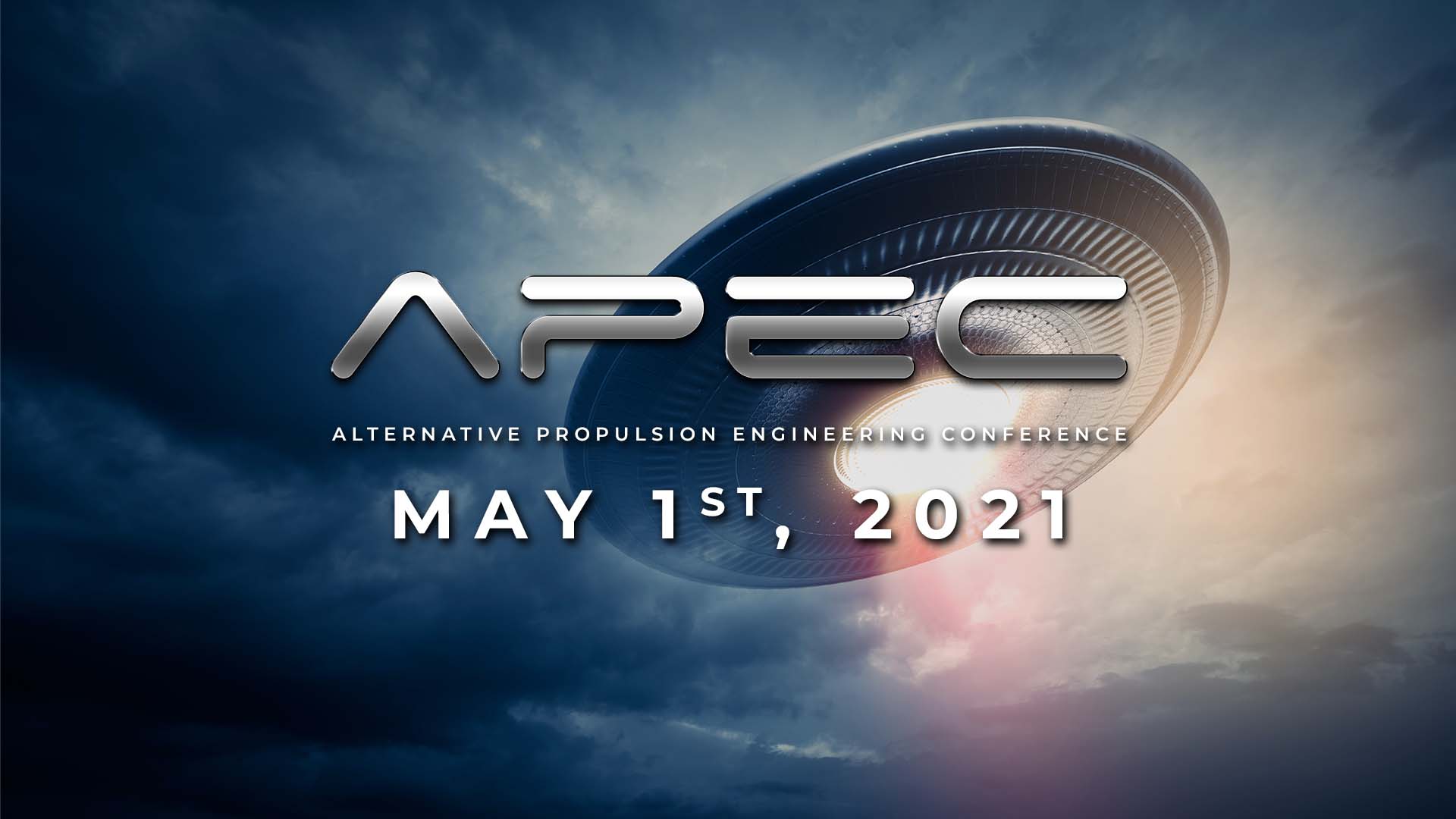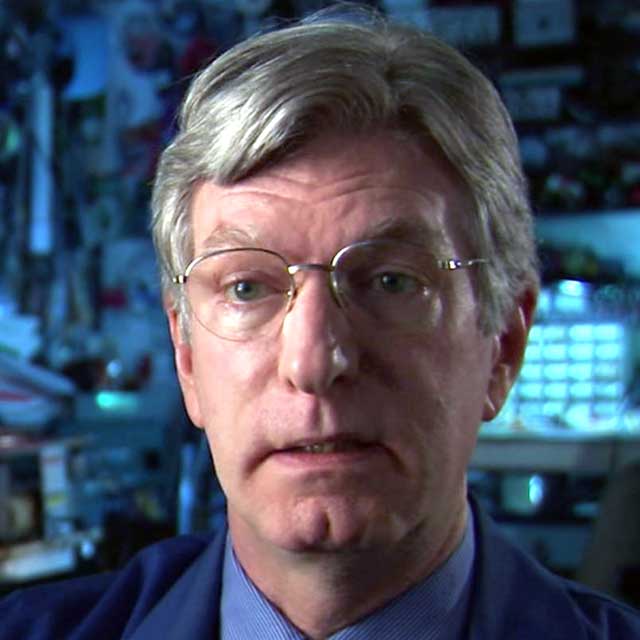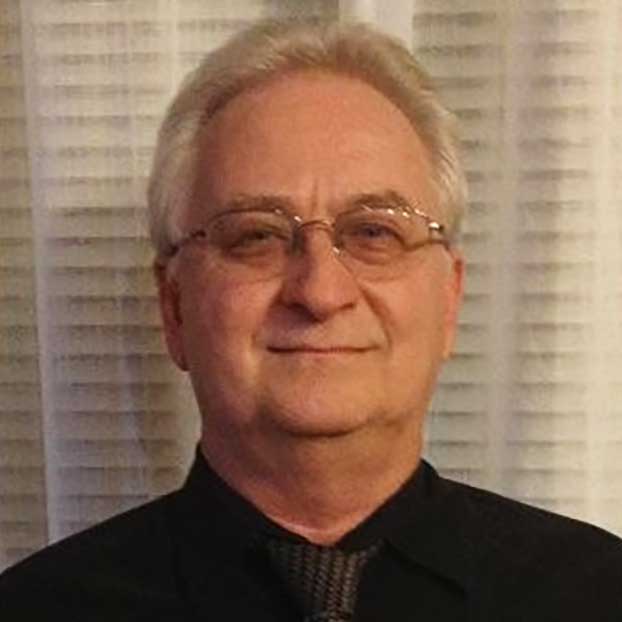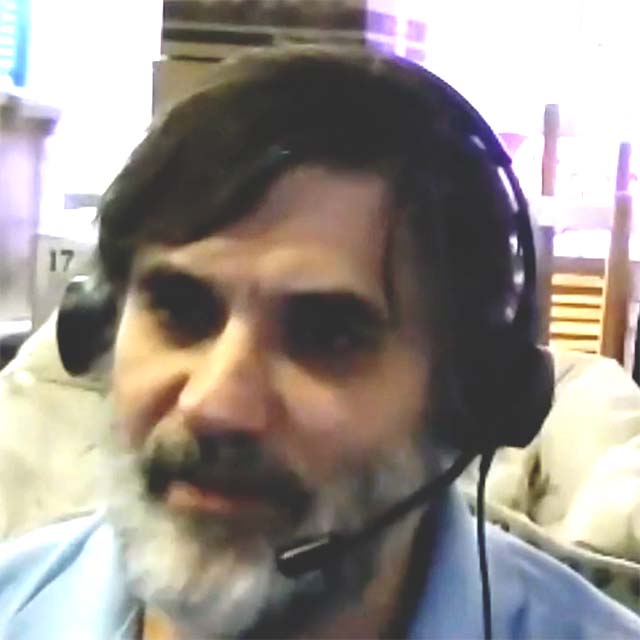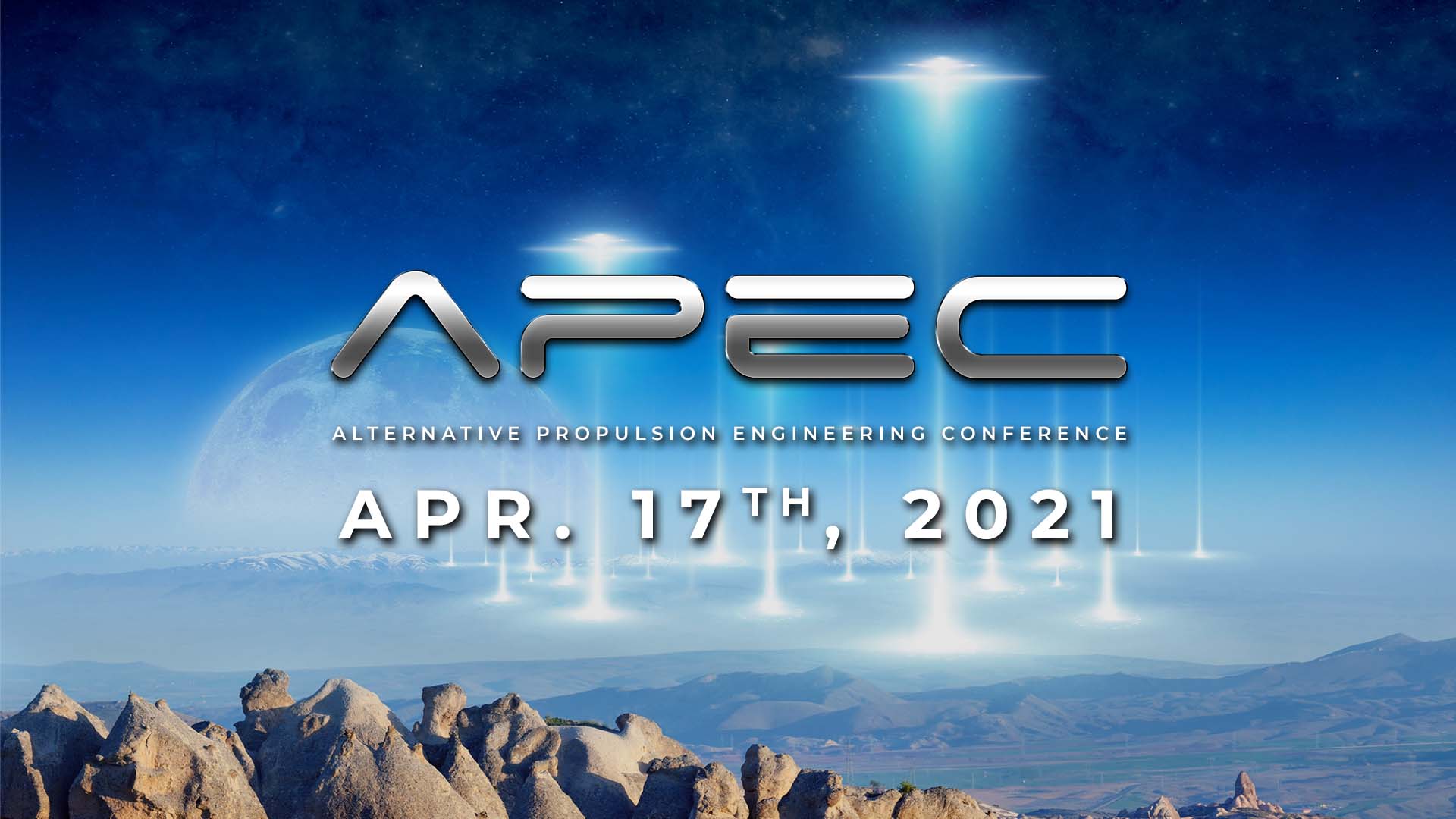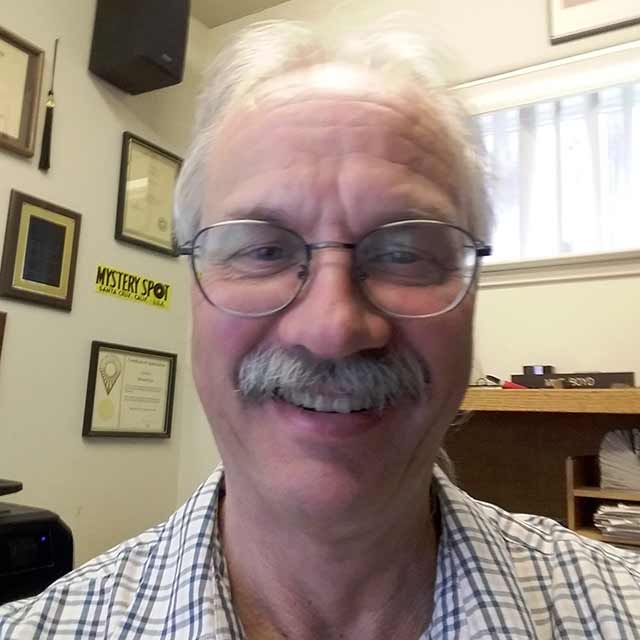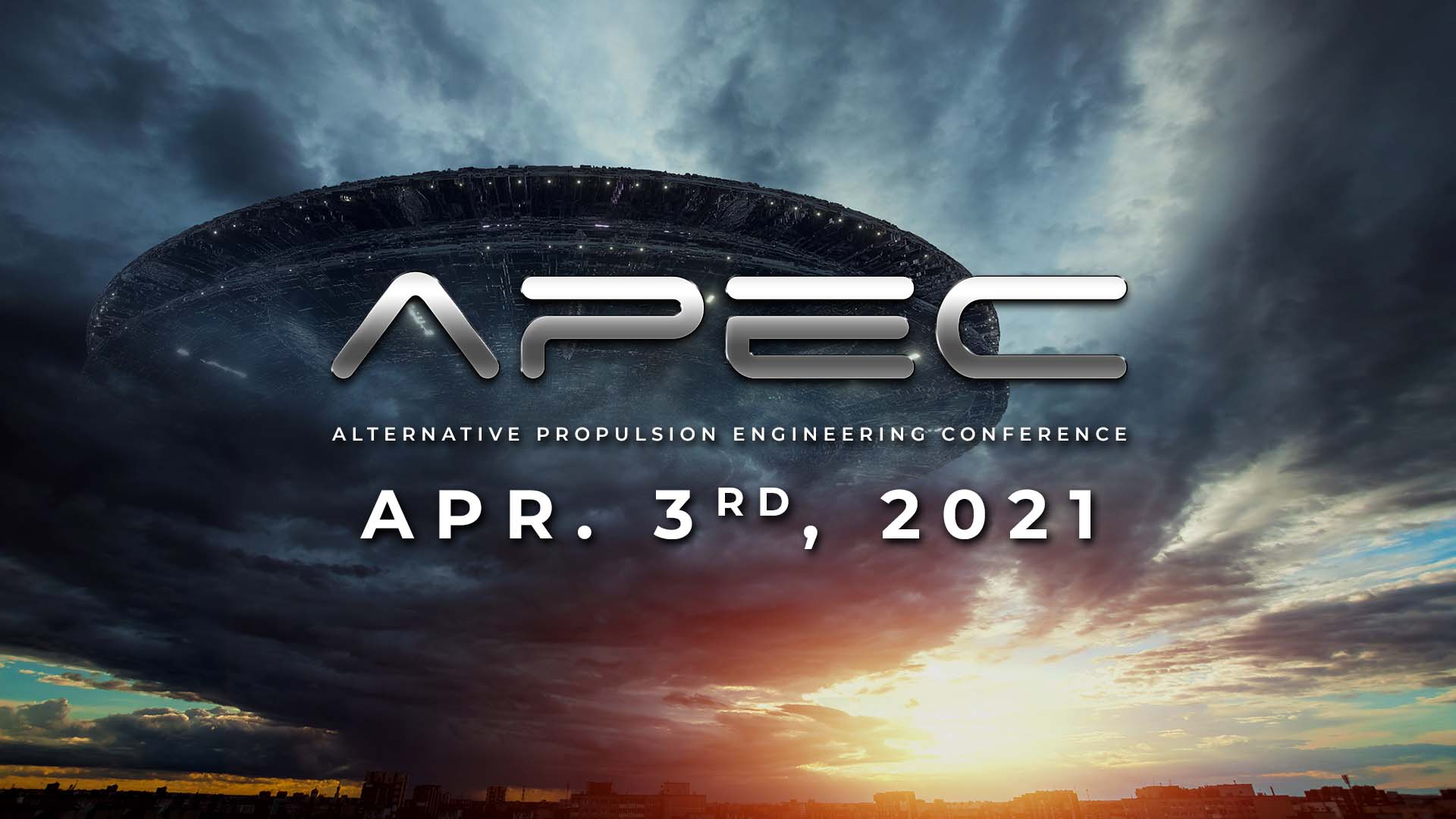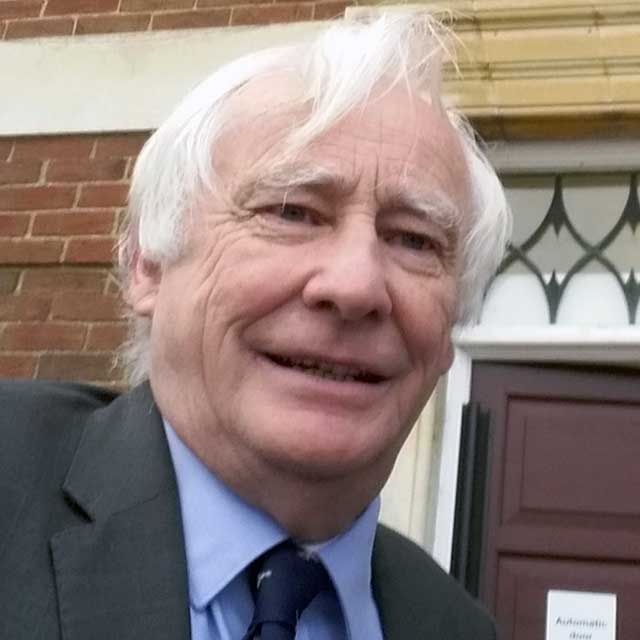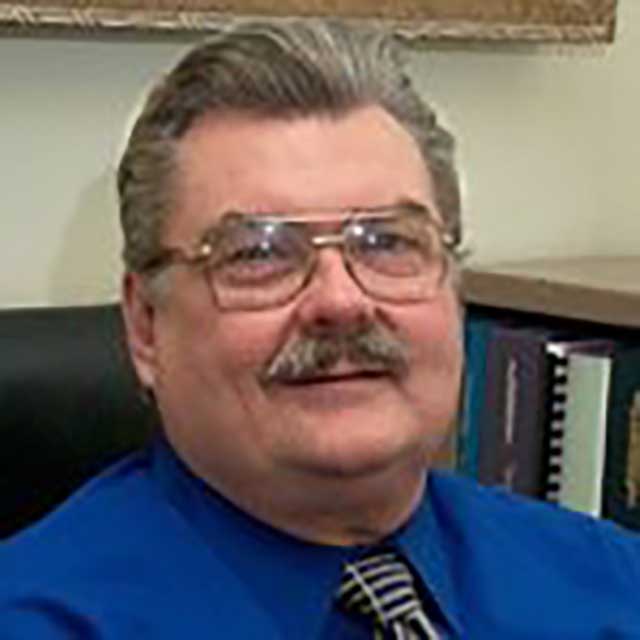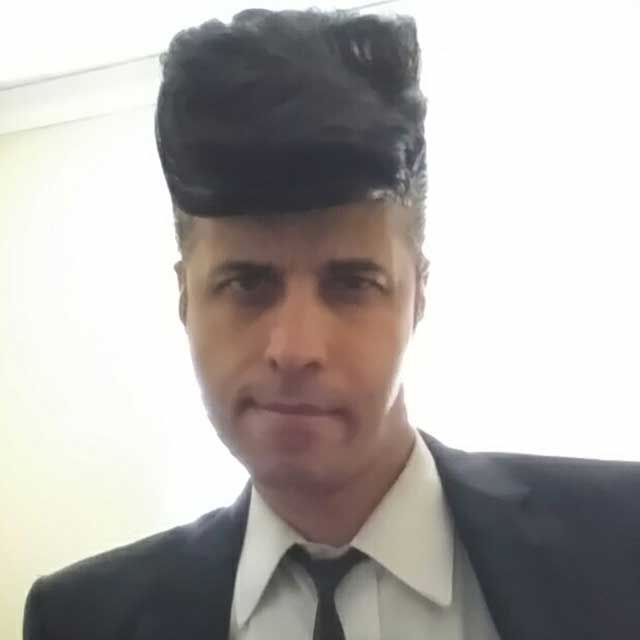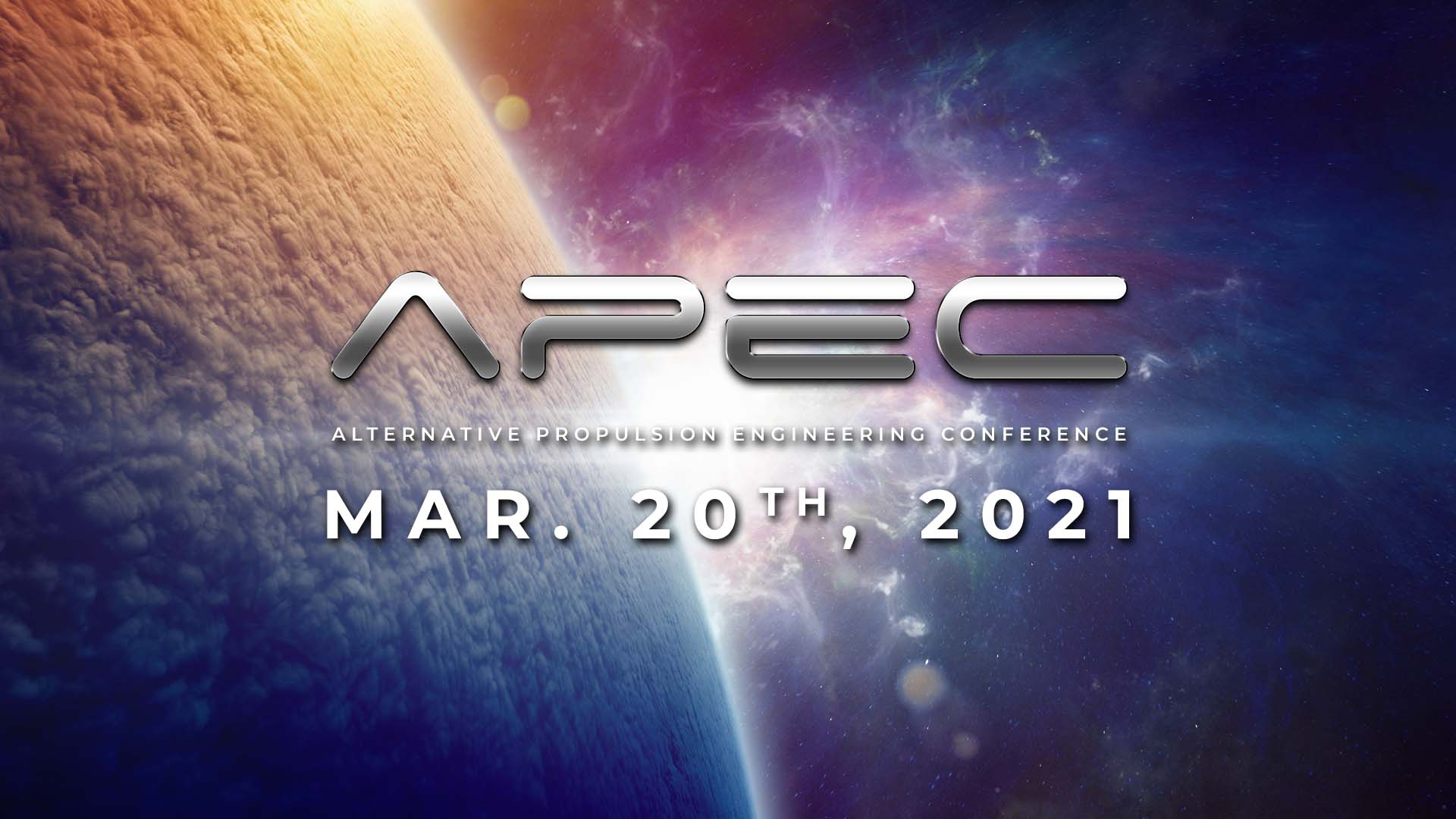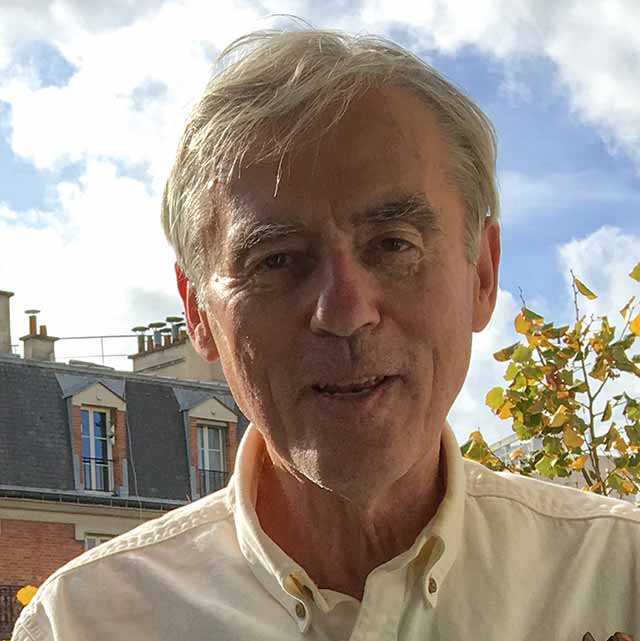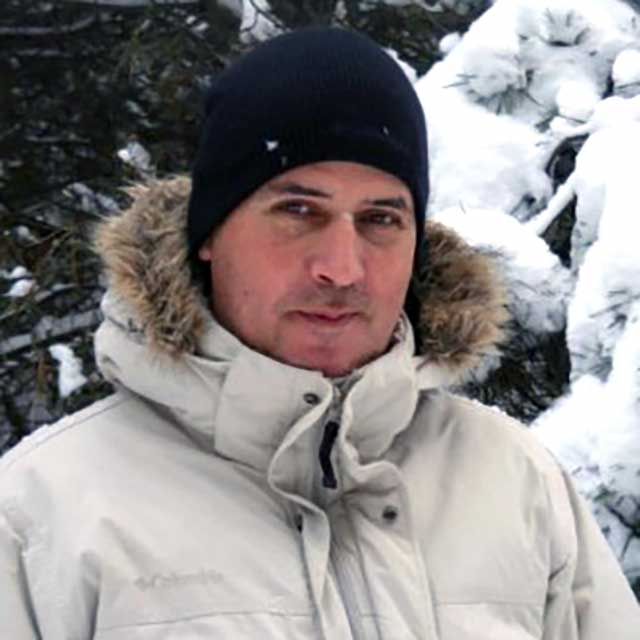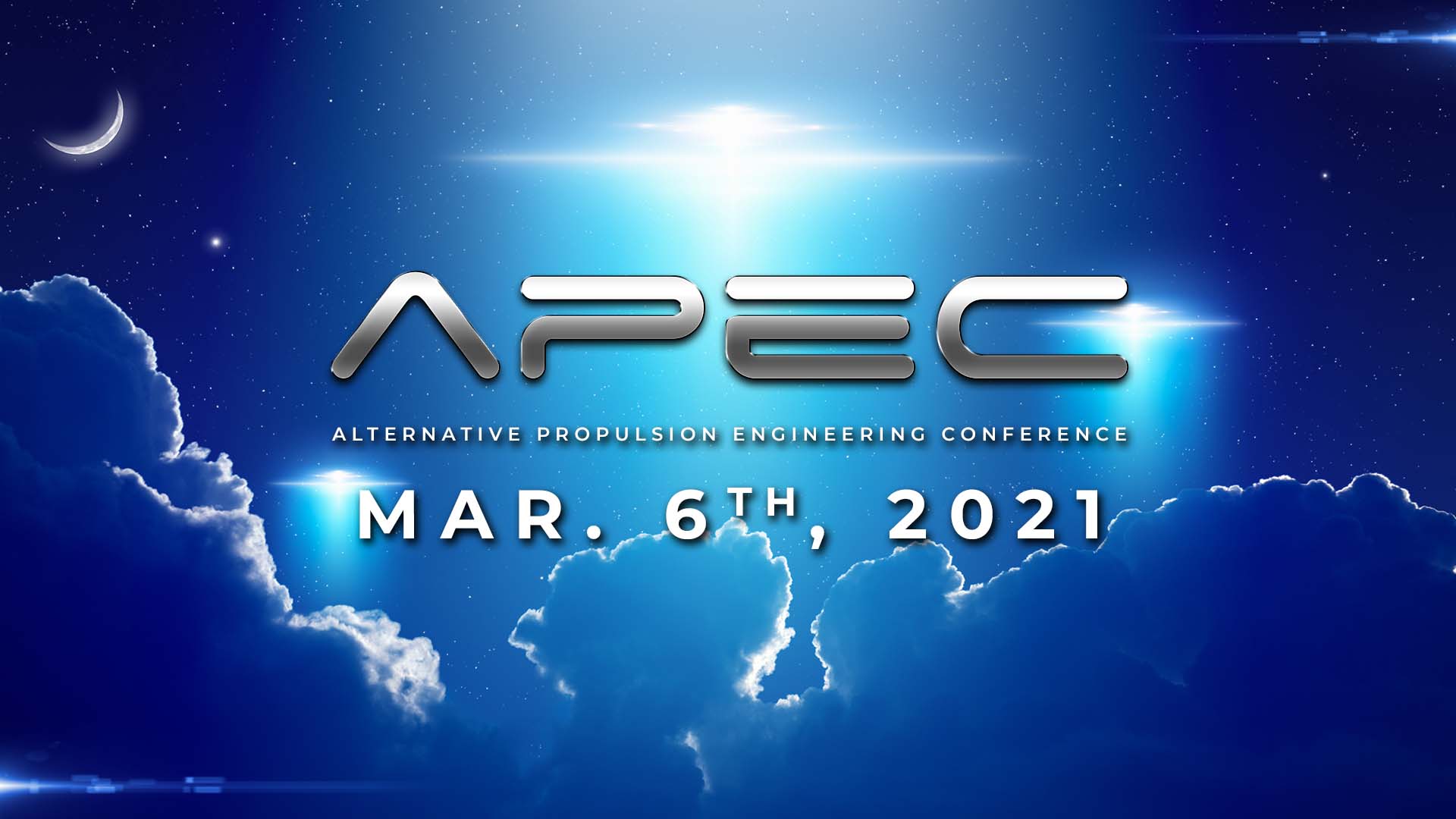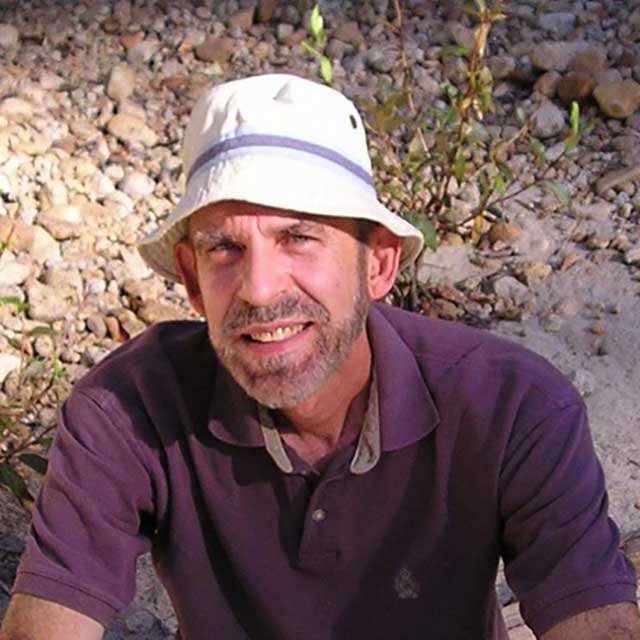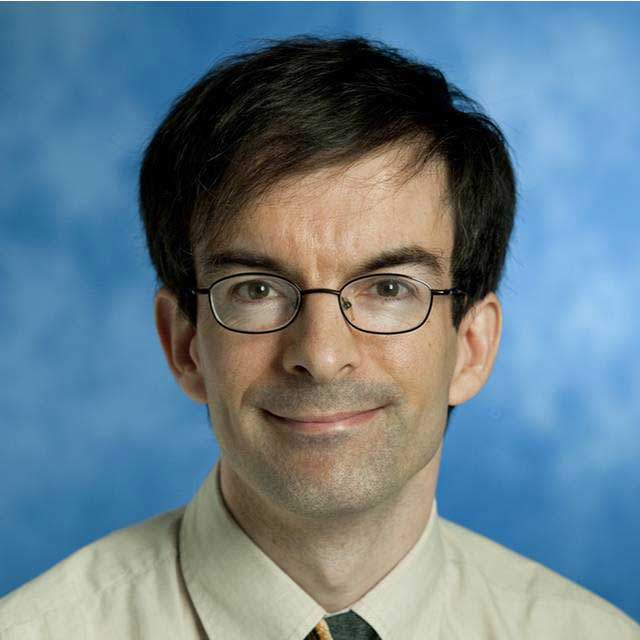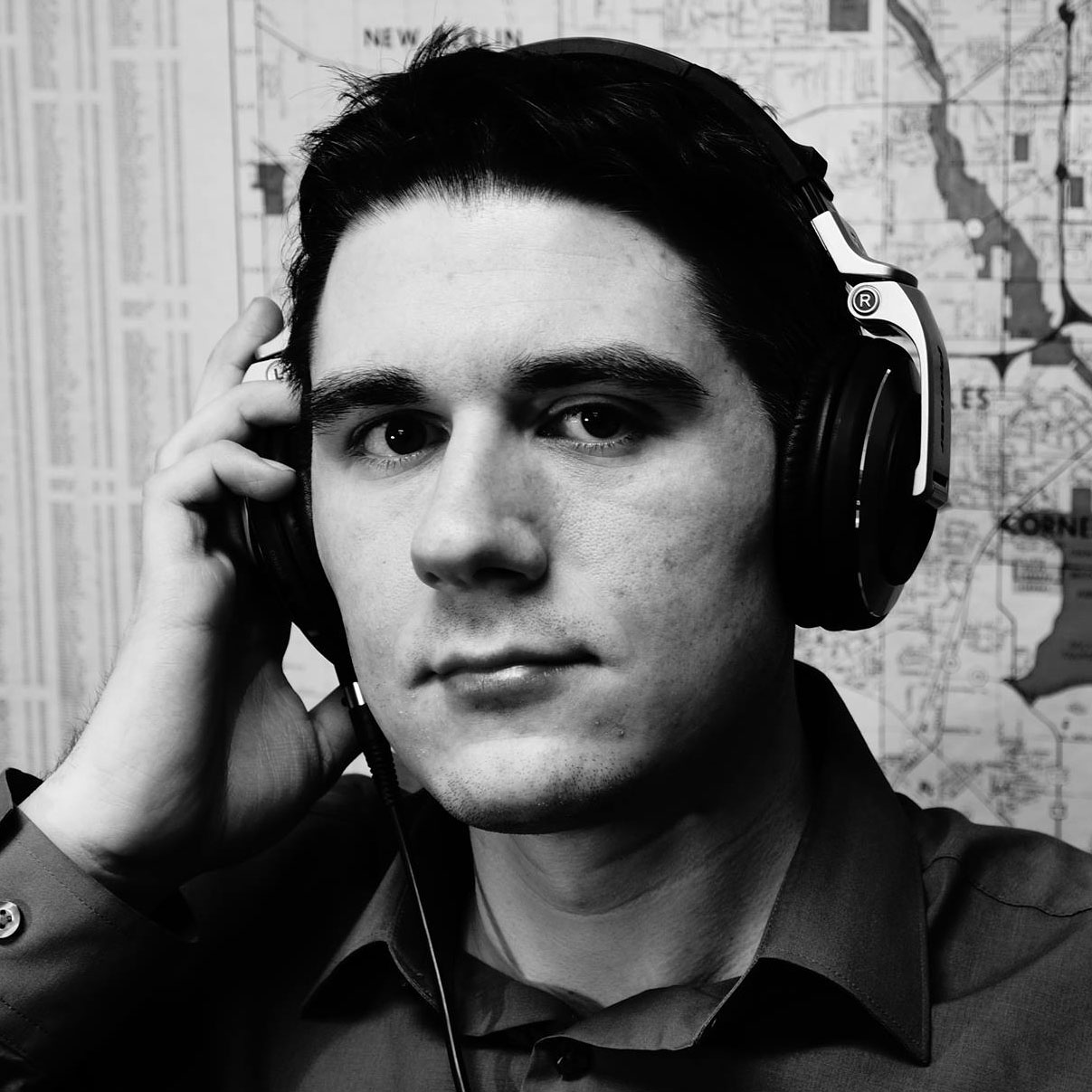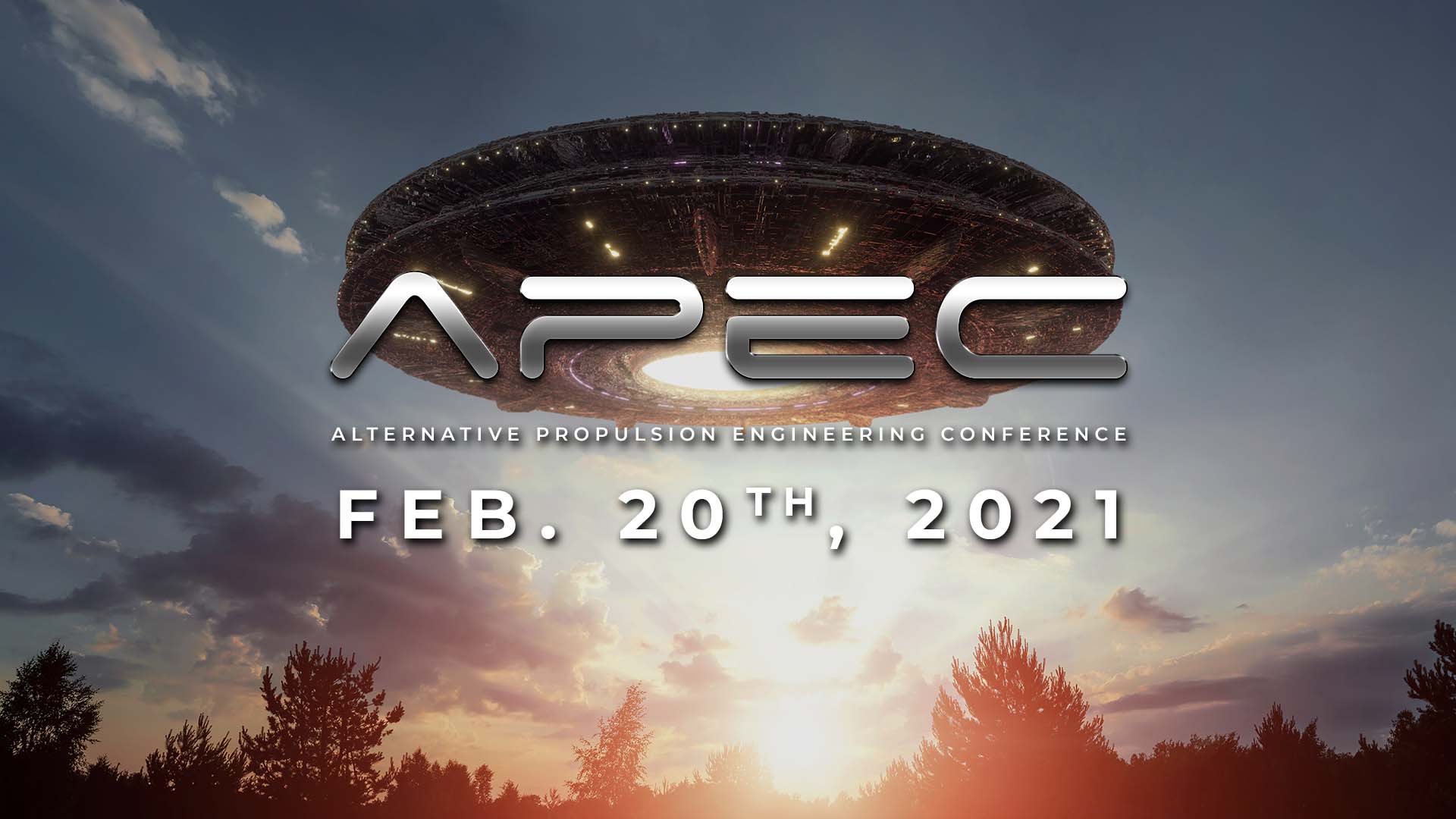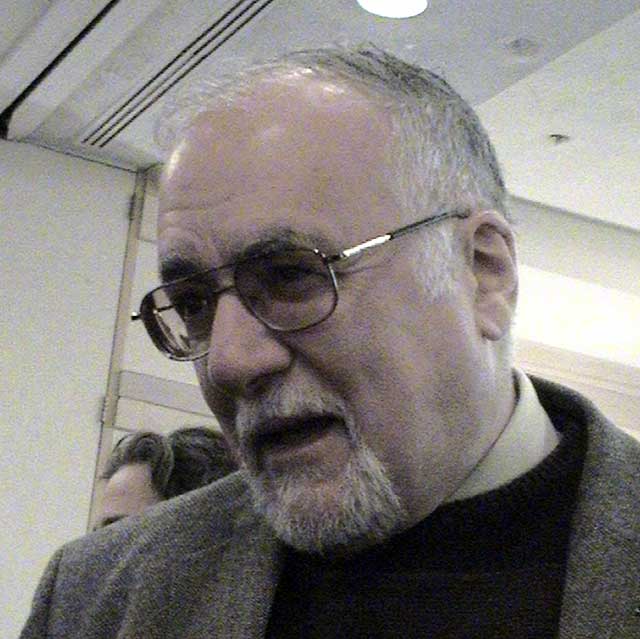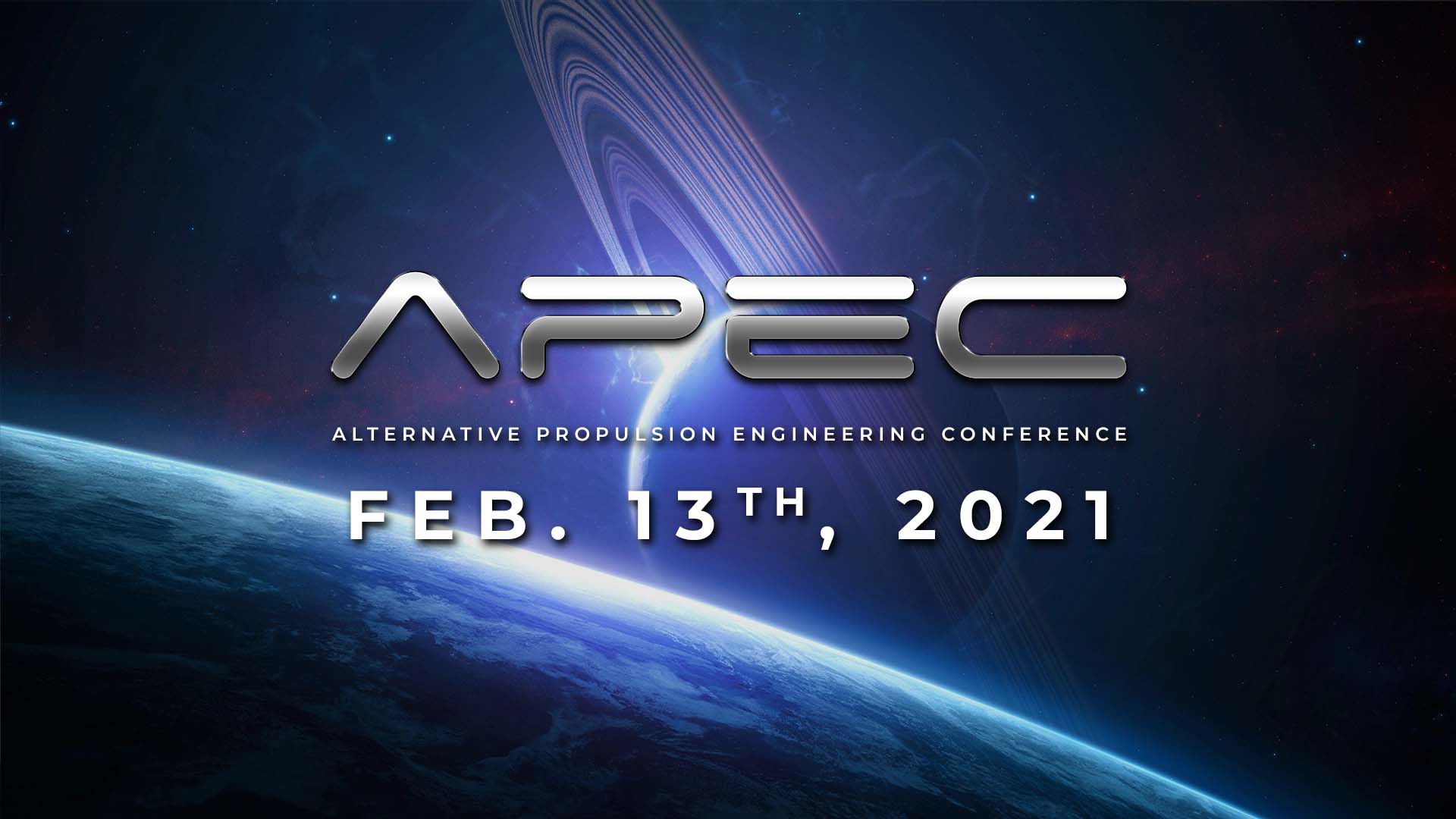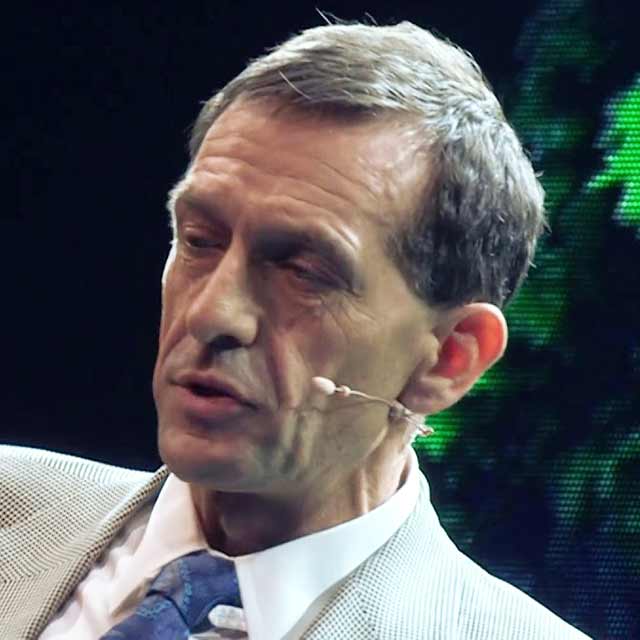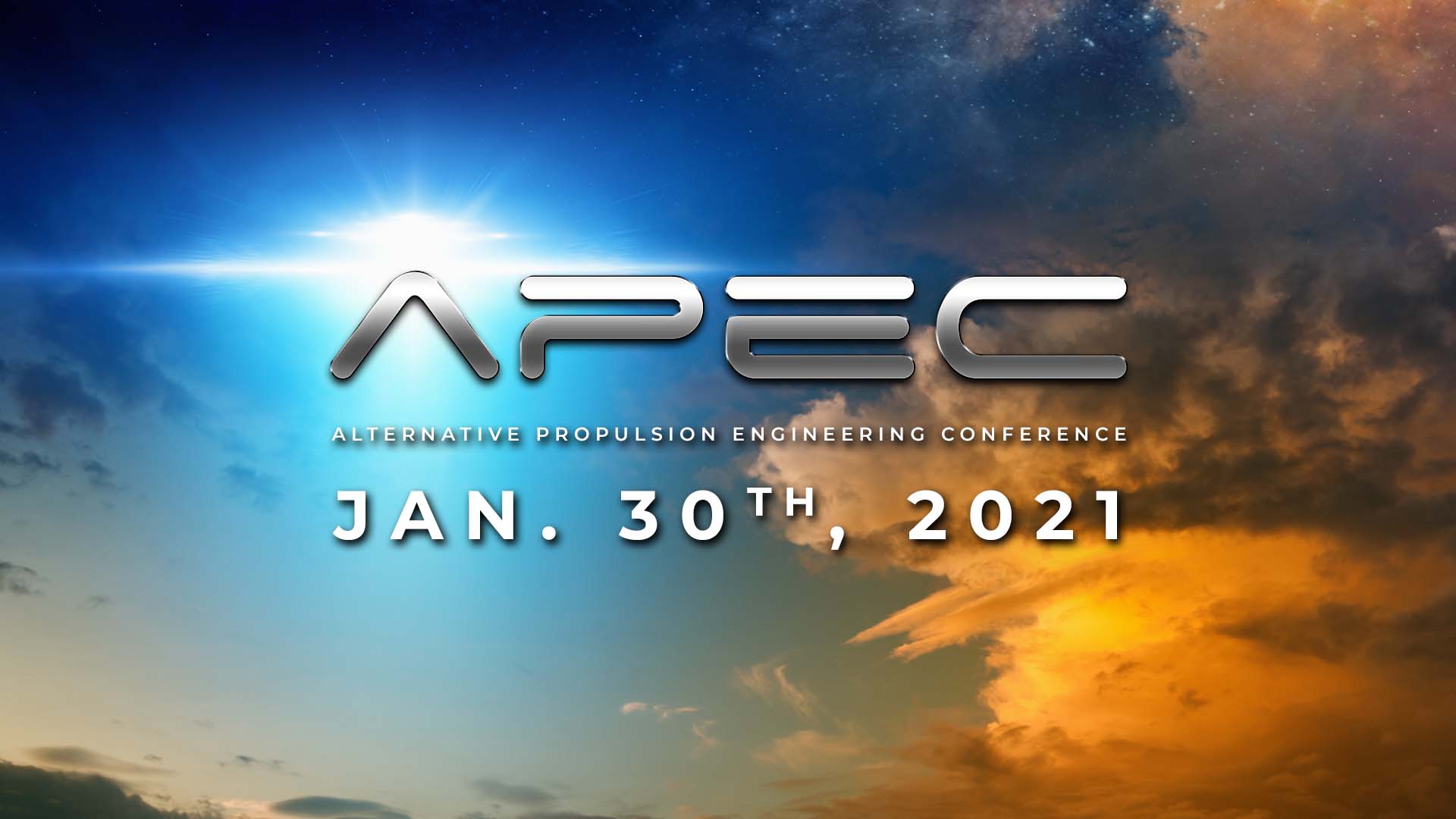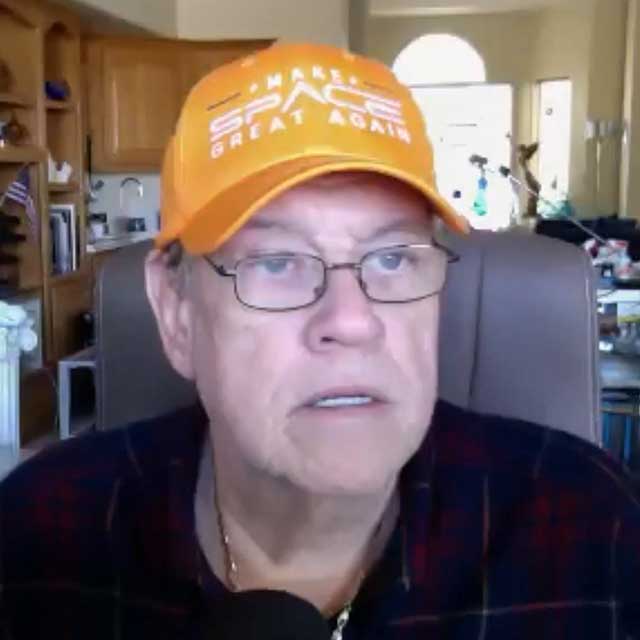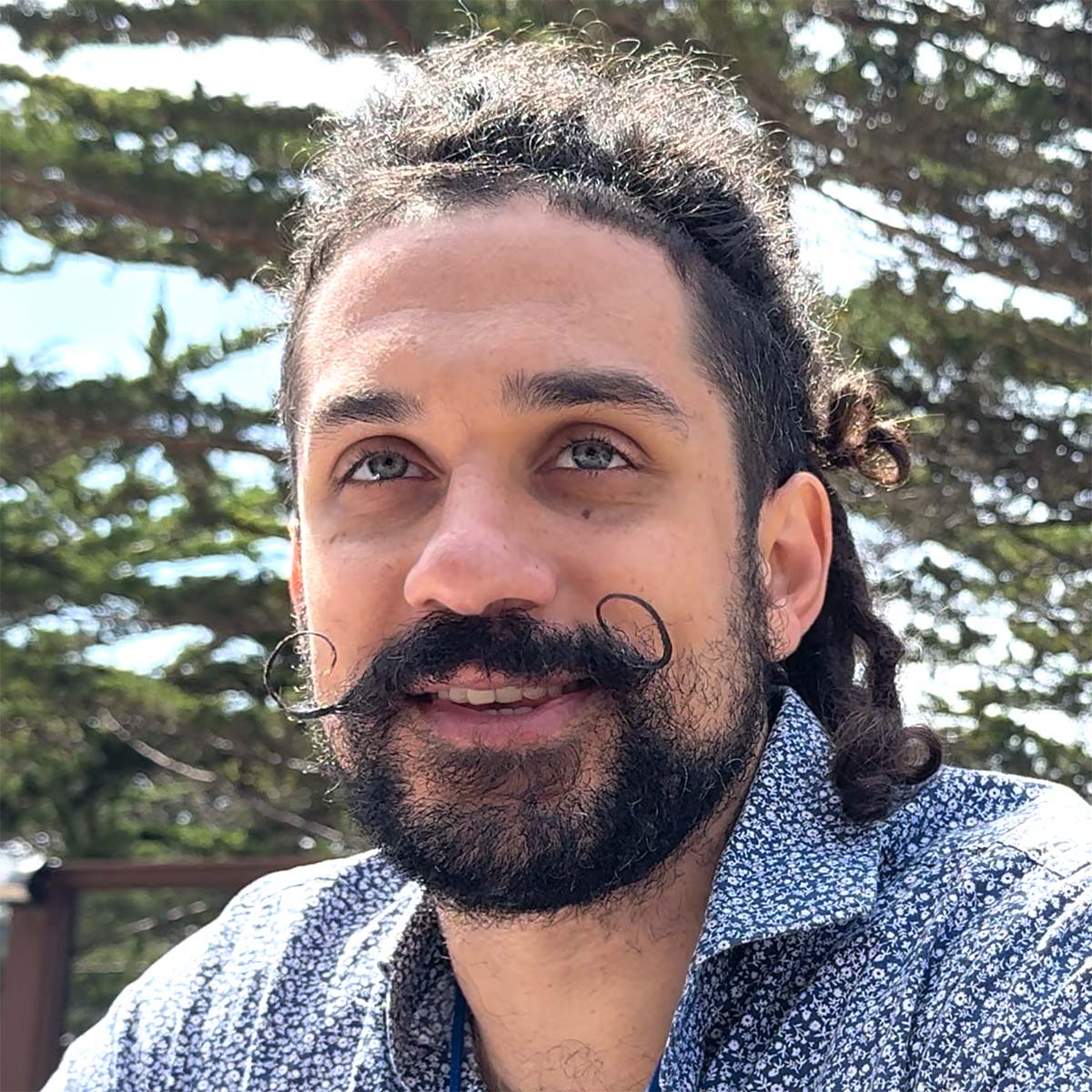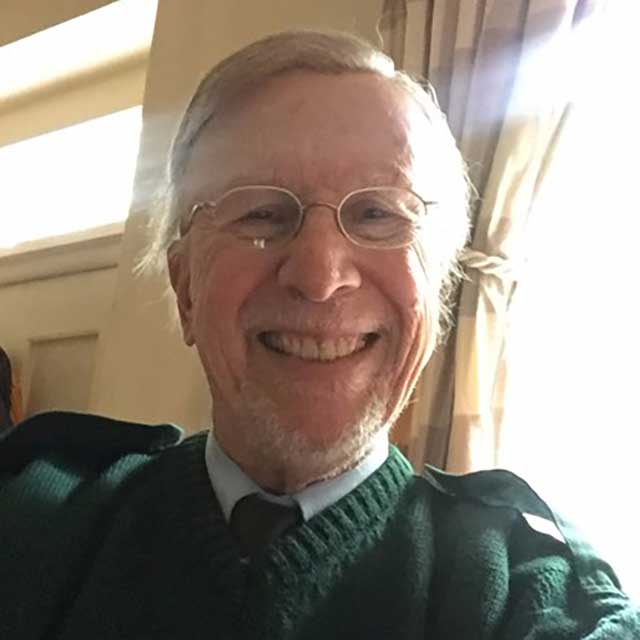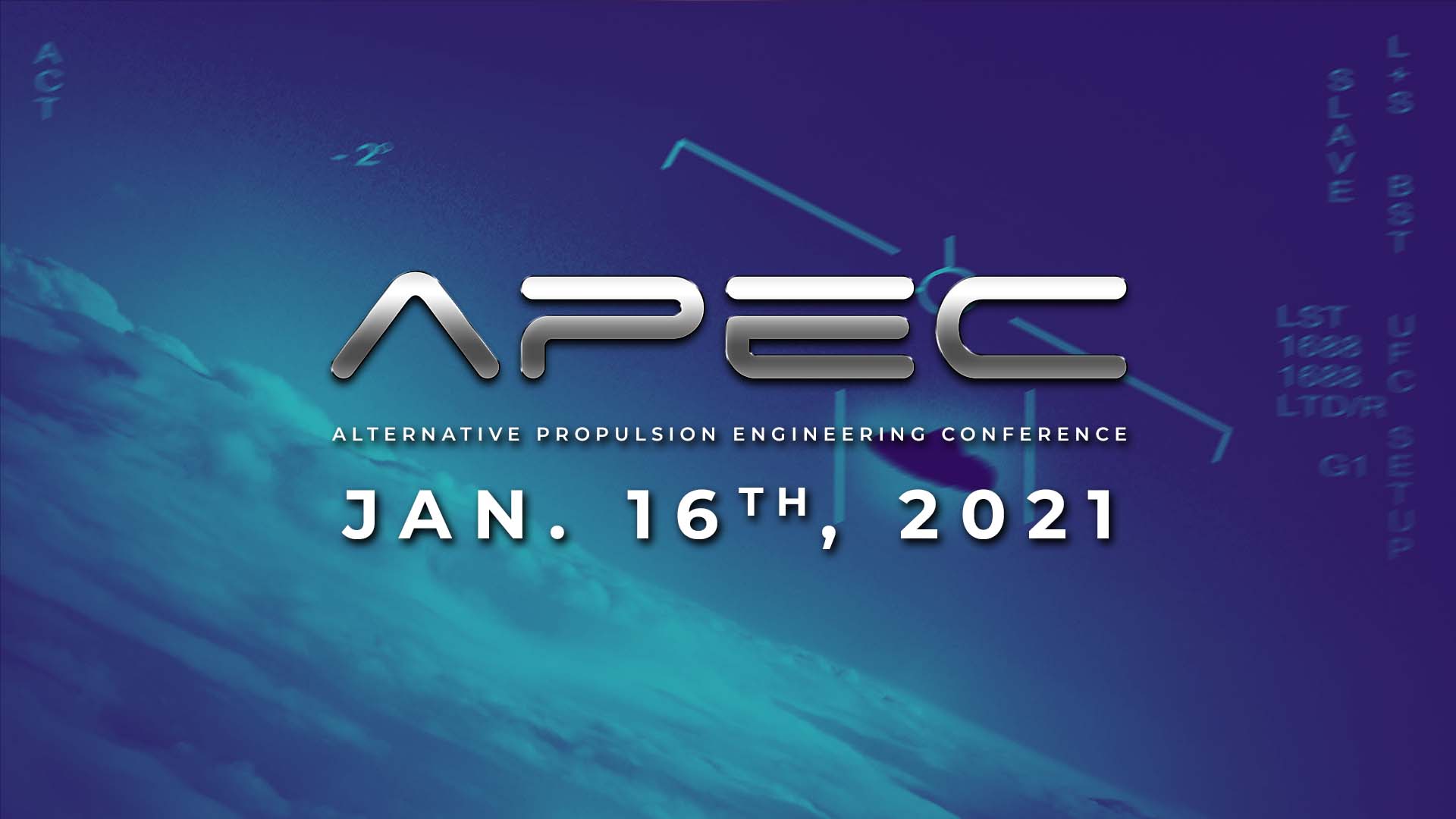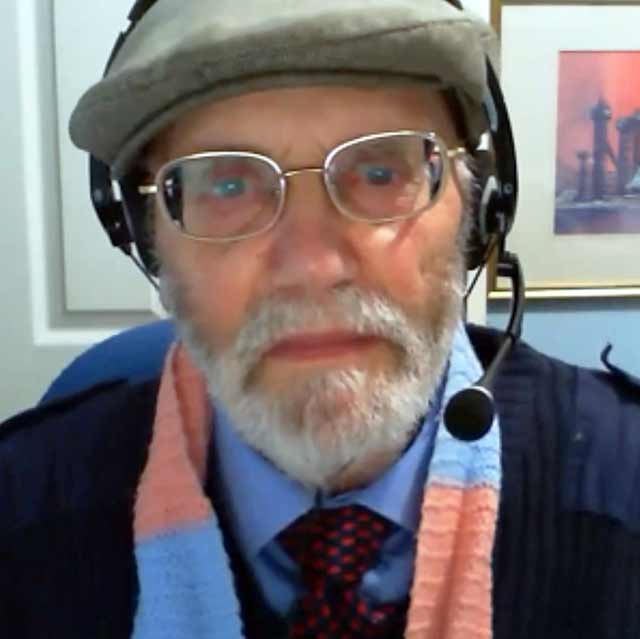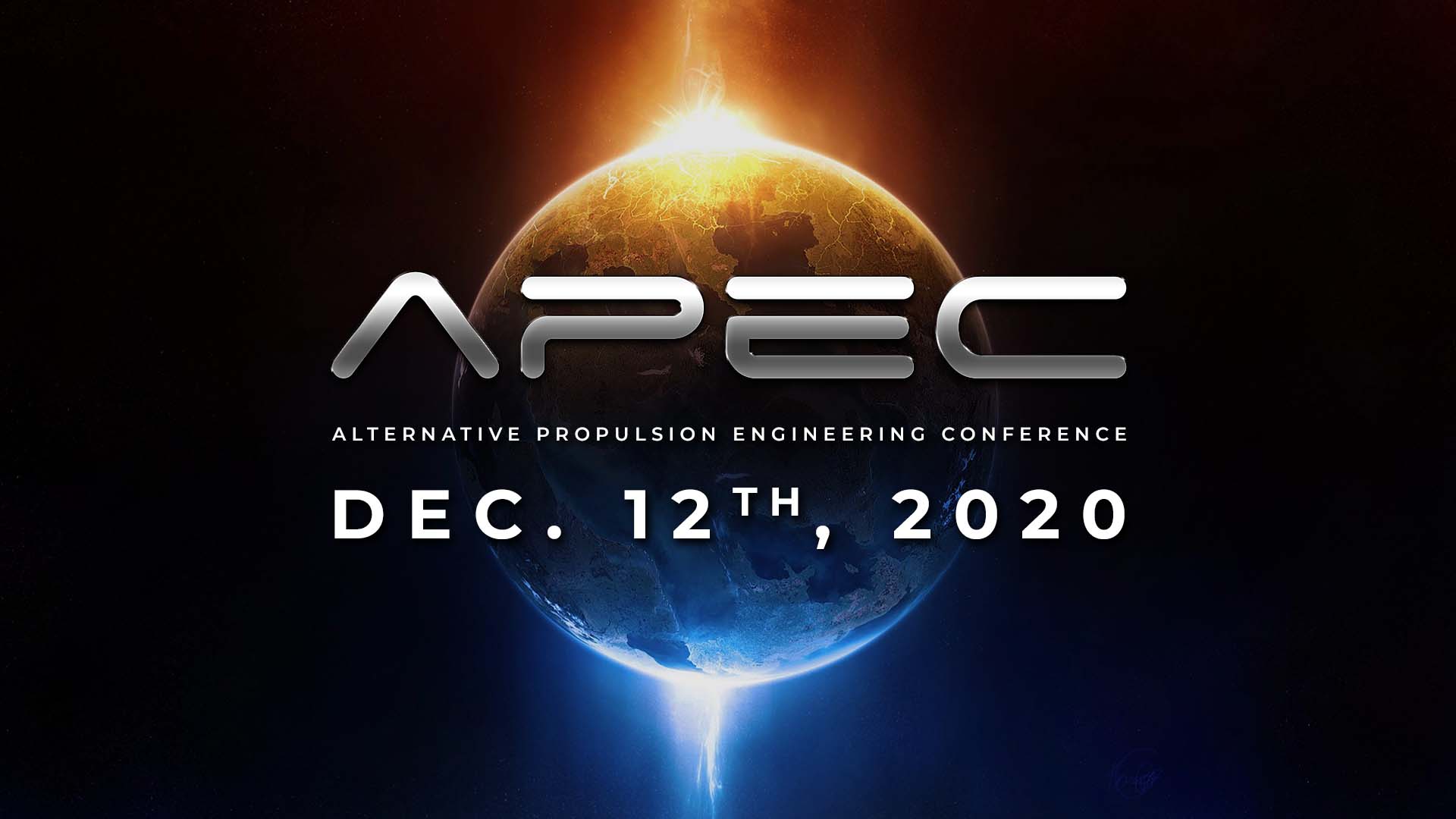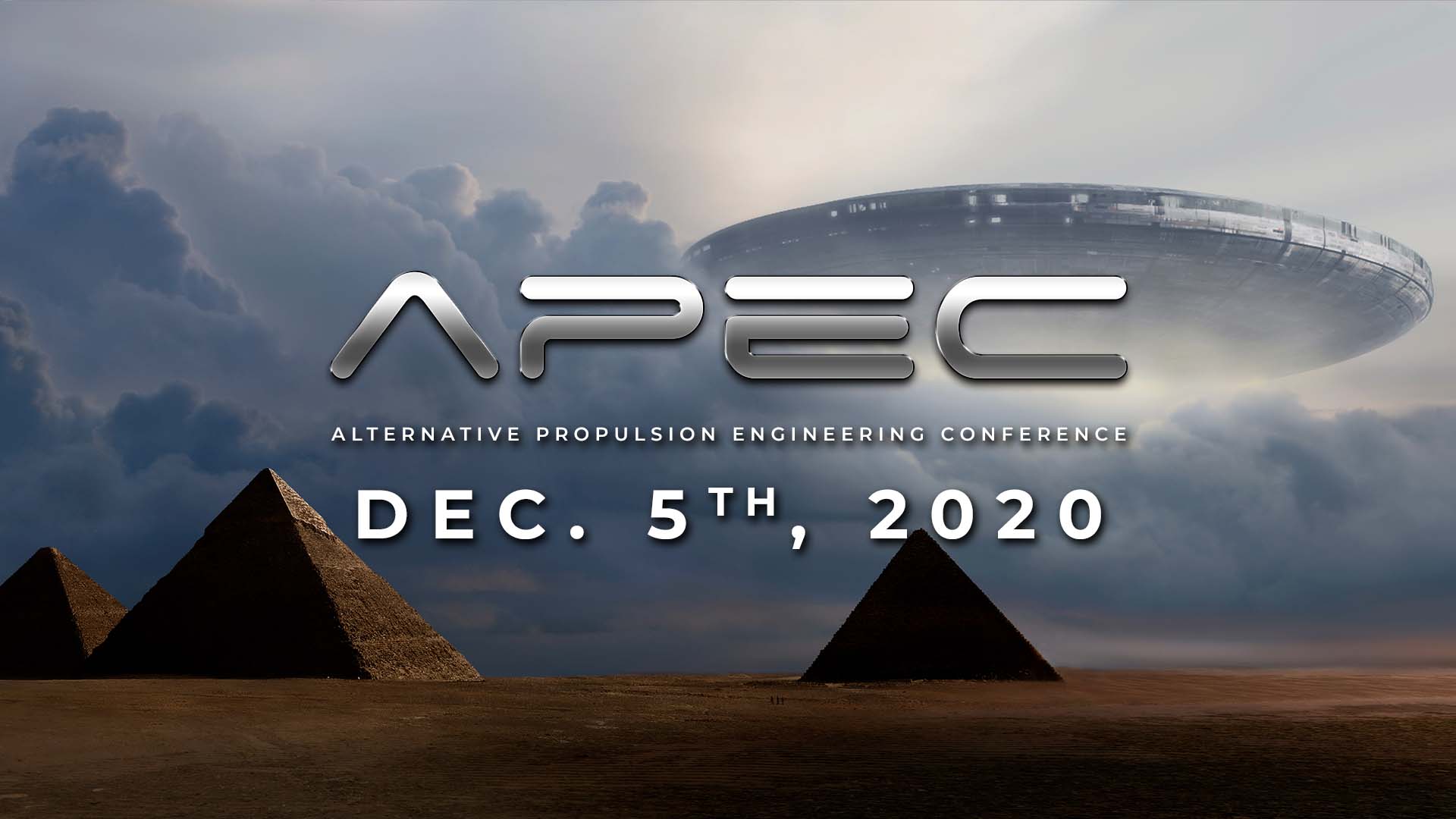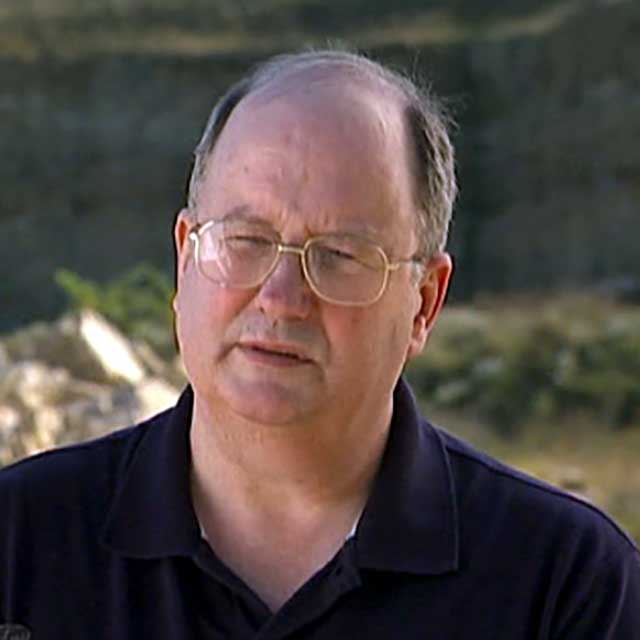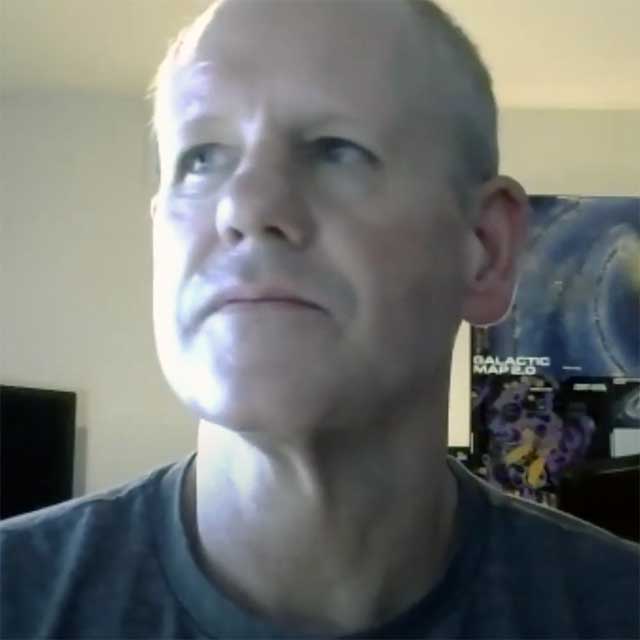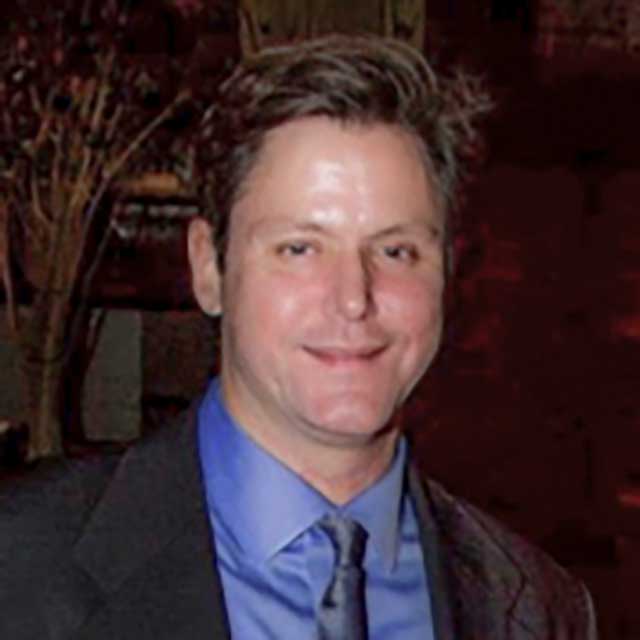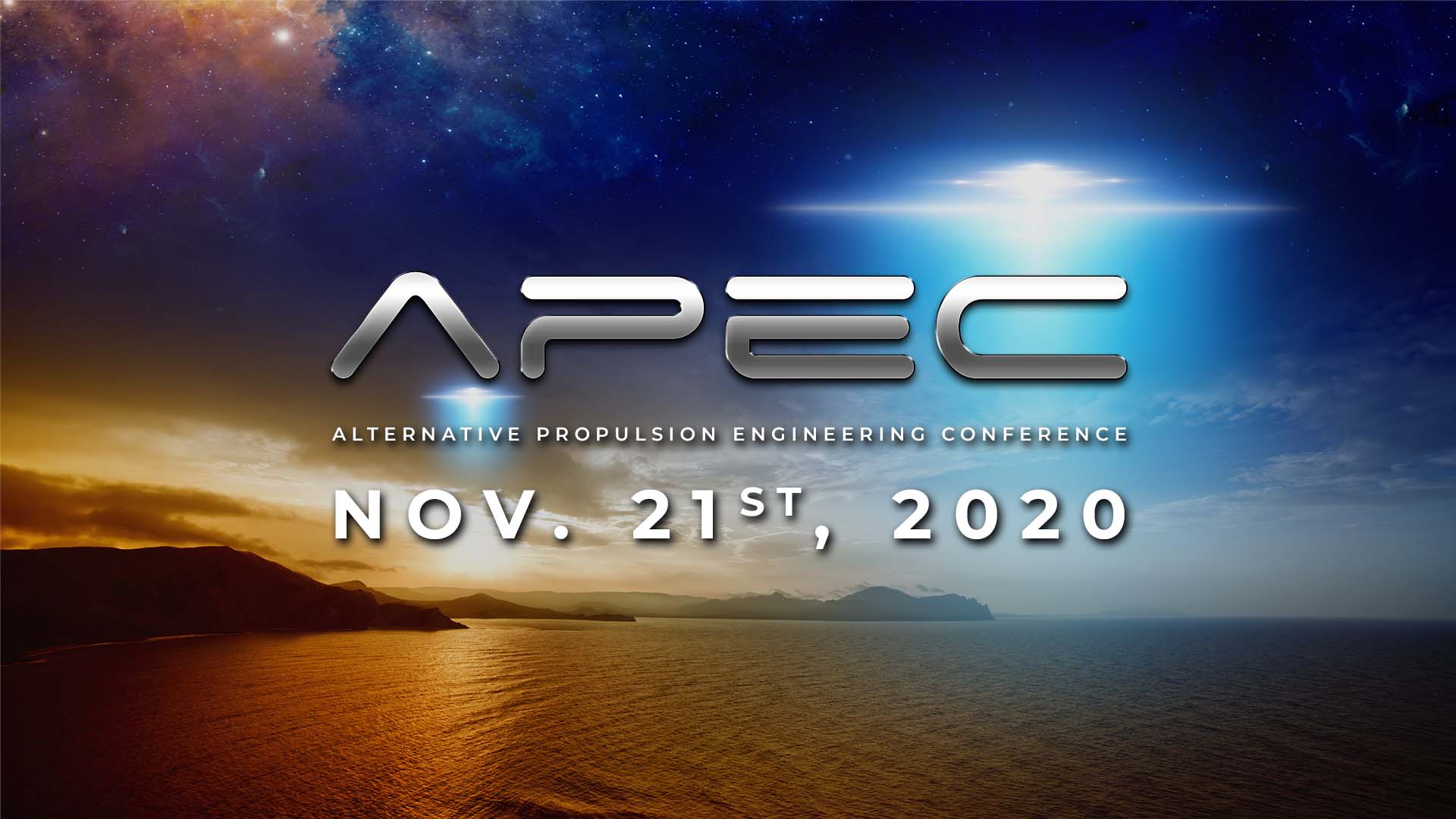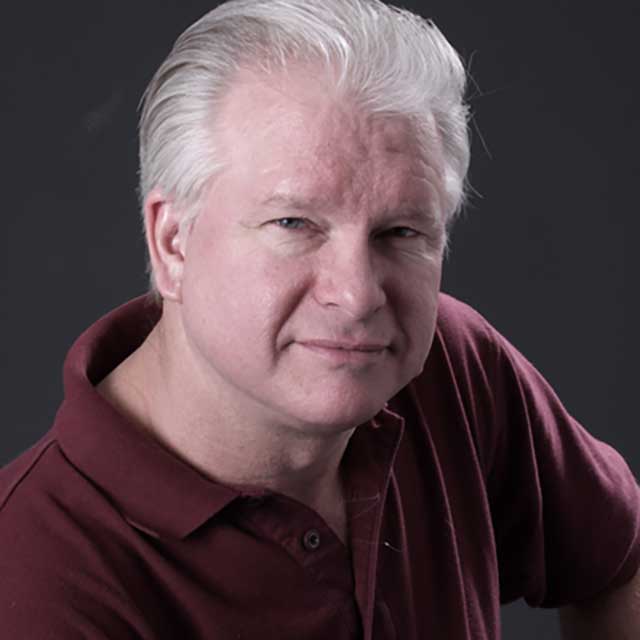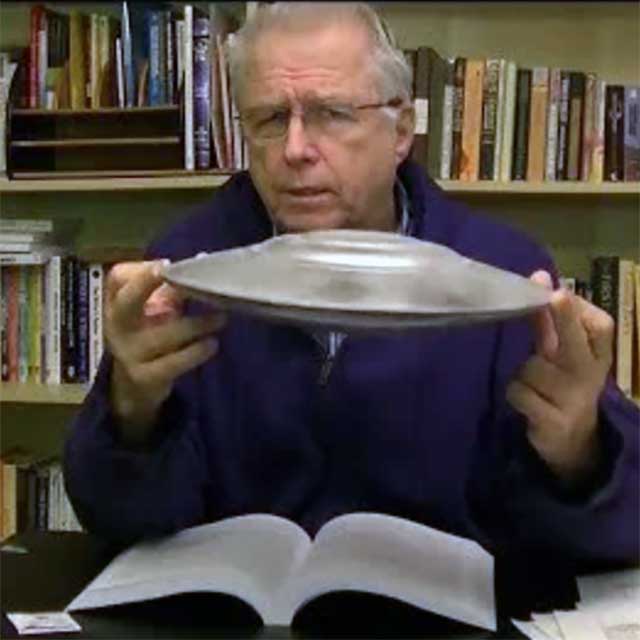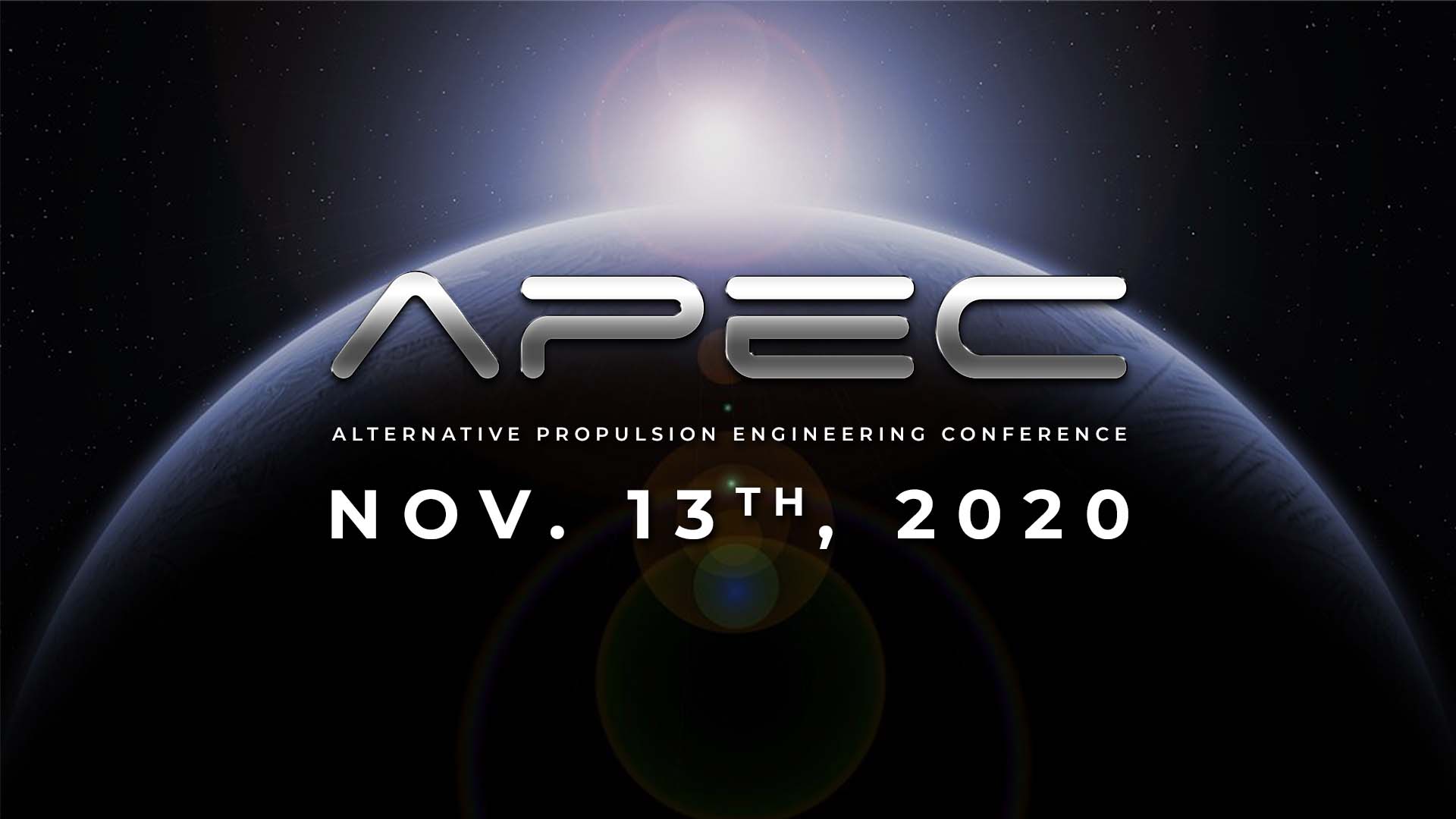APEC 8/14: ELF Gravity Control, 2nd Law Physics & TeslaTech Live
Events
Conference Details
Steve Burns discusses his experimental replication of Fran De Aquino’s System-H and ELF gravity control, Daniel Sheehan & Remi Cornwall present on emerging concepts in thermodynamics related to Maxwell’s demon and the 2nd law violations, and Mark Sokol & Jeremy Rys join us LIVE from TeslaTech 2021 in Albuquerque with spot-interviews for this year’s conference presentations and exhibitors.
Part #1 – Steve Burns – System-H & ELF Gravity Control
Retired nuclear engineer Steve Burns joins us to discuss his experimental attempts to replicate Fran De Aquino’s System-H experiment, which was proposed as a method of gravity-control via the generation of ELF (Extra-Low Frequency) electromagnetic waves. Burns is approaching verification of the system H design, and his experimental apparatus now routinely radiates 4.3 Watts at 1.2 Hz using a Gravitronic Tuner he has developed.
Part #2 – Steve Burns – System-H & ELF Gravity Control
Steve Burns answers questions related to his presentation.
Part #3 – Daniel Sheehan – 2nd Law Physics & Maxwell’s Demon
Professor Daniel Sheehan will join us along with Remi Cornwall in a joint discussion of the limitations of the 2nd Law of Thermodynamics and new research that defies standard thinking about heat engines and may offer a path to a new kind of energy generation. Daniel Sheehan is a professor of physics at the University of San Diego and has He has explored experimentally testable challenges to the second law of thermodynamics for more than 25 years. In 2002 he organized the first international conference on the limits to the second law, and in 2005 coauthored the first mainstream treatise on the subject.
Part #4 – Daniel Sheehan – 2nd Law Physics – Q&A Session
Daniel Sheehan answer questions relating to his presentation.
Part #5 – Remi Cornwall – 2nd Law Physics
Professor Daniel Sheehan will join us along with Remi Cornwall in a joint discussion of the limitations of the 2nd Law of Thermodynamics and new research that defies standard thinking about heat engines and may offer a path to a new kind of energy generation. Daniel Sheehan is a professor of physics at the University of San Diego and has He has explored experimentally testable challenges to the second law of thermodynamics for more than 25 years. In 2002 he organized the first international conference on the limits to the second law, and in 2005 coauthored the first mainstream treatise on the subject.
Part #6 – Cornwall & Sheehan – 2nd Law Physics – Q&A Session
Remi Cornwall & Daniel Sheehan answer questions relating to both presentations.
Part #7 – Lucian Ionescu – TeslaTech LIVE – Electrogravitics Systems
Dr. Lucian Ionescu provides an overview of his research into Electogravitic Systems & emerging physics. Ionescu is a Professor at Illinois State University, and specializes in applications of mathematics (homological algebra methods and deformation theory) to quantum physics and quantum computing. His current research is in Number Theory as the Ultimate Physics Theory.
Part #8 – Jeremiah Ferwerda – TeslaTech LIVE – Tesla Turbines
Jeremiah Ferwerda discusses his research into the construction, operation and applications of Tesla Turbines. A Tesla turbine is a bladeless centripetal flow turbine patented by Nikola Tesla in 1913. It is also known as a bladeless turbine, boundary-layer turbine, cohesion-type turbine, and Prandtl-layer turbine because it uses the boundary-layer effect and not a fluid impinging upon the blades as in a conventional turbine.
Part #9 – Russell Anderson – TeslaTech LIVE – Searl Effect
Russell Anderson talks about his research into the Searl Effect Generation and IGV. Russell is the CEO of the Searl Aerospace Corporation, and his lifelong passion for the work of John Searl has led to him his present efforts commercialize the Searl Effect Generator.
Part #10 – Michael Smith – TeslaTech Live – Intellectual Property
Michael Smith from Kepler Aerospace discusses intellectual property legal issues and some of the challenges involved with protections on emerging tech devices. In this interview we’ll also be discussing some past examples of legal snarles that have affected various alt propulsion & energy technologies.
Part #11 – Paul Price – TeslaTech Live – Pulsed Plasma Propulsion
Paul Price talks about his concept for a Pulsed Plasma Propulsion along with his view on conspiracy theories related to emerging tech.
Part #12 – Elswick & Aliengirl111 – TeslaTech Live – Conference Highlights
Steve Elswick discusses his work as the TeslaTech Conference founder & organizer, and Amy aka Aliengirl111 on Twitter talks about her experience at the conference and how open, community events serve to educate and inspire young people to get involved with STEM.
Part #13 – Mike Gamble – TeslaTech Live – Inertial Propulsion
Mike Gamble discusses his experience at this year’s conference and his latest research. Mike Gamble is a regular presenter at the APEC Conference, and also a participate at Tom Valone’s COFE Conference, as well as being an active hands-on inventor building inertial propulsion systems using gyroscopes, based on principles he discovered working with satellite gyros at Boeing.
Links & Resources
• Steve Burns: Steve’s Starship Design Website
• Fran De Aquino: ELF Gravity Control Researchgate Papers System-G (Precursor)
• TeslaTech: TeslaTech Online 2021 Conference Info
• Daniel Sheehan: UC San Diego Faculty Maxwell Zombies
• Remi Cornwall: Papers on Academia.Edu
• AlienGirl111 (@papercrane): View on Twitter
• Falcon Space Facebook | YouTube
• Jeremy Rys: Alien Scientist Website
Join the APEC Conference
Want to see more great conference events like this one? Sign up for our mailing list to get exclusive access to captivating presentations, engaging events, and more!
RECENT EVENTS
APEC 11/25: Superforce, UAP Tracking & Prime Numbers
November 4, 2023
APEC 10/28: Optical Unification, SQK, Mega-Drive & SEG
October 28, 2023
APEC 9/30: UAP Propulsion, Physics & Materials
September 5, 2023
APEC 8/5: Spin-Gravity, UAP Analysis & Panel Discussion
August 5, 2023
APEC 7/8: Warp-Drives, Detonation Engine & TR-3B
July 8, 2023
APEC 7/31: Non-Newtonian EM Propulsion & Superconductors
Events
Conference Details
Gabriel Granziera, Sergio Zanotti, and Emidio Laureti will be discussing the Field Self-Interaction Electromagnetic Thruster, Steven Lutz will be providing observations on superconductive gravity modification experiments from working with Podkletnov, Modanese, and Poher, Ken Griggs will be discussing PhOENIX Theory, and Remi Cornwall will discuss reconciling the cosmological constant. We will also hear updates from Falcon Space & associates, and we’ll be finishing off the event with an open discussion and ad hoc presentations by conference attendees!
Part #1 – Granziera, Zanotti & Laureti – Field Self-Interaction Electromagnetic Thruster
Gabriel Granziera, Sergio Zanotti, and Emidio Laureti will be joining us from the ASPS to discuss their team’s experimental research & testing of the PNN, a non-newtonian thruster emits electromagnetic fields which interact to generate a force. By exploiting the interaction between those fields the reaction force can be set to null or at least heavily reduced whilst action force can be boosted. The PNN thruster can work as long as the energy source is active. It doesn’t require to expel mass because since its “reaction” mass is the magnetic field, it virtually doesn’t exists until emitted, therefore the reaction mass is the energy source itself.
Part #2 – Granziera, Zanotti & Laureti – Field Self-Interaction Electromagnetic Thruster – Q&A Session
Gabriel Granziera, Sergio Zanotti, and Emidio Laureti answer questions related to their presentation.
Part #3 – Steven Lutz – Superconductive Gravity Modification & UAPs
Steven will present thoughts & observations based on discussions with Eugene Podkletnov and Giovanni Modanese as well as work he did with Claude Poher in Toulouse. He will also be discussing a variety of alt propulsion physics & engineering questions, and suggesting paths for future scientific inquiry that he has considered, and in this presentation touches upon the topic of UAPs, and how study in this area could produce insights useful for future propulsion research.
Part #4 – Steven Lutz – Superconductive Gravity Modification & UAPs – Q&A Session
Steven answers questions related to his presentation.
Part #5 – Kenneth Griggs – PhOENIX Theory
Ken Griggs will be joining us to discuss PhOENIX Theory, the Physics Of Entanglement, Networks & Information eXchanges.
Part #6 – Kenneth Griggs – PhOENIX Theory – Q&A Session
Ken Griggs answers questions related to his presentation.
Part #7 – Remi Cornwall – Reconciling The Cosmological Constant
Remi Cornwall discusses a new paper that he is working on, “Reconciling the Cosmological Constant with the Energy Density of Quantum Field Theories of the Zeropoint”. This paper results from our investigation into novel means of electromagnetic propulsion. It requiresthe basis of our claims to be put on a sound theoretical footing regarding the purported momentum exchange with the electromagnetic field. One of these concerns is the huge discrepancy between theenergy density of the Zeropoint and its purported manifestation as the Cosmological Constant.
Part #8 – Remi Cornwall – Reconciling The Cosmological Constant – Q&A Session
Remi Cornwall answers questions related to his presentation.
Part #9 -Open Discussion & Ad Hoc Presentations
Conference guests interested in presenting experimental info to the group are invited to participate at this time, and our presenters will be available to take questions & discuss experiments. In this open session, Michael Boyd and Kenneth Griggs discuss energing models of theoretical physics related to Grigg’s presentation on PhOENIX Theory.
Links & Resources
• Gabriel Granziera: Neo Leges Motus
• Ken Griggs: PhOENIX Theory
• Remi Cornwall: Reconciling The Cosmological Constant
• Falcon Space Facebook | YouTube
• Jeremy Rys: Alien Scientist Website
Join the APEC Conference
Want to see more great conference events like this one? Sign up for our mailing list to get exclusive access to captivating presentations, engaging events, and more!
RECENT EVENTS
APEC 11/25: Superforce, UAP Tracking & Prime Numbers
November 4, 2023
APEC 10/28: Optical Unification, SQK, Mega-Drive & SEG
October 28, 2023
APEC 9/30: UAP Propulsion, Physics & Materials
September 5, 2023
APEC 8/5: Spin-Gravity, UAP Analysis & Panel Discussion
August 5, 2023
APEC 7/8: Warp-Drives, Detonation Engine & TR-3B
July 8, 2023
APEC 7/10: Feynman's Disk & Gyroscopic Inertial Propulsion
Events
Conference Details
Remi Cornwall will discuss electromagnetic propulsion involving static ExB devices and the Feynman disk, Sandy Kidd discusses his extensive work in force precessed gyroscopic inertial propulsion, Mike Gamble will present a brief history of the history of Boeing CMG’s. We will also hear updates from Falcon Space & associates, and we’ll be finishing off the event with an open discussion and ad hoc presentations by conference attendees!
Part #1 – Remi Cornwall – Electromagnetic Propulsion via static ExB fields that avoids the Hidden Momentum trap
This discussion shall look at means of propellant-less electromagnetic propulsion. A brief overview shall give the pros and cons of propulsion methods that are solely electromagnetic (not necessarily propellant-less). We shall look at flaws and misconceptions and then concentrate upon a method based around “static ExB” devices and the Feynman disk, which has experimental verification in a celebrated Nature paper. A model shall be built up to explain energetic processes in a cycle of the disk, the conversion of angular momentum to linear momentum, the specific impulse, the dissipation of momentum to the zero-point field and the emerging viewpoint of the zeropoint as a supersolid/superfluid.
Part #2 – Remi Cornwall – Electromagnetic Propulsion via static ExB fields that avoids the Hidden Momentum trap – Q&A Session
Remi Cornwall answers questions related to his presentation.
Part #3 – Sandy Kidd – Gyroscopic Inertial Propulsion
Sandy Kidd is a Scottish inventor and former RAF radar technician who developed a novel approach to gyroscopic propulsion in the 1980s, based on the principle that a gyroscope set at various angles could provide a lifting force. His work has been described as being based on the principle of “force precessed gyroscopes”, and has been reviewed by Eric Laithwaite, David Hatcher Childress, Dr. Harold Aspden, Dr Bill Ferrier , and many others.
Part #4 – Sandy Kidd – Gyroscopic Inertial Propulsion – Q&A Session
Sandy Kidd answers questions related to his presentation.
Part #5 – Tim Ventura & Franc Milburn – Gyroscopic Inertial Propulsion – Q&A Session
Tim Ventura summarizes news headlines & Franc Milburn offers context related to Unified Aerial Phenomenon (UAP) and the recent June 25th “Preliminary Assessment: Unidentified Aerial Phenomena” report by the ODNI. UFOs are real – at least according to the US Government – and as this story continues to develop, we’re going to discuss some of the important developments to hit the news, including statements by NASA, the Pentagon, Senators & Congresspeople. UAP intent is currently unclear, but various news sources have reported an interest in our nuclear assets, as well as vehicular performance & stealth capabilities that are of concern. We also discuss findings by Knuth and the SCU which describe UAP performance as being capable of interstellar travel, thus raising the question of whether these vehicles are in fact extraterrestrial in origin.
Part #6 – Mike Gamble – History of Boeing Control Moment Gyros (CMG)
Mike Gamble will present a brief history of Boeing Control Moment Gyros – this presentation is the one that got Tom Valone interested in gyro propulsion, and led to Mike’s work over the next four years getting a small demo model working for him. This presentation dates back to the 60’s continuing up to 2001 when the Seattle earthquake took out the lab.
Part #7 – Mike Gamble – History of Boeing Control Moment Gyros (CMG) – Q&A Session
Mike Gamble answers questions related to his presentation.
Part #8 – Mark Sokol & Associates – Falcon Space Lab Updates
Mark Sokol and the Falcon Space team will present updates on their experimental research in the lab, with a focus on inertial propulsion research and an in-depth review of the work of Bryan Sinclair’s into inertial propulsion research.
Part #9 – Open Discussion & Ad Hoc Presentations
Conference guests interested in presenting experimental info to the group are invited to participate at this time, and our presenters will be available to take questions & discuss experiments.
Links & Resources
• Remi Cornwall: Publications at University of London
• Sandy Kidd: Overview on Rex Research
• COFE Conference (Mike Gamble & Tom Valone): https://www.integrityresearchinstitute.org/cofe.html
• Falcon Space Facebook | YouTube
• Jeremy Rys: Alien Scientist Website
Join the APEC Conference
Want to see more great conference events like this one? Sign up for our mailing list to get exclusive access to captivating presentations, engaging events, and more!
RECENT EVENTS
APEC 11/25: Superforce, UAP Tracking & Prime Numbers
November 4, 2023
APEC 10/28: Optical Unification, SQK, Mega-Drive & SEG
October 28, 2023
APEC 9/30: UAP Propulsion, Physics & Materials
September 5, 2023
APEC 8/5: Spin-Gravity, UAP Analysis & Panel Discussion
August 5, 2023
APEC 7/8: Warp-Drives, Detonation Engine & TR-3B
July 8, 2023
APEC 6/26: Induced Matter Theory & Pulsed Inertial Engines
Events
Conference Details
Detlef Hoyer discusses space travel by reduced effective mass after induced matter theory, Matthew Szydagis discusses propulsion applications of dark matter & dark energy, and Bryan St. Clair talks about his work with pulsed inertial engine technology. We will also hear updates from Falcon Space & associates, and we’ll be finishing off the event with an open discussion and ad hoc presentations by conference attendees!
Part #1 – Detlef Hoyer – Space Travel by Reduced Effective Mass after Induced Matter Theory
In this presentation, physicist & PhD theoretical electrical engineer Detlef Hoyer approaches the challenge of space travel from Cartesian first principles, and begins with a thorough analysis of the actual challenges involved with reaching even the nearest star system. He will discuss Cartesian ideas on mechanical & geometric physics, Faraday’s idea of electric & magnetic lines of flux, and contrast this with Newton’s law of gravity, where force grasps directly from a mass point over a distance to the center of another mass. Hoyer will also discuss modern physics that has arisen from these principles, and describe an approach to reducing effective mass that comes as a result. Dr. Hoyer has done considerable work in the realm of applied Kaluza-Klein Theory, which influences his approach to breakthrough propulsion physics.
Part #2 – Detlef Hoyer – Space Travel by Reduced Effective Mass after Induced Matter Theory – Q&A Session
Detlef Hoyer answers questions related to his presentation.
Part #3 – Tim Ventura & Franc Milburn – ODNI UAP Report Overview
Tim Ventura provides an overview of the “Preliminary Assessment: Unidentified Aerial Phenomena” report released on June 25th by the Office of the Director of National Intelligence and highlights some of the key findings described in the publicly available summary. Franc Milburn joins this session to provide his thoughts & analysis on the ODNI UAP Report, as well as his opinions on its findings. Milburn is the author of the “The Pentagon’s UAP Task Force”, published through the Begin-Sadat Center at Bar-Ilan University.
Part #4 – Tim Ventura & Franc Milburn – ODNI UAP Report Overview – Q&A Session
Tim Ventura and Franc Milburn answer questions related to their presentation.
Part #5 – Matthew Szydagis – Dark Matter & Dark Energy: What are They and can Either be Used as a Propellant?
One of the most enduring scientific mysteries of the 20th-21st centuries is the missing ~95% of the mass-energy content of the Universe, in the forms of dark matter and dark energy, the former binding galaxies together with additional gravity, the latter exuding an anti-gravitational-like effect that accelerates cosmic expansion. The different models for dark matter will be reviewed such as Supersymmetry and extra dimensions, as well as the quantum zero-point energy and chameleon particle explanations for dark energy. Modified-gravity theories, very common in propulsion ideas, will also be reviewed, showcasing evidence both against/for them, but concluding dark matter and dark energy are more likely explanations for anomalous observations in astronomy. Speculation as to how one or both of these mysteries, once properly understood, could be utilized by an advanced civilization to propel an interstellar craft potentially relativistically will be the cornerstone of this talk.
Part #6 – Matthew Szydagis – Dark Matter & Dark Energy: What are They and can Either be Used as a Propellant?
Matthew Szydagis answers questions related to his presentation.
Part #7 – Bryan St. Clair – Pulsed Inertial Engine Technology
Pulsed Inertial Engine Technology is an Open Source vehicle propulsion project which builds on an Incredible framework developed by Brandson “Roy” Thornson nearly 50 years ago in the ’70s and ’80s. In this presentation, Bryan St. Clair will describe how this technology can propel a vehicle without an external connection to the surrounding environment. Bryan is the founder of Stclairtech R&D, a fully independent research and development organization with a background in the automotive industry and a current focus on emerging alternative technologies.
Part #8 – Bryan St. Clair – Pulsed Inertial Engine Technology
Bryan St. Clair answers questions related to his presentation.
Part #9 – Open Discussion & Ad Hoc Presentations
Conference guests interested in presenting experimental info to the group are invited to participate at this time, and our presenters will be available to take questions & discuss experiments. A number of topics are discussed including: UAPs, Alexey Chekurkov’s Graviflyer, Glen “Tony” Robertson’s work with superconductive gravity shielding at NASA, etc.
Links & Resources
• Detlef Hoyer: AIAA Publication
• Matthew Szydagis: Publications On ResearchGate
• Bryan St. Clair: StClairTech: Pulsed Inertial Engine Technology
• Falcon Space Facebook | YouTube
• Jeremy Rys: Alien Scientist Website
Join the APEC Conference
Want to see more great conference events like this one? Sign up for our mailing list to get exclusive access to captivating presentations, engaging events, and more!
RECENT EVENTS
APEC 11/25: Superforce, UAP Tracking & Prime Numbers
November 4, 2023
APEC 10/28: Optical Unification, SQK, Mega-Drive & SEG
October 28, 2023
APEC 9/30: UAP Propulsion, Physics & Materials
September 5, 2023
APEC 8/5: Spin-Gravity, UAP Analysis & Panel Discussion
August 5, 2023
APEC 7/8: Warp-Drives, Detonation Engine & TR-3B
July 8, 2023
APEC 6/12: BAE Greenglow & UAP Panel Discussion
Events
Conference Details
Rob Chambers will recount his involvement in British Aerospace’s Project Greenglow, as well as describing some potential experiments to find connections between gravity and electromagnetism. We will also be hosting a UAP Panel discussion on the upcoming Pentagon UFO Report including Franc Milburn & Nick Pope. After that, we’ll hear updates from Falcon Space & associates, and we’ll be finishing off the event with an open discussion and ad hoc presentations by conference attendees!
Part #1 – Rob Chambers – Greenglow and Beyond
Rob Chambers will recount his involvement in British Aerospace’s Project Greenglow, as well as describing some experiments to find connections between gravity and electromagnetism. He will also present some speculations on a possible relationship between gravitomagnetism and diamagnetism, a characteristic of materials such as superconductors and bismuth, both of which appear frequently in antigravity lore. Rob will additionally describe experiments that were funded but for various reasons never satisfactorily concluded during Greenglow’s existence, in the hope that others will pick up where it left off. He will conclude by describing some neglected inventions and experiments that might be suitable candidates for replication efforts. Rob is an aerospace systems engineer with over 25 years’ experience of inertial, satellite and terrain navigation systems.
Part #2 – Rob Chambers – Greenglow and Beyond – Q&A Session
Rob Chambers will answer questions related to his presentation.
Part #3 – Franc Milburn & Nick Pope – UAP Panel Discussion
The official Pentagon report on UAP phenomenon is scheduled for release this month, and details of what it contains have already been leaked to the press. As government officials and former Presidents continue come forward on the issue, UAPs have become a topic of global importance – prompting even foreign competitors like China to acknowledge their ongoing investigations into the issue. In this special UAP panel discussion, we’re joined by Franc Milburn & Nick Pope to explore the contents of the report, the evolving story of UAPs in the media and society, and the ramifications of what this means for humanity.
Part #4 – Franc Milburn & Nick Pope – UAP Panel Discussion – Q&A Session
Nick Pople & Franc Milburn will answer questions related to their panel discussion.
Part #5 – Mark Sokol & Wayne Ojala – Falcon Space Lab Updates
Mark Sokol and associates will present updates on their experimental research in the lab, and we will be featuring an update by Wayne Ojala on his latest experiments.
Part #6 – Open Discussion & Ad Hoc Presentations
Conference guests interested in presenting experimental info to the group are invited to participate at this time, and our presenters will be available to take questions & discuss experiments.
Links & Resources
• Rob Chambers: LinkedIn Profile | BBC Greenglow Story
• Nick Pope: Former UK Ministry of Defence UFO Specialist
• Franc Milburn: The Pentagon’s UAP Task Force | Scientific Coalition for UAP Studies
• Michael Schratt: The U.S. Air Force Versus The UFOs (Amazon)
• Falcon Space Facebook | YouTube
• Jeremy Rys: Alien Scientist Website
Join the APEC Conference
Want to see more great conference events like this one? Sign up for our mailing list to get exclusive access to captivating presentations, engaging events, and more!
RECENT EVENTS
APEC 11/25: Superforce, UAP Tracking & Prime Numbers
November 4, 2023
APEC 10/28: Optical Unification, SQK, Mega-Drive & SEG
October 28, 2023
APEC 9/30: UAP Propulsion, Physics & Materials
September 5, 2023
APEC 8/5: Spin-Gravity, UAP Analysis & Panel Discussion
August 5, 2023
APEC 7/8: Warp-Drives, Detonation Engine & TR-3B
July 8, 2023
APEC 5/29: Gravitational Physics & The Dean Drive
Events
Conference Details
Benjamin Solomon presents an alternative to quantum theory, Jason Verbelli will be discussing Galiliean Transformations and work of Dr. Edward Dowdye, and Mike Gamble will be presenting on the Dean Drive and rotating mass systems as well as electromagnetic equivalents.
Part #1 – Mark Sokol – Chris Hardeman’s Antigravity Lab
APEC’s May 29th session begins with Mark Sokol of Falcon Space joining us live from Oklahoma City at the late Chris Hardeman’s house and lab. Mark and the team will be preserving and reusing equipment from the lab to continue Chris’ work. Chris reported a 80 gram weight loss this past January and had been working on several replications.
Part #2 – Benjamin Solomon – An Alternative to Quantum Theory?
Benjamin Solomon will be presenting an in depth review on an alternative physical model to quantum theory and the insights & predictions that it offers into gravity modification and reactionless propulsion systems such as Shawyer’s EMDrive and others.
Part #3 – Benjamin Solomon – An Alternative to Quantum Theory? – Q&A Session
Benjamin Solomon answers questions relating to his presentation.
Part #4 – Jason Verbelli – The Rebirth of Classic Physics: Time, Light & Gravity
Jason will be presenting an alternative physical model based on the Galilean Transformations of Dr. Edward Dowdye, and offering insights into practical approaches for reactionless propulsion.
Part #5 – Jason Verbelli – The Rebirth of Classic Physics – Q&A Session
Jason Verbelli answers questions relating to his presentation.
Part #6 – Mike Gamble – Dean Drive & Rotating Mass Systems
Mike will present an analysis comparing mechanical to electrical methods of propulsion (Synchronized Rotating System and Its Electromagnetic Equivalent) and covers a few types of “Dean Drives” (rotating mass systems), compares mechanical and electrical methods and equations, shows the electrical equivalent system to a “Dean Drive” and proposes an electrical propulsion system based on those equations.
Part #7 – Mike Gamble – Dean Drive & Rotating Mass Systems – Q&A Session
Mike Gamble answers questions relating to his presentation.
Part #8 – Open Discussion & Ad Hoc Presentations
Conference guests interested in presenting experimental info to the group are invited to participate at this time, and our presenters will be available to take questions & discuss experiments.
Links & Resources
• Benjamin Solomon: Books on Amazon | Huffpost Blogs
• Jason Verbelli: YouTube Channel
• COFE Conference (Mike Gamble & Tom Valone): https://www.integrityresearchinstitute.org/cofe.html
• Falcon Space Facebook | YouTube
• Jeremy Rys: Alien Scientist Website
Join the APEC Conference
Want to see more great conference events like this one? Sign up for our mailing list to get exclusive access to captivating presentations, engaging events, and more!
RECENT EVENTS
APEC 11/25: Superforce, UAP Tracking & Prime Numbers
November 4, 2023
APEC 10/28: Optical Unification, SQK, Mega-Drive & SEG
October 28, 2023
APEC 9/30: UAP Propulsion, Physics & Materials
September 5, 2023
APEC 8/5: Spin-Gravity, UAP Analysis & Panel Discussion
August 5, 2023
APEC 7/8: Warp-Drives, Detonation Engine & TR-3B
July 8, 2023
APEC 5/15: UAP Debrief & Gravitomagnetic Engineering
Events
Conference Details
Jeremy Rys presents a UAP debrief, Todd Desiato discusses FTL travel & Gary Stephenson talks about Gravitomagnetic Field Generation using High Permittivity Materials in SMES Devices. We’ll also hear updates from the Falcon Space team, and we’ll be finishing off the event with an open discussion and ad hoc presentations by conference attendees!
Part #1 – Jeremy Rys – UAP Debrief
Jeremy Rys will be presenting a comprehensive overview on the emerging UAP story and how that relates to antigravity & reactionless propulsion technology. He’ll be touching on several important historical points, as well as providing the latest information on the upcoming Pentagon report and new DoD Inspector General stories. Jeremy has been studying the technology behind UFO & UAP propulsion systems for years, and has built a massive online audience on YouTube with over 110,000 subscribers who rely on his scientific & technology analysis.
Part #2 – Jeremy Rys – UAP Debrief – Q&A Session
Jeremy Rys answers questions related to his conference presentation.
Part #3 – Todd Desiato – What is Required for FTL Travel?
Todd Desiato will be exploring the scientific and technological requirements & limitations involved with Faster-Than-Light (FTL) travel, and discussing potential approaches to exceed the light barrier for travel.
Part #4 – Todd Desiato – What is Required for FTL Travel? – Q&A Session
Todd Desiato answers questions related to his conference presentation.
Part #5 – Gary Stephenson – UAP Update & Gravitomagnetic Field Generation using High Permittivity Materials in SMES Devices
Gary will begin with a review if the 2018 Hal Puthoff talk on AATIP and a review of Jack Sarfatti’s 2021 analysis for TicTac Warp Drive. He will discuss how the AATIP program has benefited his work in general, and help the audience understand some of the motivations and provide context behind my current paper related to Gravitomagnetism.
In his presentation on Gravitomagnetism, he describes a method for creating a measurable unbalanced gravitational acceleration using a gravitomagnetic field surrounding a superconducting toroid as described by Forward (1962). An experimental Superconducting Magnetic Energy Storage (SMES) toroid configuration of wound superconducting nanowire is proposed to create a measurable acceleration field along the axis of symmetry, providing experimental confirmation of the additive nature of a Lense-Thirring derived gravitomagnetic field. In the present paper gravitational coupling enhancement of this effect is explored using high permittivity material, as predicted by Sarfatti (2020) in his modification to Einstein’s General Relativity Field Equations for gravitational coupling in matter.
Part #6 – Gary Stephenson – UAP Update & Gravitomagnetic Field Generation – Q&A Session
Gary Stephenson answers questions related to his conference presentation.
Part #7 – Mark Sokol – Falcon Space Lab Updates & Alex Chekurkov’s Graviflyer
Mark Sokol will present updates on experimental research in the lab, along with an in-depth review of Alexey Chekurkov’s Graviflyer technology. Mark will be discussing Chekurkov’s experimental claims & YouTube demonstration videos, and providing parallels between the Graviflyer and other research paths into gravity modification.
Part #8 – Open Discussion & Ad Hoc Presentations
In this open discussion session, conference guests interested in presenting experimental info to the group are invited to participate, and our presenters are available to take questions & discuss experiments.
Links & Resources
• Gary Stephenson: 2000 – 2020 Summary of Gravitational Work, Hardware Edition (PDF)
• Todd Desiato: Gravity From Uncertainty (PDF)
• Falcon Space Facebook | YouTube
• Jeremy Rys: Alien Scientist Website
Join the APEC Conference
Want to see more great conference events like this one? Sign up for our mailing list to get exclusive access to captivating presentations, engaging events, and more!
RECENT EVENTS
APEC 11/25: Superforce, UAP Tracking & Prime Numbers
November 4, 2023
APEC 10/28: Optical Unification, SQK, Mega-Drive & SEG
October 28, 2023
APEC 9/30: UAP Propulsion, Physics & Materials
September 5, 2023
APEC 8/5: Spin-Gravity, UAP Analysis & Panel Discussion
August 5, 2023
APEC 7/8: Warp-Drives, Detonation Engine & TR-3B
July 8, 2023
APEC 5/1: Electrogravitic Propulsion & Quantum Warp Fields
Events
Conference Details
Tom Valone presents a review of electrogravitics and electrokinetic propulsion, Glen Robertson discusses quantum gravity as a quantum warp field, and Mike Gamble will be presenting part 2 of a study of the Earth’s gravitational system. We’ll also hear updates from the Falcon Space team, and we’ll be finishing off the event with an open discussion and ad hoc presentations by conference attendees!
Part #1 – Tom Valone – Electrogravitics & Electrokinetic Propulsion
In this review of Electrogravitics and electrokinetics, Tom Valone will discuss the origins of this line of research, which can be traced to T. Townsend Brown’s first article “How I Control Gravity” (Science and Invention, 1929) with the unexplained alignment of the “molecular gravitors”. Brown reported that the dielectrics had high propulsive force when the “differently charged elements” were aligned with the voltage source. Perhaps electrogravitics was also revealed in the article “Gravity Nullified: Quartz Crystals Charged by High Frequency Currents Lose Their Weight” which appeared two years earlier in the same magazine in September of 1927. The editors had a change of heart however, in the following issue, they rescinded the article.
Much of what we know about T. T. Brown is from his numerous patents and articles, reprinted inElectrogravitics Systems Volume I, by Tom Valone, who was fortunate to correspond with him in 1981 when he was at the University of Florida. A sample of his detailed correspondence is contained in the out-of-print book, Ether-Technology: A Rational Approach to Gravity-Control by Rho Sigma (1977) and in the recent Defying Gravity: The Parallel Universe of T. Townsend Brown, Paul Schatzkin, (2009, Embassy Books). Also, a five-minute Brown-Bahnson Lab video online shows many of the experimental models that Brown developed toward 1960 with colleague Agnew Bahnson.
Part #2 – Tom Valone – Electrogravitics & Electrokinetic Propulsion – Q&A Session
Tom Valone answers questions related to his presentation on Electrogravitics and electrokinetics.
Part #3 – Glen “Tony” Robertson – Quantum Gravity as a Quantum Warp Field
From a historical standpoint, there is considerable theoretical and experimental basis behind the idea that everything that surrounds us can be described as macroscopic collections of fluctuations, vibrations, and oscillations associated with quantum mechanical fluctuations and quantum energy fluctuations. Whereby, matter can be taken to be composed of quantum mechanical fluctuations super-imposed on quantum energy fluctuations, and surrounded by a medium of quantum energy fluctuations. Whereby, the quantum energy fluctuations in objects and the quantum energy fluctuations in the medium surrounding objects are two separate quantum energy fields, mediated by a thin energy shell of quantum fluctuations that emanates from objects.
This presentation shows the development of quantum gravity in terms of the energy shell of quantum fluctuations that emanates from objects. Showing that all accelerations, to include gravity, results from the displacement of the accelerated object’s energy shell of quantum fluctuations, which looks like a warp field in spacetime. That is, all accelerated objects produce a quantum warp field when accelerated to any speed.
Part #4 – Glen “Tony” Robertson – Quantum Gravity as a Quantum Warp Field – Q&A Session
Glen answers questions related to his presentation.
Part #5 – Frank Ferguson – The “Invasion of Washington” UFO Incident of 1952
Frank Ferguson provides opinions and insights into the UAP phenomenon based on family history from his father, who worked for the Naval Research Lab and helped interpret radar images from the 1952 flap.
Part #6 – Mike Gamble – Study Of The Earth’s Gravity, Part 2
Mike will be presenting a part 2 of a comprehensive study on the earth’s gravitational system. His focus is not on the big “G” (the universal gravitational constant), but instead on the little “g” of Earth. This presentation will explore the basic EM field equations that are needed to understand most of his EM research. Mike is a semi-retired Boeing engineer who managed an R&D Lab experimenting with advanced engineering concepts.
Part #7 – Mike Gamble – Study Of The Earth’s Gravity, Part 2 – Q&A Session
Mike answers questions relating to his study on the earth’s gravitational system.
Part #8 – Mark Sokol – Falcon Space Lab Updates
Mark Sokol and the Falcon Space team will present updates on their experimental research in the lab, with a focus on inertial propulsion research and an in-depth review of the work of Bryan Sinclair’s into inertial propulsion research.
Part #9 – Open Discussion – Michael Boyd & Gravitomagnetism
Conference guests interested in presenting experimental info to the group are invited to participate at this time, and our presenters will be available to take questions & discuss experiments. This segment also features a review of Michael Boyd’s research into gravitomagnetism, which includes his work “mass spin valve” devices to demonstrate the postulates he has derived.
Part #10 – Open Discussion – Eytan Suchard & Chronon Theory
Eytan Suchard presents a model of charge based gravity and the non-geodesic acceleration field which causes charge based gravity. In this model, the source of the metric of space-time is mis-alignment of chronons, in simpler words, non-geodesic curves. Lately a theorem that I added due to a review comment by professor Martin Land, states that these curves are non-geodesic only in what we call “material fields”. That means that in vacuo, only geodesic curves are allowed. If you carefully notice the outcome of the theory, then you immediately see that Quantum fields which are based on particles are not the true observables of space-time. The true observables are events, a.k.a chronons. It took him many years and many iterations to complete this theory and it is not only the final word in physics. The mass ratios Muon/Electron, Z/W, W/Tau, Tau/Muon and the exact Fine Structure Constant are not the only findings. The most startling is a previously unknown relation between the pole energy of the Bottom / Beauty Quark and the Muon. That is a totally unexpected relation between what we call Leptons and Hadrons. Yet, we need experiments to corroborate my choice of a correlation between old physics and the Geometric Chronon Field theory.
Links & Resources
• Tom Valone: Review of Electrogravitics & Electrokinetics
• COFE Conference (Valone & Gamble): https://www.integrityresearchinstitute.org/cofe.html
• Tony Roberson: Kepler Aerospace | Next Big Future
• Falcon Space Facebook | YouTube
• Jeremy Rys: Alien Scientist Website
Join the APEC Conference
Want to see more great conference events like this one? Sign up for our mailing list to get exclusive access to captivating presentations, engaging events, and more!
RECENT EVENTS
APEC 11/25: Superforce, UAP Tracking & Prime Numbers
November 4, 2023
APEC 10/28: Optical Unification, SQK, Mega-Drive & SEG
October 28, 2023
APEC 9/30: UAP Propulsion, Physics & Materials
September 5, 2023
APEC 8/5: Spin-Gravity, UAP Analysis & Panel Discussion
August 5, 2023
APEC 7/8: Warp-Drives, Detonation Engine & TR-3B
July 8, 2023
APEC 4/17: The Catalina UAP Sightings & Gravitational Physics
Events
Conference Details
Michael Boyd discusses UAPs and gravitomagnetism, Franc Milburn talks about the Catalina UAP sightings, and Todd Desiato presents on the derivation of gravity from the uncertainty principle. We’ll also hear updates from the Falcon Space team, and we’ll be finishing off the event with an open discussion and ad hoc presentations by conference attendees!
Part #1- Michael Boyd – UAPs & Gravitomagnetism
Michael Boyd presents “Tic Tac TOE”, which provides an in-depth review of his own experiments in gravitomagnetism, which includes his work “mass spin valve” devices to demonstrate the postulates he has derived. He will also be presenting a detailed hypothesis on space-time metric engineering for propulsion as demonstrated by the Tic Tac UAPs, and will be using a detailed collection of IR photographs & sensor analysis from the US Navy UAP sightings to support this model.
Part #2 – Michael Boyd – UAPs & Gravitomagnetism – Q&A Session
Michael Boyd answers questions relating to the physical model & experimental predictions he presented in “Tic Tac TOE”.
Part #3 – Franc Milburn – The Catalina UAP Sightings
Franc Milburn provides a detailed summary & analysis of the July 2019 US Navy UAP sightings of “mystery drones” hovering over warships near Catalina Island. Franc is the author of “The Pentagon’s UAP Task Force”, and “American Development of UAP Technology: A Fait Accompli?”, which provide a threat analysis of the UAP phenomenon. He is also a member of the Scientific Coalition for UAP Studies (SCU), a think-tank of scientists, former military and law enforcement officials and other professionals who seek evidence-based answers to UAP phenomenon.
Part #4 – Franc Milburn – The Catalina UAP Sightings – Q&A Session
Franc Milburn answers questions relating to his summary and analysis of the July 2019 US Navy UAP sightings of “mystery drones” hovering over warships near Catalina Island.
Part #5 – Todd Desiato – Derivation of Gravity from the Uncertainty Principle
Todd Desiato presents a physical model that attempts to derive gravitation from the uncertainty principle. He will demonstrate that the transformation of observable quantities due to the space-time metric is reproducible in the Standard Model of particle physics, and derivable from the constraints of the Heisenberg uncertainty principle. He will also discuss the Schwarzschild solution of GR & PV, the equivalence to the Radiative Damping Model of gravity, and discuss how this work opens the door for gravity modification and warp-drive propulsion technologies.
Part #6 – Todd Desiato – Derivation of Gravity from the Uncertainty Principle – Q&A Session
Todd Desiato answers questions relating to his presentation of a physical model that attempts to derive gravitation from the uncertainty principle.
Part #7 – Mark Sokol – Falcon Space Lab Updates
Mark Sokol and the Falcon Space team will present updates on their experimental research in the lab, with a focus on recent 3D printing techniques that Mark is using to fabricate components for an Alzofon NMR gravity modification microwave waveguide.
Part #8 – Open Discussion & Ad Hoc Presentations
Jeremiah Popp demonstrates vacuum-tube experiments, Wayne Ojala demonstrates ion-wind experiments, former NASA engineer Glen “Tony” Robertson discusses some of the fabrication techniques involved with the NASA Podkletnov superconductor replication, and Michael Boyd discusses magnetic anomalies in the Mars planetary magnetic field which may be the result of a large asteroid impact in the distant past.
Links & Resources
• Michael Boyd: LinkedIn
• Franc Milburn: The Pentagon’s UAP Task Force | Scientific Coalition for UAP Studies
• Todd Desiato: Gravity From Uncertainty (PDF)
• Falcon Space Facebook | YouTube
• Jeremy Rys: Alien Scientist Website
Join the APEC Conference
Want to see more great conference events like this one? Sign up for our mailing list to get exclusive access to captivating presentations, engaging events, and more!
RECENT EVENTS
APEC 11/25: Superforce, UAP Tracking & Prime Numbers
November 4, 2023
APEC 10/28: Optical Unification, SQK, Mega-Drive & SEG
October 28, 2023
APEC 9/30: UAP Propulsion, Physics & Materials
September 5, 2023
APEC 8/5: Spin-Gravity, UAP Analysis & Panel Discussion
August 5, 2023
APEC 7/8: Warp-Drives, Detonation Engine & TR-3B
July 8, 2023
APEC 4/3: Roger Shawyer's EmDrive & The Information Universe
Events
Conference Details
Roger Shawyer presents an in-depth review of the highly-publicized EmDrive propulsion technology, and Amar Vakil & John Clymer drill down on OpEMCSS and AUP and their work on a control system that enables R&D in topics concerning Quantum Gravity. We’ll also hear updates from Mark Sokol and the Falcon Space team, and we’ll be finishing off the event with an open discussion and ad hoc presentations by conference attendees!
Part #1 – Roger Shawyer – The EmDrive: Theory, Engineering & Applications
Roger Shawyer will present an in-depth review of the highly-publicized EmDrive propulsion technology. The EmDrive is purported to work by converting electricity into microwaves and channeling this electromagnetic radiation through a conical chamber. In principle, the microwaves can exert force against the walls of the chamber to produce enough thrust to propel a spacecraft once it’s in space. Shawyer’s website, SPR, Ltd., indicates that the company has successfully tested both an experimental thruster and a demonstrator engine which use patented microwave technology to convert electrical energy directly into thrust.
Part #2 – Roger Shawyer – The EmDrive – Q&A Session
Roger Shawyer answers questions relating to the method of operation and underlying physical principles for the EmDrive.
Part #3 – John Clymer – Exploring Combined Material & The Information Universe to Discover New Physics
John Clymer discusses computer modeling of the emergent physical properties in the Information Universe Theory proposed by Dr. John Archibal Wheeler. His presentation focuses on OpEMCSS and AUP software design of a control system that enables R&D in advanced physics topics, including Cartan differential geometry and quaternions to model gravitation, electromagnetism, and quantum field theories. The objective is: (1) understand the intelligent, adaptive agent concept applied to the Quadrupole experiment and (2) understand interactive concurrent process, systems science model to explain operation of Information Universe (IU). First, evidence and description of the Combined Information and Material Universe as a feedback control system are presented. Research papers found in the literature suggest that there exists an (IU) where a network of adaptive, intelligent agents communicate to create 3D+ space-time and globally regulate the Material Universe (MU). Second, a systems science model of global IU regulation is described as an example. Third, a description of our Quadrupole experiment that controls IU regulation of the Material Universe is presented. The Quadrupole experiment software described make use of evolutionary programming techniques for both a Neural Network (learn the feature map) and Classifier System (rule learning given features).
Part #4 – Amar Vakil – Modeling & Analysis Of The Information Universe
Amar M. Vakil will discuss his nearly 30 years of R&D in Autonomous Universal Predictor (AUP). Amar will demonstrate quantum artificial intelligence through sensing partial information treasured in quantum bit that is in superposition. The emphasis will be in high tech readiness level experiment circa 2006 at University of California Irvine, Functional Magnetic Resonance Imaging Department. Then, Amar will extend his AUP to the “Information Universe” involving R&D with his colleague Dr. John R. Clymer OpEMCSS for disturbing, controlling and regulating the “what” (not the “how”) in search of new useful physics including condensed materials.
Part #5 – Amar Vakil & John Clymer – Information Universe – Q&A Session
John Clymer and Amar Vakil answer questions relating to their work in computer modeling the Information Universe as first proposed by Dr. John Archibald Wheeler. Amar will cover peripheral topics of interest including precursor engineering using the information universe via AUP.
Part #6 – Falcon Space – Experimental Lab Updates
Mark Sokol provides an update on the Falcon Space projects, including their plans for 3D printing components for the Alzofon experimental replication and their construction of a laser-interferometer designed to measure time-space warping effects in future experiments.
Part #7 – Open Discussion – Advanced Propulsion Physics
Benjamin Thomas Solomon, Mark Sokol, Will Rieken, and others discuss emerging models of physics, UAPs, torsion, and experimental approaches to gravity modification and reactionless propulsion.
Links & Resources
Join the APEC Conference
Want to see more great conference events like this one? Sign up for our mailing list to get exclusive access to captivating presentations, engaging events, and more!
RECENT EVENTS
APEC 11/25: Superforce, UAP Tracking & Prime Numbers
November 4, 2023
APEC 10/28: Optical Unification, SQK, Mega-Drive & SEG
October 28, 2023
APEC 9/30: UAP Propulsion, Physics & Materials
September 5, 2023
APEC 8/5: Spin-Gravity, UAP Analysis & Panel Discussion
August 5, 2023
APEC 7/8: Warp-Drives, Detonation Engine & TR-3B
July 8, 2023
APEC 3/20: Gravity Modification & Electrets
Events
Conference Details
Benjamin Solomon presents an in-depth review of his research into gravity modification & Ron Kita talks about his patented gravity modification technology electrets. We’ll also hear updates from Mark Sokol and the Falcon Space team, and we’ll be finishing off the event with an open discussion and ad hoc presentations by conference attendees!
Part #1 – Benjamin T. Solomon – Gravity Modification – The Basics
An introduction to the fundamental concepts involved with gravity modification, including a look at strengths & weaknesses of contemporary scientific models such as General Relativity Theory, and how to best approach the task of measuring, interacting with, and modifying gravity.
Part #2 – Benjamin T. Solomon – Gravity Modification – Experimental Evidence
The theory, evidence & experiments that offer support for gravity modification, including the results of various key experiments such as the Podkletnov rotating disk, and how these may fit together in a larger model that provides a practical basis for engineering spacetime and modifying gravity.
Part #3 – Benjamin T. Solomon – Gravity Modification – Device Engineering
An in-depth look at various approaches to device engineering, including engineering design principles, modeling results, and the power of falsifiability in ensure that design & test data is accurately captured and analyzed.
Part #4 – Benjamin T. Solomon – Gravity Modification – Q&A Session
Benjamin T. Solomon answers audience questions relating to this presentation on gravity modification theory, evidence & engineering.
Part #5 – Ron Kita – Gravity Modification Using Electrets
A detailed presentation on the properties of electrets and their potential for gravity modification, based on Ron Kita’s patent for a gravitational attenuating material that utilizes an organic based material that has the electrons of the dielectric reconfigured through the use of electrostatic fields, magnetic fields, or photonic or actinic radiation as to render the dielectric less interactive with gravitational forces.
Part #6 – Ron Kita -Reactionless Propulsion Using Gyroscopes
Discussion of a variety of concepts relating to the classic Laithewaite experiment, along with several other notable ideas on inertia & reactionless propulsion using gyroscopes and gyroscopic precession.
Part #7 – Ron Kita – Electrets & Reactionless Propulsion – Q&A Session
Ron Kita answers questions relating to his extensive research into gravity modification using electrets as well as his presentation on gyroscopic reactionless propulsion.
Part #8 – Open Discussion & Inertial Propulsion
Robert O’Keefe provides video demonstration of the inertial propulsion technology under development at Tachyon Aerospace in the UK and Malta. A variety of other topics are also discussed, including dielectric & materials engineering for capacitive systems & other technologies under development for testing by the Falcon Space team.
Part #9 – Open Discussion & Gravitational Rectifier
Dr. Michael Boyd describes his experimentation into gravity modification & the model he has developed to explain his results. This session also features discussion by the Gravity Alchemist and several others on a variety of topics relating to gravity modification and advanced propulsion.
Links & Resources
• Benjamin Solomon: Books on Amazon | Huffpost Blogs
• Ron Kita: Chiralex | LinkedIn | USPTO Electret Patent
• Falcon Space Facebook | YouTube
• Jeremy Rys: Alien Scientist Website
Join the APEC Conference
Want to see more great conference events like this one? Sign up for our mailing list to get exclusive access to captivating presentations, engaging events, and more!
RECENT EVENTS
APEC 11/25: Superforce, UAP Tracking & Prime Numbers
November 4, 2023
APEC 10/28: Optical Unification, SQK, Mega-Drive & SEG
October 28, 2023
APEC 9/30: UAP Propulsion, Physics & Materials
September 5, 2023
APEC 8/5: Spin-Gravity, UAP Analysis & Panel Discussion
August 5, 2023
APEC 7/8: Warp-Drives, Detonation Engine & TR-3B
July 8, 2023
APEC 3/6: Pais Navy Gravity Patents & The Horizon Drive
Events
Conference Details
Dr. Paul LaViolette presents on The Pais Navy Gravity Engineering Patents, Dr. Mike McCulloch presents on Quantized Inertia and the Horizon Drive, Jeremiah Popp discusses Reactionless Electric Field Thrusters, SPFL talks about secure humanity’s future, and we finish off the event with an open discussion and ad hoc presentations by conference attendees!
Part #1 – Paul Laviolette – The Pais Navy Gravity Engineering Patents
Dr. Paul LaViolette will begin by discussing the electrogravity theory of subquantum kinetics and how it is different from other theories such as GR. We will examine how the Earth generates its gravity field and why this is related to the accumulation of a negative charge on its surface. Then we will examine the Pais Navy UFO patents and explain how they work, how they can achieve phenomenal accelerations, inertialess forces when accelerating or turning right angles, and explore the possibility that they may achieve self cloaking, i.e., a state of invisibility.
This will include discussion on the field-induced soliton effect and the production and manipulation of virtual mass around the spacecraft for useful propulsion. We will examine evidence indicating that the technology described in this patent may actually be over 30 years old and whether Pais was the first to invent it. We will also examine the Pais Navy gravity repulsion beam patent entitled “Electromagnetic Field Generator”. We will explain how it is able to achieve its affects and compare to the Podkletnov gravity impulse beam generator.
Part #2 – Paul Laviolette – The Pais Navy Gravity Engineering Patents – Q&A Session
Dr. Paul LaViolette answers questions on the electrogravity theory of subquantum kinetics, and his examination of the Pais Navy UFO patents.
Part #3 – Mike McCullough: Quantized Inertia and the Horizon Drive
Dr. Mike McCullough will be speaking on a new cosmological model for inertia (called Quantised Inertia, QI) which predicts galaxy rotation without dark matter. His work proposes that the phenomenon called inertia is caused by relativistic horizons making the quantum vacuum non-uniform in space and this offers a new way to engineer thrust for any type of vehicle or spacecraft (horizon engineering).
The prediction is that we can use electrical conductors or nano-engineered materials to make ‘synthetic horizons’, damping the quantum vacuum, in a similar way to the Casimir effect, and engineer thrust without propellant. In his presentation, Mike will discuss the theory of Quantized Inertia, then present evidence from galaxy rotation, and finally discuss his attempts to bring the theory out in the lab as thrust, which led to his design for a propulsion device called the Horizon Drive.
Part #4 – Mike McCullough: Quantized Inertia and the Horizon Drive – Q&A Session
Dr. Mike McCullough answers questions relating to his presentation on Quantized Inertia and the concept of the Horizon Drive
Part #5 – Jeremiah Popp – Reactionless Electric Field Thrusters
Jeremiah Popp presents an investigatory comparison and detailed overview of various “Gradient Field Drives” which are claimed to produce reactionless propulsion by means of electric field gradients. His work examines a variety of designs by TT Brown, Lafforgue, Nasikas, Jean-Louis Naudin, Alex Frolov, Banduric, and NASA. He compares the design principles used in all of these devices, and the various advantages & limitations of each design. In addition, Jeremiah Popp provides a detailed overview of his own experimental work in replicating many of these designs, sharing information about preferable dielectric materials, voltage generators, and construction techniques.
Part #6 – Jeremiah Popp – Reactionless Electric Field Thrusters – Q&A Session
Jeremiah Popp answers questions and elaborates on key points from his investigatory comparison various “Gradient Field Drives” which are claimed to produce reactionless propulsion by means of electric field gradients.
Part #7 – SPFL – How To Secure The Future
An exclusive APEC mystery guest known under the pseudonym of “Sir Puncare Fermath Lipschitz” joins us for a broad & comprehensive summary of areas for social & technological development to secure mankind’s future. SPFL discusses not only intellectual property & sustainability, but also future paths for energy & propulsion, offering many novel insights into gravity modification & propellantless propulsion, vacuum energy drives, possible Tic Tac UAP technologies, topological Tesla Coils, and much more. The first half of this presentation deals with non-propulsion problems & solutions, moving into energy at approximately ~25 minutes and propulsion at ~35 minutes into the talk.
Part #8 – SPFL – How To Secure The Future – Q&A Session
APEC mystery guest “Sir Puncare Fermath Lipschitz” answers questions & provides context and insights related to his broad & comprehensive summary of areas for social & technological development to secure mankind’s future.
Part #9 – Open Discussion & Ad Hoc Presentations
In this lengthy 2-hour open discussion & ad hoc presentation session, we explore a variety of topics related to alternative & emerging propulsion among a group of 20 attendees. Mark Sokol begins with an overview of a massive new electromagnet, Eric Hermanson provides insights into Dr. Randall Mills Brilliant Light Power, Thomas Anderson & Jeremiah Popp discuss materials science & engineering challenges related to the construction & testing of reactionless propulsion technologies, along with the merits of various paths for device construction. SPFL also offers insight into future avenues for technological exploration & emerging concepts in physics that enable these.
Links & Resources
• Paul LaViolette: The Starburst Foundation | Amazon Bibliography
• Mike McCullough: Physics From The Edge
• Falcon Space (Facebook | YouTube)
• Jeremy Rys: Alien Scientist Website
Join the APEC Conference
Want to see more great conference events like this one? Sign up for our mailing list to get exclusive access to captivating presentations, engaging events, and more!
RECENT EVENTS
APEC 11/25: Superforce, UAP Tracking & Prime Numbers
November 4, 2023
APEC 10/28: Optical Unification, SQK, Mega-Drive & SEG
October 28, 2023
APEC 9/30: UAP Propulsion, Physics & Materials
September 5, 2023
APEC 8/5: Spin-Gravity, UAP Analysis & Panel Discussion
August 5, 2023
APEC 7/8: Warp-Drives, Detonation Engine & TR-3B
July 8, 2023
APEC 2/20: UAPs & Breakthrough Propulsion
Events
Conference Details
Paul Murad will be presenting an in-depth analysis of UAP & UFO phenomena spanning 7 continents & over a century of time. He’ll also be discussing social & geopolitical ramifications of this phenomenon, and exploring concepts in emerging propulsion that may explain reported UAP flight performance characteristics. Next, Mark Sokol will be discussing Alzofon & EZ-Alzofon experimental replications, followed by an in-depth analysis of 8 other breakthrough propulsion experiments that he’s currently conducting. We’ll be finishing off the event with an open discussion on UAPs and breakthrough propulsion!
Part #1 – Paul Murad – UFOs in History & Culture
UFOs first came to public attention back in 1947, and a lack of firm answers on this topic has led to speculation, hoaxes, and a lack of credibility that make it difficult to separate myth from reality. In this presentation, Paul Murad provides an overview of popular UFO claims from 1933 to present, and including major German, Russian, Chinese, U.K., Brazilian, and American events, along with speculation about the craft’s occupants & possible intent. He presents detailed photos for a mixture of debunked & currently unexplained sightings, and discusses the long-term influence of cultural factors that impede serious research into this phenomenon.
Part #2 – Paul Murad – UFO & Propulsion & Reverse-Engineering
Paul Murad offers speculation on UFO & UAP propulsion systems taken from his knowledge of advanced propulsion engineering & based upon structural & design elements in sighting photos. He classifies UFO propulsion devices into ‘static’ and ‘dynamic’ electromagnetic propulsion systems, and provides an explanation of existing historical data with emphasis on explaining the ‘dynamic’ propulsion system for ovaloid and triangular craft.
Murad also discusses past efforts at reverse-engineering by figures such as Paul Potter and provides insights into some of the many designs featured in Potter’s books.
Part #3 – Paul Murad – UFO Propulsion Q&A Session
Paul Murad answers questions relating to his presentations on UFO history & culture, as well as his speculative thoughts on UFO & UAP reverse-engineering & propulsion.
Paul Murad has over 25 years of public service as a senior technology analyst for the Department of Defense, as well as 18 years of private sector service at firms including Martin, General Electric and SAI, where he was involved in advanced state of the art programs including Apollo, Gemini, the NERVA Nuclear Rocket Engine, the Space Shuttle, National Aerospace Plane Project, and more.
Paul has led several technical conferences, including the High Frequency Gravity Wave Conference in 2003, and served as Conference Chair of Section-F at the ISNPS STAIF Conference, focused on emerging propulsion, energy & communications issues.
Part #4 – Mark Sokol – Alzofon & EZ-Alfozon Experiments
Mark Sokol presents an in-depth overview of experimental research in his attempted replications of Frederic & David Alzofon’s NMR-based propulsion concept. Alzofon’s model for propulsion arises from aligning the nuclear spins of atoms in metals such as aluminum, and in this presentation Sokol discusses his attempts at inducing spin-alignment using microwaves & wave-guides, which has led to a measured reduction in weight in past experiments.
Frederic Alzofon was the author of “Gravity Control with Present Technology”. He was a physicist with a world-class reputation in optics and heat conduction who studied particle physics with J. Robert Oppenheimer and David Bohm, relativity and the scientific method with Victor Lenzen, and applied mathematics with Griffith C. Evans at Cal Berkeley in the 1940s and 1950s.
Sokol also discusses EZ-Alzofon, which utilizes a spinning metallic plate in magnetic fields in an attempt to align atomic spins without the need for applied microwave energy, and he discusses experimental attempts at this replication as well.
Part #5 – Mark Sokol – Antigravity & Propulsion Experiments
Mark Sokol presents an in-depth review of experimental replications he’s conducted, including the TT Brown gravitator design, Frolov’s Hat, a variety of electrostatic experiments, a replication of Mike Gamble’s inertial propulsor, an attempt at replicating the Podkletnov / Poher superconductive force beam generator, Nam Tran’s Searl Effect Generator experiment, an MHD mercury rotation experiment, Ron Kita’s Electrets, and more.
Part #6 – Mark Sokol – Laser Deflection & Experimental Q&A
Mark Sokol answers questions related to his presentations on Alzofon NMR gravity-control and other experiments in his presentations. Additionally, Mark & Jeremiah Popp conduct a first laser-beam deflection experiment to test the idea that a magnetic field may create a slight but detectable deflection to a laser beam in free-space.
Part #7 – UAP & Breakthrough Propulsion – Open Discussion
In this open discussion session, a variety of topics are discussed, including Hector Serrano’s work on Gravitec’s reactionless propulsion experiments, Michael Boyd’s IR & Gravitomagnetic analysis of Navy UAP footage, a discussion of breakthrough propulsion within the framework of General Relativity, and the introduction of a design to measure gravitomagnetic thrust from bumps & pits on a hard-drive surface by Michael Boyd.
Links & Resources
• Paul Murad: Paul Murad on Researchgate
• Paul Potter: Gravitational Manipulation of Domed Craft (PDF)
• Falcon Space (Facebook | YouTube)
• Jeremy Rys: Alien Scientist Website
Join the APEC Conference
Want to see more great conference events like this one? Sign up for our mailing list to get exclusive access to captivating presentations, engaging events, and more!
RECENT EVENTS
APEC 11/25: Superforce, UAP Tracking & Prime Numbers
November 4, 2023
APEC 10/28: Optical Unification, SQK, Mega-Drive & SEG
October 28, 2023
APEC 9/30: UAP Propulsion, Physics & Materials
September 5, 2023
APEC 8/5: Spin-Gravity, UAP Analysis & Panel Discussion
August 5, 2023
APEC 7/8: Warp-Drives, Detonation Engine & TR-3B
July 8, 2023
APEC 2/13: Antigravity, Inertial Propulsion & Exotic Materials
Events
Conference Details
Jean-François Geneste discusses a novel approach to antigravity & gravity-shielding via coupling with the electromagnetic force, Mike Gamble presents on a study of the Earth’s gravitational system & Boeing experiments with satellite gyroscopes & inertial propulsion, and Jeremy Rys will be discussing exotic materials engineering concepts for spacecraft design.
Part #1 – Mark Sokol – Antigravity Lab Experiments
Mark Sokol, Jeremiah Popp & Todd Desiato open the event with updates on experimental lab work by Falcon Space, including equipment acquisition, component fabrication, and experimental testing. This session has been moved in consideration for the attendees who arrive early, as well as to make room for all 3 major presenters in today’s event.
Part #2 – Jean-François Geneste – Antigravity & Gravity Shielding
Jean-François begins by outlining flaws in mainstream physics models and offering experimental approaches for verification. Then, he presents a novel approach to physics intended to increase the coherency of physical models, which also allows for the existence of antigravity through a coupling between gravity and electromagnetism. He will also discuss expectations of ZPE in a disruptive anthropocentric scenario. Jean-François is the CEO of World Advanced Research Project Agency (WARPA) and a former Vice-President & Chief Scientist at Airbus.
Part #3 – Jean-François Geneste – Antigravity & Gravity Shielding Q&A Session
Jean-François Geneste answers audience questions & elaborates on the physics models he describes as the basis for antigravity & gravity shielding effects.
Part #4 – Mike Gamble – Study Of The Earth’s Gravity
Mike will be presenting a comprehensive study on the earth’s gravitational system – not just the surface acceleration. His focus is not on the big “G” (the universal gravitational constant), but instead on the little “g” of Earth. He will be showcasing research based on Tesla’s work; as well as providing tutorials on waves in general and mathematical modeling. He will also discuss the “WOW Moment” in his research when math simulations lined up exactly with observed results. Mike is a semi-retired Boeing engineer who managed an R&D Lab experimenting with advanced engineering concepts.
Part #5 – Mike Gamble – Satellite Gyros & Inertial Propulsion
Mike Gamble will be presenting a history of satellite control gyros, including a detailed walk-through of the satellite gyro test facility he worked in for several decades. Mike’s experience in developing & testing satellite gyroscopes for stabilization & stationkeeping led him to develop a type of gyroscopic inertial propulsion device that he claims is capable of producing reactionless thrust.
Part #6 – Mike Gamble – Gravity & Gyro Propulsion Q&A Session
Mike Gamble answers audience questions related to the study of the Earth’s gravitational field and the use of gyroscopes for satellite stationkeeping & inertial propulsion.
Part #7 – Jeremy Rys – Space Age Materials for Spacecraft Manufacturing
Jeremy Rys will be presenting on concepts in material design to facilitate antigravity & advanced propulsion concepts, including research into ideas such as meta-materials, Bismuth & liquid-metal compounds, and more. Jeremy is well-known for the scientific & technology analysis on his AlienScientist YouTube channel, the largest of its kind online with over 110,000 subscribers.
Part #8 – Jeremy Rys – Space Age Materials Q&A Session
Jeremy Rys elaborates on exotic & advanced materials for spacecraft manufacturing discussed during his presentation, and answers audience questions about the use & application of these materials in space propulsion.
Part #9 – Mark Sokol – Open Discussion on Antigravity & Alt Propulsion
During the open-discussion session of this conference, guests who are interested in presenting experimental info to the group are invited to participate, and conference presenters are available to take questions, discuss experiments, and offer insights. Mark Sokol and the Falcon Space team will also be actively discussing materials acquisition & experimental work in the replications they are currently pursuing, and the audience is invited to discuss that work with them.
Links & Resources
• Jean-François Geneste: https://www.warpa.net
• Mike Gamble: http://www.futurenergy.org
• Tom Valone: http://www.integrity-research.org
• Falcon Space (Facebook | YouTube)
• Jeremy Rys: Alien Scientist Website
Join the APEC Conference
Want to see more great conference events like this one? Sign up for our mailing list to get exclusive access to captivating presentations, engaging events, and more!
RECENT EVENTS
APEC 11/25: Superforce, UAP Tracking & Prime Numbers
November 4, 2023
APEC 10/28: Optical Unification, SQK, Mega-Drive & SEG
October 28, 2023
APEC 9/30: UAP Propulsion, Physics & Materials
September 5, 2023
APEC 8/5: Spin-Gravity, UAP Analysis & Panel Discussion
August 5, 2023
APEC 7/8: Warp-Drives, Detonation Engine & TR-3B
July 8, 2023
APEC 1/30: Quantum Gravity, Zero-Point Energy & UAPs
Events
Conference Details
Bill Alek presents engineering-level approaches to antigravity and showcases ZPE demo machines that he has constructed. David Chester provides an overview of quantum gravity for engineers and talks about how viewing the quantum vacuum as a meta-material allows novel approaches to antigravity engineering. Jack Sarfatti discusses the Tic Tac UAP phenomenon and describes how meta-materials enable “low power warp-drive” propulsion. Todd Desiato presents his ongoing research into gravity-modification by manipulating atomic resonance. Mark Sokol conducts an in-depth lab update and provides insights into the tools, materials & technologies used in his experiments.
Part #1 – Bill Alek – Antigravity & Zero-Point Energy
Bill Alek joins us to discuss an alternative propulsion model for the ARV (Alien Reproduction Vehicle), new approaches to antigravity, and also demonstrates newly patented ZPE energy devices built from PCM Resonators that he has constructed. Bill proposes that “negative resistance” in tunnel diodes is an example of a negative energy state. Bill proposes that this same negative energy can be achieved using PCM resonator circuits, and explores claims by Tom Bearden, Floyd Sweet, and others who have talked about harnessing zero-point energy and creating antigravity effects. Bill suggests that negative energy is a common component across all of these devices, and explores how the operation of PCM resonators may have influence these devices as well.
Part #2 – Bill Alek – AG & Zero-Point Energy Q&A Session
Bill Alek answers questions and discusses the frame behind his ARV & antigravity model for propulsion, and provides a detailed description of the design of his patented Zero-Point Energy device. During this session, Bill also addresses concerns relating to the testing & measurement of his ZPE device, which is built from PCM Resonators in an innovative circuit that he has constructed.
Part #3 – David Chester – Quantum Gravity Engineering
Dr. David Chester will be discussing discussing a quantum model of gravity, and how viewing the quantum vacuum as a meta-material allows novels approaches to antigravity engineering for future propulsion. A deep understanding of electromagnetism with gravity is needed in order to power antigravitic devices. While general relativity successfully matches most experimental data, cosmological data and unified field theory suggest that general relativity is incomplete. By exploring the most general framework of relativistic gravitational dynamics as a quantum field theory, multiple antigravity candidates are found. Conventional approaches from supergravity, string theory, and conformal gravity isolate simple antigravitic fields similar to Maxwell electrodynamics or Heaviside gravity. By understanding how the quantum vacuum is effectively a metamaterial, this perspective is used to study metamaterials for engineering applications of antigravity.
Part #4 – David Chester – Quantum Gravity Q&A Session
Dr. David Chester answers questions related to his presentation on a quantum model of gravity and his summary of the work of notable key scientists in this area. Dr. Jack Sarfatti joins David to answer questions related to the use of metamaterials to create a “low power warp drive”, along with how that may be the method of propulsion in the Tic Tac UAP (Unidentified Aerial Phenomenon) .
Part #5 – Jack Sarfatti – UAP & Tic Tac Technology
Dr. Jack Sarfatti discusses the Navy UAP sightings and “Tic Tac” Technology, and joins Dr. David Chester to discuss the physics of UFOs. Sarfatti describes his experience as a UFO “contactee” in the 1950’s, and how that inspired his career as a PhD physicist focused on developing exotic propulsion within the conventional model of general relativity. Sarfatti explores the use of metamaterials to create a “low power warp drive”, which may be the method of propulsion in the Tic Tac UAP (Unidentified Aerial Phenomenon). Additionally, Sarfatti discusses the capabilities of UAPs as demonstrated in the Navy UAP sightings, and outlines the threat potential he feels may be posed by these vehicles, should they become hostile.
Part #6 – Todd Desiato – Quantum Vacuum NMR Engineering
Todd Desiato discusses a new model of gravitational interaction designed to maximize the engineerability of gravitation by an NMR-based approach to exciting atoms to higher energy levels and reducing their local gravitational interaction. For engineering purposes, it is proposed that gravitational fields may be interpreted as a reduction in the relative available driving power (Watts) of the Electromagnetic, Zero-Point Field. From this principle the phenomenon observed by a distant observer that are due to gravity, may be reproduced from the variable relative damping factor acting on the quantum harmonic oscillator. Utilizing the technics of Nuclear Magnetic Resonance to stimulate Larmor radiation, experiments may be conducted which may pave the way for the creation of breakthrough technologies, such as, Artificial gravity, Anti-gravity and Warp Drive.
Part #7 – Todd Desiato – Quantum Vacuum NMR Q&A Session
Todd Desiato answers technical questions related to the design, engineering & test results of various experiments in an NMR-based approach to exciting atoms to higher energy levels and reducing their local gravitational interaction. This technical question & answer session includes details of the components & materials used, along with Desiato’s description of an experimental test setup, sources of errors in measurement, and ideas on what the experimental results could mean.
Part #8 – Mark Sokol – Antigravity Lab Experimental Update
Mark Sokol provides updates on from the Falcon Space garage-lab where they are constructing test equipment for a variety of upcoming experiments. Sokol is working on the construction of a variety of experiments, including a replication of the Alzofon NMR model of flying saucer construction utilizing applied microwaves to align nuclear spin, the testing of a homebuilt electret, an attempted replication of Richard Banduric’s device utilizing a “dot-product disk”, and superconductor experiments designed to replicate the Pohrer / Podkletnov force beam experiment.
Part #9 – Mark Sokol – Antigravity Lab Open Discussion
This session features a Q&A on lab updates as well as an open discussion of topics related to gravity modification. Sokol discusses the repeated mention of Bismuth in the cultural mythology, which may be related to the high electron drift-velocity or diamagnetic properties of this material. The repeated mention of rotating magnetic fields is also noted, along with its association with the concept of “torsion” as described in many emerging physics theories. As with all cultural artifacts, the repeated mention of a material or property does not guarantee significance, but it’s worth noting that Bismuth & rotating magnetic fields appear repeatedly in connection with antigravity across a wide variety of different reports often written decades apart. David Chester also mentions the idea of quasi-crystalline structures, and how this may apply to the structure of spacetime in a higher-dimensional manifold.
Links & Resources
• Bill Alek ISA Industries
• David Chester: Quantum Gravity Research
• Jack Sarfatti: Stardrive.org | Sarfatti 1973 CIA Meeting
• Todd Desiato: Engineering A Bridge Between QED & QEG (PDF)
• Falcon Space (Facebook | YouTube)
• Alien Scientist Website
Join the APEC Conference
Want to see more great conference events like this one? Sign up for our mailing list to get exclusive access to captivating presentations, engaging events, and more!
RECENT EVENTS
APEC 11/25: Superforce, UAP Tracking & Prime Numbers
November 4, 2023
APEC 10/28: Optical Unification, SQK, Mega-Drive & SEG
October 28, 2023
APEC 9/30: UAP Propulsion, Physics & Materials
September 5, 2023
APEC 8/5: Spin-Gravity, UAP Analysis & Panel Discussion
August 5, 2023
APEC 7/8: Warp-Drives, Detonation Engine & TR-3B
July 8, 2023
APEC 1/16: BAE Greenglow and UAPs, UFOs & Government
Events
Conference Details
Learn about the origins of the BAE Greenglow Project with Ron Evans, the current state of UAP & UFO’s in government with Nick Pope, the BESA-Sadat UAP threat analysis, and see demonstrations for a variety of antigravity experiments by Mark Sokol & Jerimiah Popp.
Part #1 – Ron Evans – BAE Greenglow, UFOs & Antigravity
Ron Evans is a joins us to talk about the history & origins of the Greenglow project with a UFO sighting brought to BAE in the late 1970’s, and how the Greenglow program progressed over time into Project Greenglow, the UK’s biggest & most rigorous advanced propulsion program to date. He joins us to discuss their research & results. Evans also discusses the role of Gravitomagnetism in antigravity engineering, and explores the possibility of superconductive or other materials in focusing and enhancing effects. Evans is a mathematician and career aerospace professional with design & engineering experience, and describes the formulas he has found most useful for gravity modification.
Part #2 – Ron Evans – BAE Greenglow Q&A Session
Dr. Ron Evans participates in a detailed Q&A session describing his role as the head of the BAE Greenglow project, the UK’s biggest & most rigorous advanced propulsion program to date. During this Q&A session, he explores the work conducted and describes various avenues for extending lessons learned from Greenglow into the realm of antigravity & gravity-modification technology.
Part #3 – Nick Pope – UAPs, UFOs & Government
Nick Pope worked for the UK Ministry of Defence and ran the British government’s UFO project. He’s a regularly cited expert on UAP phenomenon, and discusses the US Government’s investigation of UAPs and UFOs, including the AATIP & UAPTF programs. Nick also discusses the role of Luis Elizondo, Chris Mellon, and Tom DeLonge’s TTSA organization in helping bring the US Navy UAP videos to the public, and the Navy’s subsequent reaction in making an official release of the UAP videos available.
Part #4 – Nick Pope – UAPs, UFOs Q&A
Nick also speaks with Franc Milburn, author of “The Pentagon’s UAP Task Force”, a white-paper & threat analysis of the UAP phenomenon published by the Begin-Sadat Center for Strategic Studies at Bar-Ilan University. Additionally, a discussion of UAP and UFO detection touches on the use of magnetometers and polarization filters for sensors to determine Faraday rotation from either strong magnetic fields or gravitomagnetic fields.
Part #5 – Mark Sokol – Antigravity Demo Experiments
Mark Sokol & Jeremiah Popp demonstrate a variety of antigravity experiments, including an attempted replication of the Poher / Podkletnov superconductive force-beam experiment, an electret made by aligning the molecular structure in flat acrylic plastic, and a demo of an Alzofon-style rotating aluminum disk in a magnetic field claimed to demonstrate weight loss. They also demonstrate their progress in building a Marx generator for HV/HA pulse generation.
Links & Resources
• Nick Pope: Former UK Ministry of Defence UFO Specialist
• Ron Evans: Greenglow: & the search for gravity control (Amazon)
• Falcon Space (Facebook | YouTube)
• Alien Scientist Website
Join the APEC Conference
Want to see more great conference events like this one? Sign up for our mailing list to get exclusive access to captivating presentations, engaging events, and more!
RECENT EVENTS
APEC 11/25: Superforce, UAP Tracking & Prime Numbers
November 4, 2023
APEC 10/28: Optical Unification, SQK, Mega-Drive & SEG
October 28, 2023
APEC 9/30: UAP Propulsion, Physics & Materials
September 5, 2023
APEC 8/5: Spin-Gravity, UAP Analysis & Panel Discussion
August 5, 2023
APEC 7/8: Warp-Drives, Detonation Engine & TR-3B
July 8, 2023
APEC 12/12: HFGW Engineering & Quantum NMR Gravity
Events
Conference Details
Gary Stephenson describes High-Frequency Gravitational Wave engineering and offers insights into the operation of the “Tic Tac” UAP filmed by the US Navy. He also shares details on the use of gravitational metamaterials for time-space metric engineering. Todd Desiato discusses an NMR-based approach to gravity-modification, and Mark Sokol & Jeremiah Popp provide an experimental update from their antigravity research lab.
Part #1 – Gary Stephenson – HFGWs, Tic Tac UAP & Gravitational Metamaterials
Gary Stephenson presents an engineering-focused overview of 30 years of High-Frequency Gravitational Wave research by Dr. Robert Forward, Dr. Robert Baker, himself, and many other physicists & engineers, and describes engineering-level approaches to generating and receiving HFGWs for experimental testing, as well as notable experiments conducted in this area.
Stephenson additionally discusses the application of HFGW physics to the anomalous “Tic Tac” UAP sighting by the Nimitz carrier-group, and discusses how physicist Jack Sarfatti’s proposed gravitational metamaterials may allow the amplification of High Frequency Gravitational Waves for practical purposes in propulsion, spaceflight & communications.
Part #2 – Gary Stephenson – HFGW Engineering Q&A
Gary Stephenson answers technical questions related to the design, engineering & test results of various experiments High-Frequency Gravitational Wave research. This technical question & answer session includes details of the components & materials used, along with Stephenson’s description of the applications if isotropic & gravitational materials, as well as the possible use of carbon nanotubes for creating high-current magnet windings.
Part #3 – Todd Desiato – Quantum Gravity From Atomic Resonance Effects
Todd Desiato discusses a new model of gravitational interaction designed to maximize the engineerability of gravitation by an NMR-based approach to gravity modification. For engineering purposes, it is proposed that gravitational fields may be interpreted as a reduction in the relative available driving power (Watts) of the Electromagnetic, Zero-Point Field.
Gravitational time dilation and length contraction may then be interpreted as a loss of power from the interaction between matter and the zero-point field, and it is hypothesized that the loss of power is due to increased radiative damping within matter due to Larmor radiation. Utilizing Nuclear Magnetic Resonance to stimulate Larmor radiation, experiments may be conducted which may pave the way for the creation of breakthrough technologies, such as, Artificial gravity, Anti-gravity and Warp Drive.
Part #4 – Todd Desiato – Quantum NMR Gravity Q&A
Todd Desiato answers technical questions related to the design, engineering & test results of various experiments in an NMR-based approach to exciting atoms to higher energy levels and reducing their local gravitational interaction. This technical question & answer session includes details of the components & materials used, along with Desiato’s description of an experimental test setup, sources of errors in measurement, and ideas on what the experimental results could mean.
Part #5 – Sokol & Popp – Antigravity Lab Experiment Update
Mark Sokol & Jeremiah Popp provide a walk through of a homebuilt antigravity research lab along with detailed descriptions on test equipment, experimental setups, materials being used, and the procedures in place for testing.
Sokol & Popp describes the progress made in obtaining key materials for experiments including a planned replication of the Podkletnov Force Beam experiment, Alzofon gravity-modification experiment, and inertial propulsion research.
Links & Resources
• Gary Stephenson: 2000 – 2020 Summary of Gravitational Work, Hardware Edition (PDF)
• Todd Desiato: Engineering A Bridge Between QED & QEG (PDF)
• Falcon Space (Facebook | YouTube)
• Alien Scientist Website
Join the APEC Conference
Want to see more great conference events like this one? Sign up for our mailing list to get exclusive access to captivating presentations, engaging events, and more!
RECENT EVENTS
APEC 11/25: Superforce, UAP Tracking & Prime Numbers
November 4, 2023
APEC 10/28: Optical Unification, SQK, Mega-Drive & SEG
October 28, 2023
APEC 9/30: UAP Propulsion, Physics & Materials
September 5, 2023
APEC 8/5: Spin-Gravity, UAP Analysis & Panel Discussion
August 5, 2023
APEC 7/8: Warp-Drives, Detonation Engine & TR-3B
July 8, 2023
APEC 12/5: Searl Effect Engineering & Field Effect Propulsion
Events
Conference Details
Learn about Searl Effect Engineering with Paul Murad, Poynting Vector propulsion with John Brandenburg, and field-effect propulsion via the Maxwell-Heaviside equations by Richard Banduric & Eric Hermanson.
Part #1 – Paul Murad – The Morningstar Energy Box
Paul Murad delivers a detailed engineering & test review of the “Morningstar Energy Box”, a propulsion experiment inspired by the Searl Effect Generator and the Roschin & Godin device. Murad’s presentation begins with a discussion of past experimental claims by John Searl, followed by photos, schematics & test results from 3 replication attempts using an “Improved Homopolar Generator” performed by V. V. Roschin and S. M. Godin.
The “Morningstar Energy Box” was designed & constructed by Paul Murad, John Brandenburg, and Morgan Boardman in 2011 with the goal of capturing detailed scientific & engineering test data on the Searl Effect Generator design. In his 97-slide presentation, Murad describes the engineering & test challenges involved with the experimental replication, and describes achieving a transient reduction in device mass exceeding 20% that was measured during testing.
Part #2 – Paul Murad – Searl Effect & Antigravity Q&A
Paul Murad answers technical questions related to the design, engineering & test results of the “Morningstar Energy Box”, an antigravity propulsion experiment inspired by the Searl Effect Generator and the Roschin & Godin device. This technical question & answer session includes details of the components & materials used and how those components function together to produce a 20% reduction in weight of the experimental prototype.
Part #3 – John Brandenburg – Poynting Vector Antigravity
Dr. John Brandenburg delivers a brief presentation discussing the GEM (Gravity-Electromagnetism) Unification Theory and provides insights into the role of Poynting Vector energy flow and how it may explain the results observed in the “Morningstar Energy Box”, an antigravity propulsion experiment inspired by the Searl Effect Generator and the Roschin & Godin device.
Brandenburg traces the lineage of the Searl Effect back to Nikola Tesla’s attempt at developing a Unified Field Theory, and offers insights into how the homopolar generator that he & Paul Murad tested may provide field-effect propulsion based on calculations with what he describes as Poynting Vortices.
Part #4 – Richard Banduric – Field-Effect Propulsion
Richard Banduric presents a detailed model for field-effect propulsion that forms the basis of experimental work he is performing for DARPA in the area of Relativistic Electrodynamics and Exotic Propulsion. Banduric also showcases experimental test apparatus devised as a method for testing this physical model.
Banduric is developing the next generation of propellant-less propulsion devices based on the interaction of the electric fields from charged isolated elements in relative motion. Electric field intensities change when they are viewed from different inertial frames of references due to the effect of Lorentz contraction of the electric charges.
In this presentation, Banduric discusses the reformulation of James Maxwell’s original complex-quaternion to create a propellant-less propulsion concept. Today’s electromagnetic vector equations are based on the Gibbs-Heaviside reformulation of James Maxwell’s original complex-quaternion equations. The reformulation of James Maxwell’s original equations was done by Joshua Gibbs and Oliver Heaviside to remove the “extra terms” from James Maxwell’s original complex-quaternion formulation.
Part #5 – Richard Banduric – Field Effect Propulsion Q&A
Richard Banduric answers questions on a detailed model for field-effect propulsion and associated experimental devices that he’s constructed for DARPA in the area of Relativistic Electrodynamics and Exotic Propulsion.
Part #6 – Mark Sokol – Antigravity Lab Experiment Update
Mark Sokol provides a walk through of his homebuild antigravity reseearch lab and provides descriptions for much of the specialized electrical test equipment he’s gathered for testing. In this update, Sokol describes not only he progress that he’s made in building tools for experiments, but also provides details on planned future experiments & equipment needed to construct them.
Part #7 – Eric Hermanson – Field Effect & Inertial Propulsion
Eric Hermanson leads an open discussion on a variety of EM propulsion and antigravity concepts, including Alzofon’s NMR propulsion concept, superconductive antigravity, Banduric’s model for field-effect propulsion, and the feasibility of gyroscopic inertial propulsion.
Hermanson has been collaborating with Banduric on the development of propellant-less propulsion devices based on the interaction of the electric fields from charged isolated elements in relative motion. Electric field intensities change when they are viewed from different inertial frames of references due to the effect of Lorentz contraction of the electric charges.
Links & Resources
• Paul Murad: Interview on Morningstar Energy Box (Medium)
• John Brandenburg: Interview on GEM Theory (Medium)
• Richard Banduric: Connect on LinkedIn
• Falcon Space (Facebook | YouTube)
• Alien Scientist Website
Join the APEC Conference
Want to see more great conference events like this one? Sign up for our mailing list to get exclusive access to captivating presentations, engaging events, and more!
RECENT EVENTS
APEC 11/25: Superforce, UAP Tracking & Prime Numbers
November 4, 2023
APEC 10/28: Optical Unification, SQK, Mega-Drive & SEG
October 28, 2023
APEC 9/30: UAP Propulsion, Physics & Materials
September 5, 2023
APEC 8/5: Spin-Gravity, UAP Analysis & Panel Discussion
August 5, 2023
APEC 7/8: Warp-Drives, Detonation Engine & TR-3B
July 8, 2023
APEC 11/21: UFO Reverse-Engineering & Inertial Propulsion
Events
Conference Details
Explore UFO Reverse-Engineering with Mark McCandlish, how to build a flying saucer using NMR gravity-modification with David Alzofon, and see an inertial propulsion demonstration by Mike Gamble & Tom Valone.
Part #1: Mark McCandlish – UFO Reverse-Engineering
Mark McCandlish delivers a detailed technical description of the Alien Reproduction Vehicle (ARV), also called the Fluxliner, and also offers comparisons to eyewitness testimony of craft described by alien abductees. This technical discussion includes details of the components & materials used and how those components function together to produce an antigravity propulsion effect in the Alien Reproduction Vehicle design.
Part #2 – Mark McCandlish UFO & ARV Technology Q&A
Mark McCandlish answers technical questions related to decades of design work he’s conducted to reverse engineer the Alien Reproduction Vehicle (ARV), also called the Fluxliner. This technical question & answer session includes details of the components & materials used in the ARV design.
Part #3 – Mark McCandlish – Alien Abductee Witness Tech Comparison
Mark McCandlish describes witness testimony by alien abductee claimants on the technology powering ET craft, and compares that to the technical specifications of the Alien Reproduction Vehicle (ARV), also called the Fluxliner.
Part #4 – Mark McCandlish, Why Do UFOs Spin? Why The Saucer Shape?
Mark McCandlish discusses the role of spin in UFOs and the Alien Reproduction vehicle, and talks with Mark Sokol, Jeremiah Hansen & others on technical aspects of the design work he’s conducted to reverse engineer the Alien Reproduction Vehicle (ARV), also called the Fluxliner.
Part #6 – David Alzofon – How To Build A Flying Saucer
David Alzofon describes how to build a flying saucer based on the theoretical & engineering work of his father, Frederick Alzofon, combined with analysis of UFO field emissions. The Alzofon method for gravity control is documented in “Gravity Control with Present Technology”, written by David & Frederick, and utilizes a method of applying microwaves to align particle spins and create propulsion from a gyroscopic precession effect on the atomic level.
Part #7 – David Alzofon – Flying Saucer Engineering QA & Demo
David Alzofon answers questions on gravity modification described by the Alzofon theory, and how that may be implemented to build a flying saucer. This segment also includes a water demo with a gyroscope to show the precession effects predicted in his theory.
Part #8 – Mike Gamble & Tom Valone on Inertial Propulsion
Mike Gamble & Tom Valone present working gyroscopic inertial propulsion drives with a series of demonstration videos and graphs of the devices. Mike Gamble is an inventor & former Boeing Engineer who claims that gyroscopic inertial propulsion is already used in some satellites for station-keeping. He has carefully documented the force generated by his own gryoscopic inertial propulsion devices, and in his videos they are shown moving in a linear direction in a pulsed manner. Tom Valone is a legendary figure in alternative propulsion & energy community, and has worked as an organizer & aggregator through the Integrity Research Institute and the Conference on Future Energy (COFE).
Part #9 – Microwave Gravity-Modification Engineering
Mark Sokol, Tania Slawecki & Garrett discuss the details of building a microwave wave-guide for Alzofon gravity-modification research in the final hour of the APEC Nov 21st conference. The discussion includes an overview of various waveguide components, how to deliver power effectively to a target-sample to create the desired NMR effect in atoms, and a dialog on the types of components for generating microwaves, such as klystrons vs. magnetrons for creating a clean signal.
Links & Resources
• Mark McCandlish: http://markmccandlish.com/
• David & Frederick Alzofon: Gravity Control with Present Technology
• David Alzofon: How To Build A Flying Saucer & Save The Planet
• COFE Conference (Valone & Gamble): https://www.integrityresearchinstitute.org/cofe.html
• Falcon Space (Facebook | YouTube)
• Alien Scientist Website
Join the APEC Conference
Want to see more great conference events like this one? Sign up for our mailing list to get exclusive access to captivating presentations, engaging events, and more!
RECENT EVENTS
APEC 11/25: Superforce, UAP Tracking & Prime Numbers
November 4, 2023
APEC 10/28: Optical Unification, SQK, Mega-Drive & SEG
October 28, 2023
APEC 9/30: UAP Propulsion, Physics & Materials
September 5, 2023
APEC 8/5: Spin-Gravity, UAP Analysis & Panel Discussion
August 5, 2023
APEC 7/8: Warp-Drives, Detonation Engine & TR-3B
July 8, 2023
APEC 11/13: Alternative Propulsion Engineering Conference
Events
Conference Details
Learn about gravity-modification via nuclear magnetic resonance techniques with Mark Sokol and explore a new concept in inertial propulsion with Robert O’Keefe of Tachyon Aerospace.
Part #1 – Antigravity With Present Technology
Introduction to APEC by Mark Sokol and an overview of his team’s experimental research attempting to replicate the Alfozon gravity control experiment. Mark also provides a brief overview of the equipment his team uses & discusses some of the experimental methods & theoretical models that underly this project. Mark also introduces “Anti-Gravity With Present Technology: Implementation & Theoretical Foundation” by Frederick Alzofon, from the AIAA/SAE/SMS 17th Joint Propulsion Conference – July 27th to 29th, Colorado Springs, CO. In addition, Mark discusses the Alien Reproduction Vehicle (ARV) as described by Mark McCandlish, and offers an interpretation that is consistent with the Alzofon gravity modification model and also may explain the ionization effects seen in UFO encounters.
Part #2 – Alzofon Gravity Modification Experiments
This segment begins with Ron Kita discussing various patents & experiments that related to Alzofon gravity control, including Rex Schleicher’s patent on non-linear electromagnetic systems & other relevant experiments. Ron also discusses non-toxic eutectic metal alloys that are liquid at low-temperatures and provides design & machining notes for spinning metal disks that can be used in a replication of the McCandlish ARV. Wayne Ojala also showcases one of his latest experiments featuring electromagnetically stimulated gyroscopic precession and discusses the results of this experiments.
Part #3 – Inside The Antigravity Garage
Mark Sokol provides a demonstration of the hardware & equipment used in his replication experiments, along with a description of the types of power & signals required for his Antigravity experiments. Sokol indicates that his first Alzofon gravity modification experiment produced minimal results, but used only 20 watts of power. He is currently repairing a salvaged power supply capable of producing 10x more power, and discussing waveguide ideas to put that energy efficiently into his sample. Bill Alek discusses Tom Bearden’s MEG, the Floyd Sweet Vacuum Triode Amplifier (VTA), and the idea proposed by Bearden that negative gravitational attraction (antigravity) would result from a negative-energy condition, produced and described by Bearden in the Sweet VTA.
Part #4 – Negative Energy & Antigravity Hardware
If negative energy is involved with antigravity, then how do you create negative energy states? Mark Sokol discusses this with the conference attendees, including Bill Alek & Paul Murad. Mark Sokol also provides a walkthrough of his antigravity research laboratory and showcases some of the equipment he uses for gravity-modification engineering.
Part #5 – Antigravity Engineering & The Faraday Cage
Mark Sokol provides a walk-through of the experimental test apparatus he’s developing for his antigravity tests, along with a detailed examination of the faraday cage he’s built to test the apparatus in. Mark Sokol, Wayne Ojala, Jeremiah Popp, and Paul Murad discuss UFO sightings and try to apply anecdotal data from popular reports to what might be occurring with gravity modification.
Part #6 – Antigravity, UFOs & Breakthrough Propulsion Physics
Paul Murad begins a discussion of the practical & cultural challenges associated with the development of breakthrough propulsion physics, and discusses the challenge of attempting to collect data from UFO reports. Mark Sokol, Paul Murad, and the group discuss some of the latest physics theories surrounding gravity, and how those might relate to the engineering challenges associated with modifying gravity.
Part #7 – Antigravity Balance Demonstration
Wayne Ojala demonstrates an experiment he’s been developing that measures the weight on a coil under electrical load, and describes his experimental setup and the weight-reduction goals he hopes to achieve. Jeremiah Popp joins the discussion and elaborates on some of the possible physical & engineering models at work in Wayne’s experiment, and the two outline plans to potentially improve performance of the device.
Part #8 – Tachyon Aerospace Inertial Propulsion Drive
Robert O’Keefe from Tachyon Aerospace in the United Kingdom joins the discussion to talk about his team’s innovations with inertial propulsion apparatus. The Tachyon Aerospace device described by Robert O’Keefe uses an off-center rotating bucket system to produce upward thrust. The device does not completely lift off the ground, but O’Keefe claims that weight is greatly reduced on one side of the device while the other side does not increase in weight by the same amount (the overall weight is thereby reduced).
Part #9 – Inertial Propulsion & Magnetic Field Experiments
Robert O’Keefe from Tachyon Aerospace in the United Kingdom continues his discussion of innovations with an inertial propulsion apparatus. O’Keefe additionally discusses the measurement of complex magnetic fields associated with antigravity thrust, and Mark Sokol demonstrates some of these field configurations using iron filings on glass with a magnet underneath during the demonstration. The discussion concludes with an analysis of field configurations involved with likely production of thrust, and an examination of equipment used to produce it.
Links & Resources
• Robert O’Keefe (Tachyon Aerospace)
• Falcon Space (Facebook | YouTube)
• Alien Scientist Website
Join the APEC Conference
Want to see more great conference events like this one? Sign up for our mailing list to get exclusive access to captivating presentations, engaging events, and more!
RECENT EVENTS
APEC 11/25: Superforce, UAP Tracking & Prime Numbers
November 4, 2023
APEC 10/28: Optical Unification, SQK, Mega-Drive & SEG
October 28, 2023
APEC 9/30: UAP Propulsion, Physics & Materials
September 5, 2023
APEC 8/5: Spin-Gravity, UAP Analysis & Panel Discussion
August 5, 2023
APEC 7/8: Warp-Drives, Detonation Engine & TR-3B
July 8, 2023
